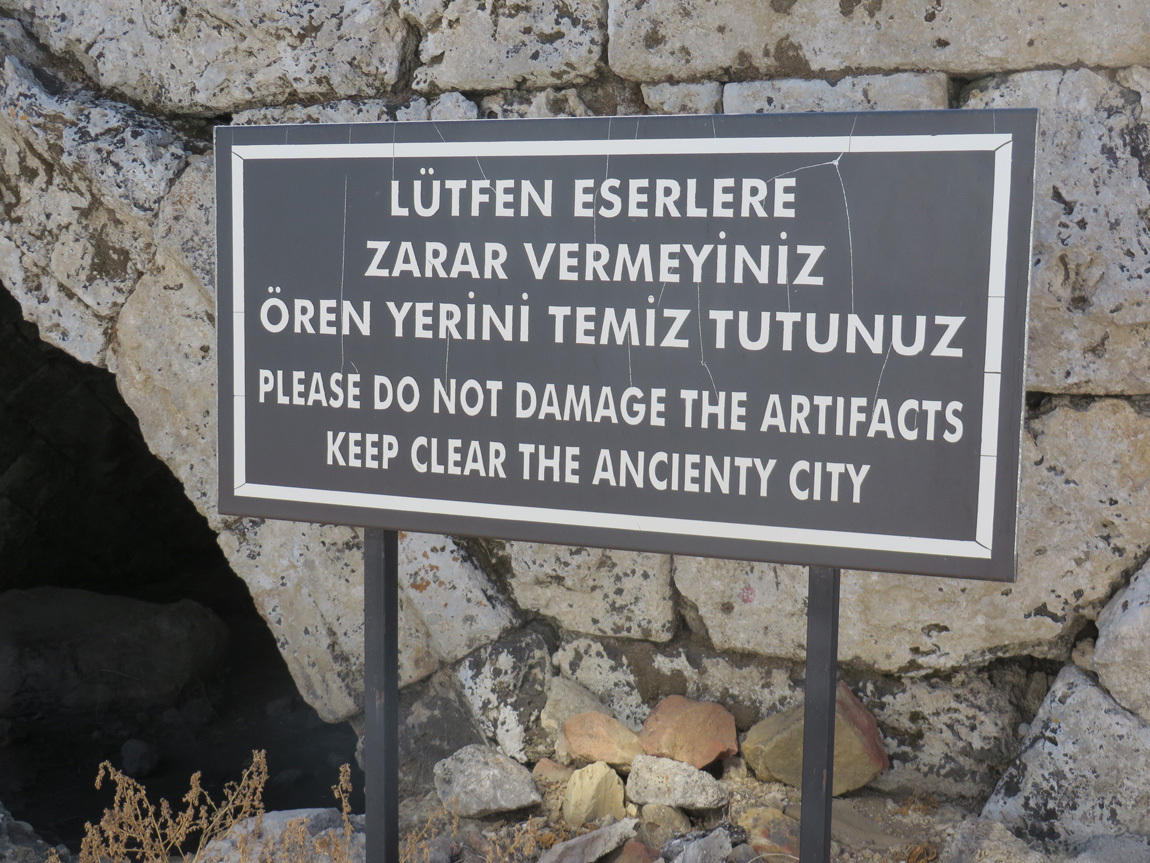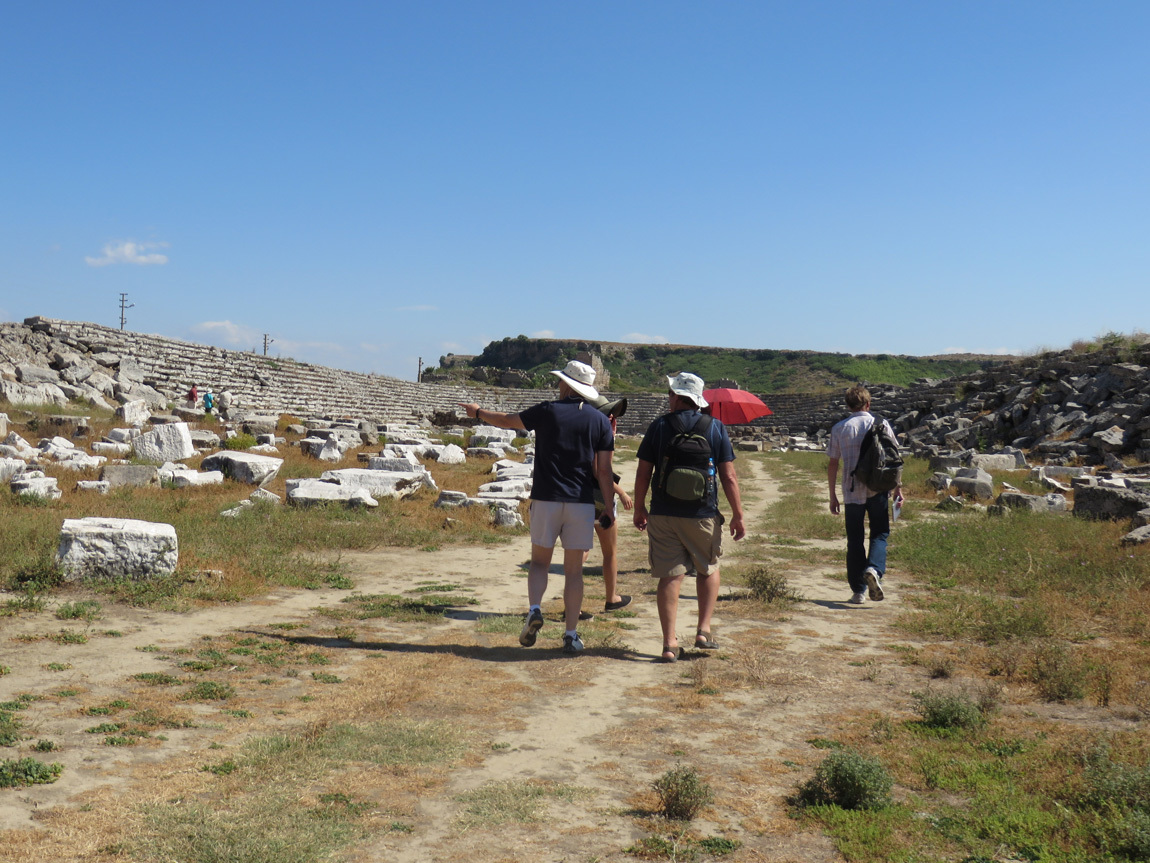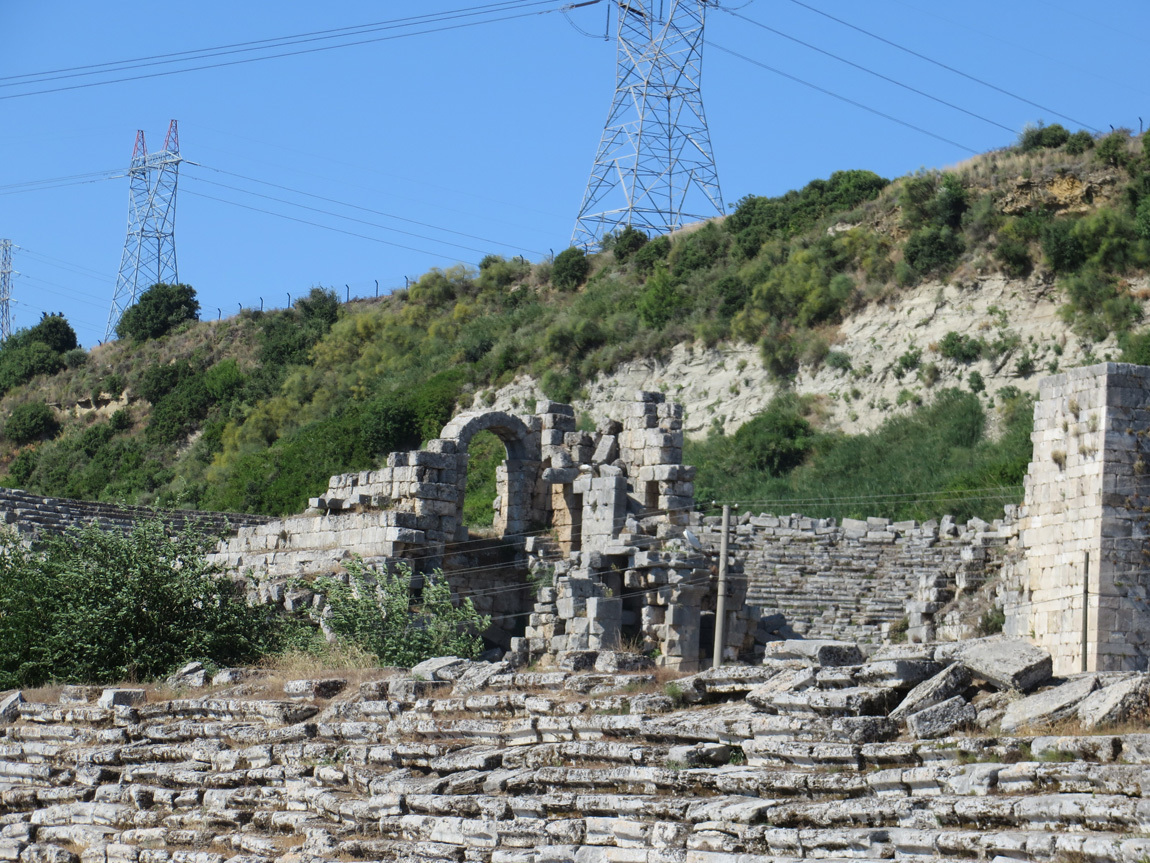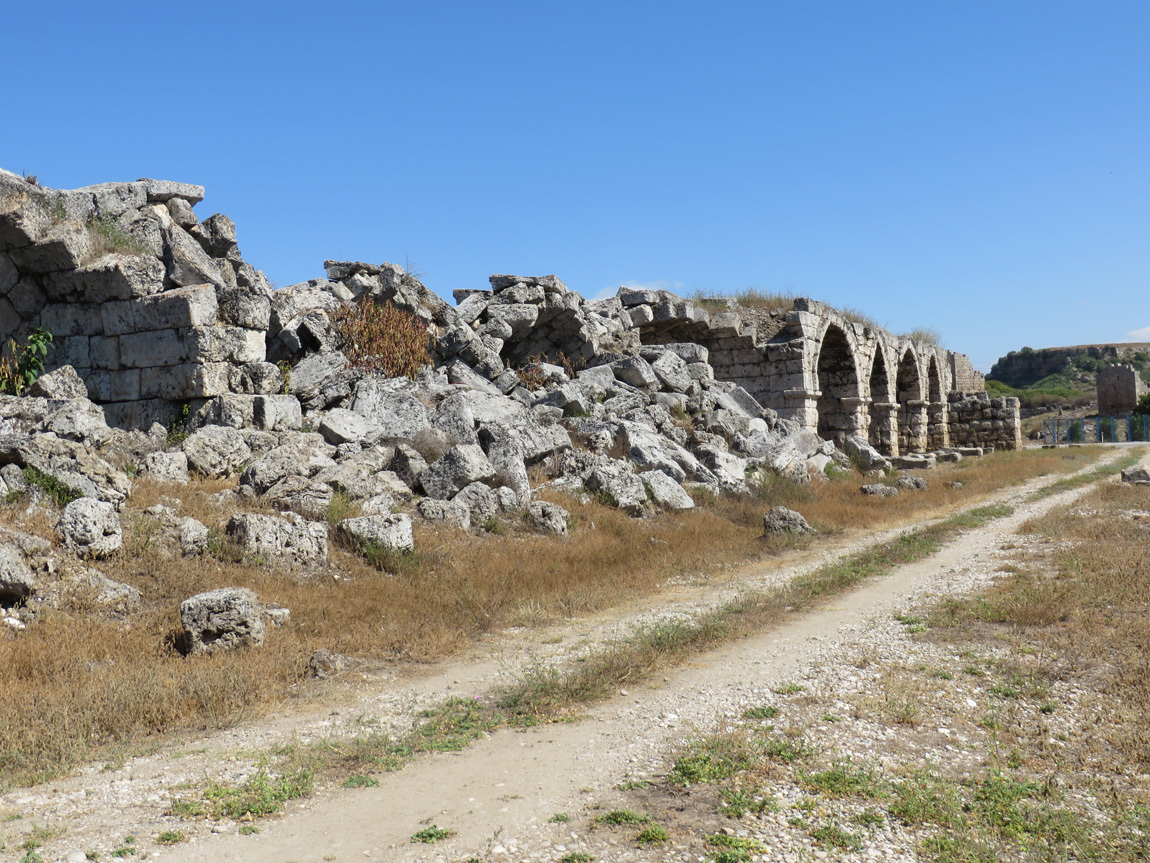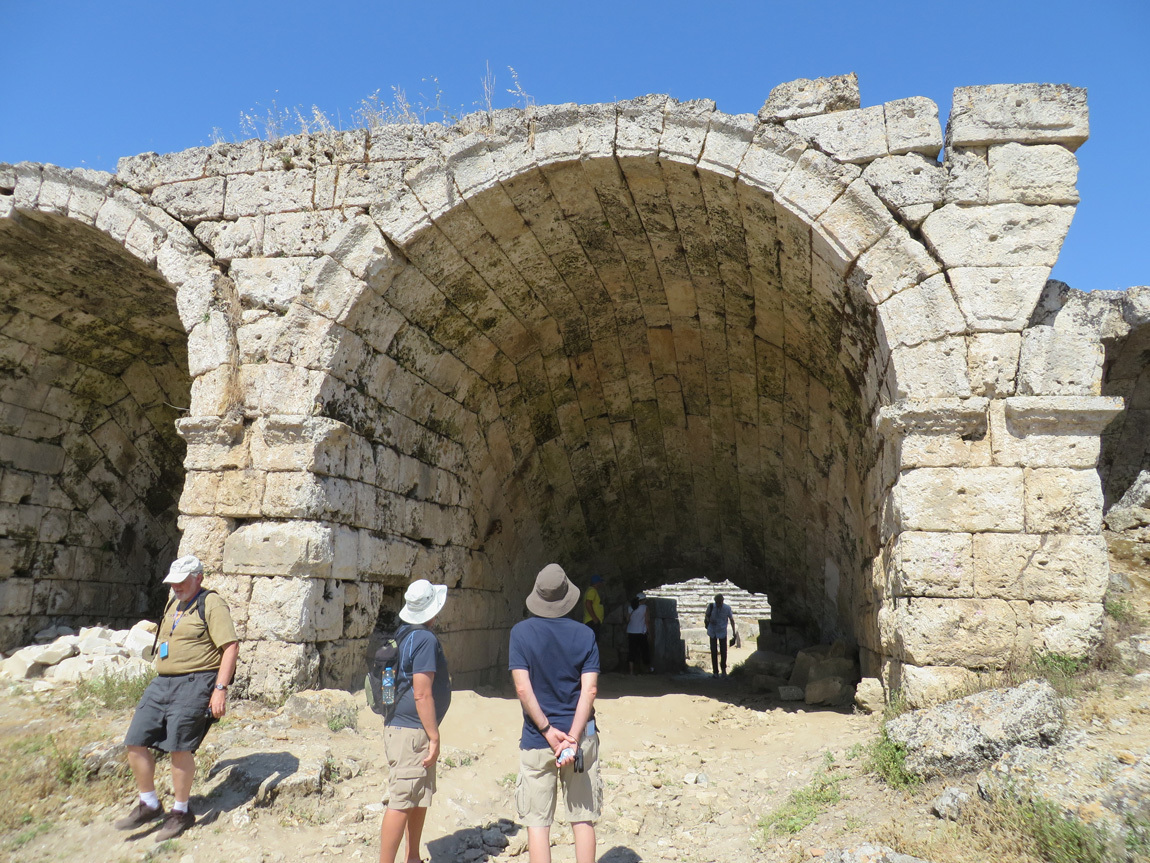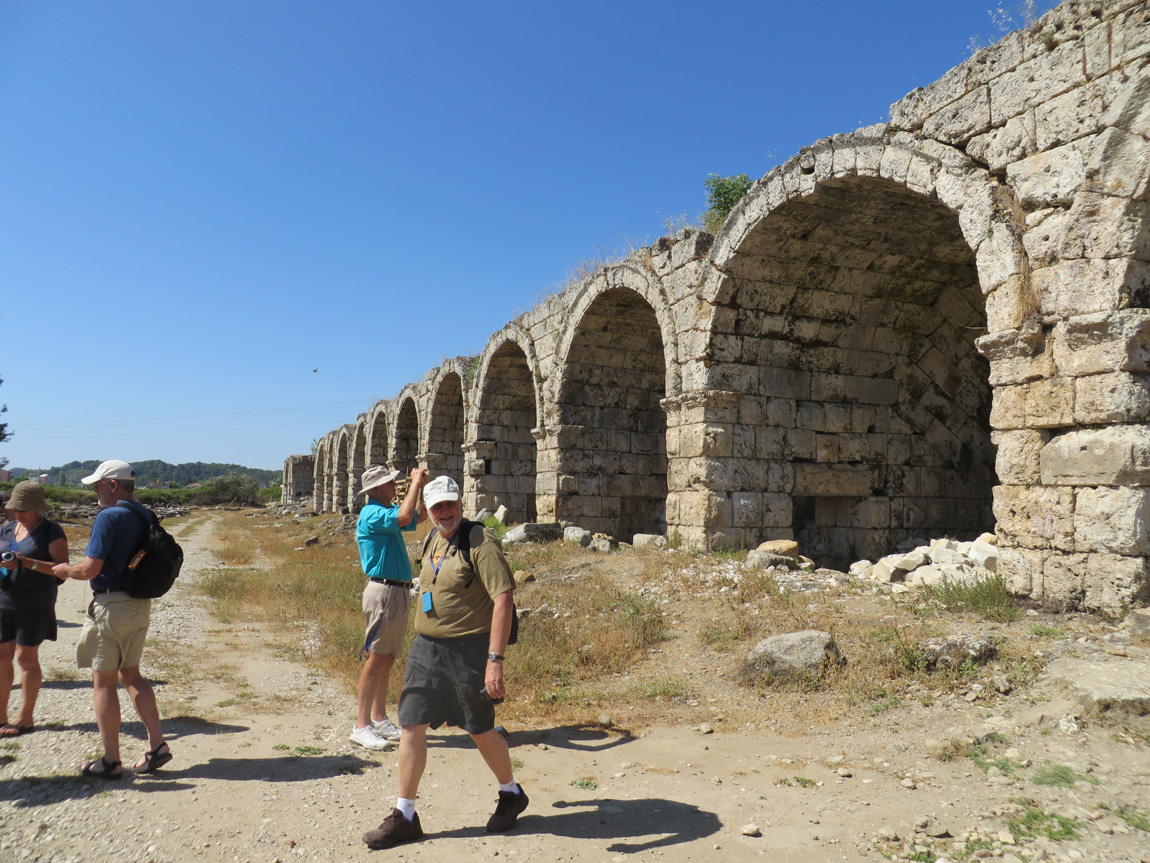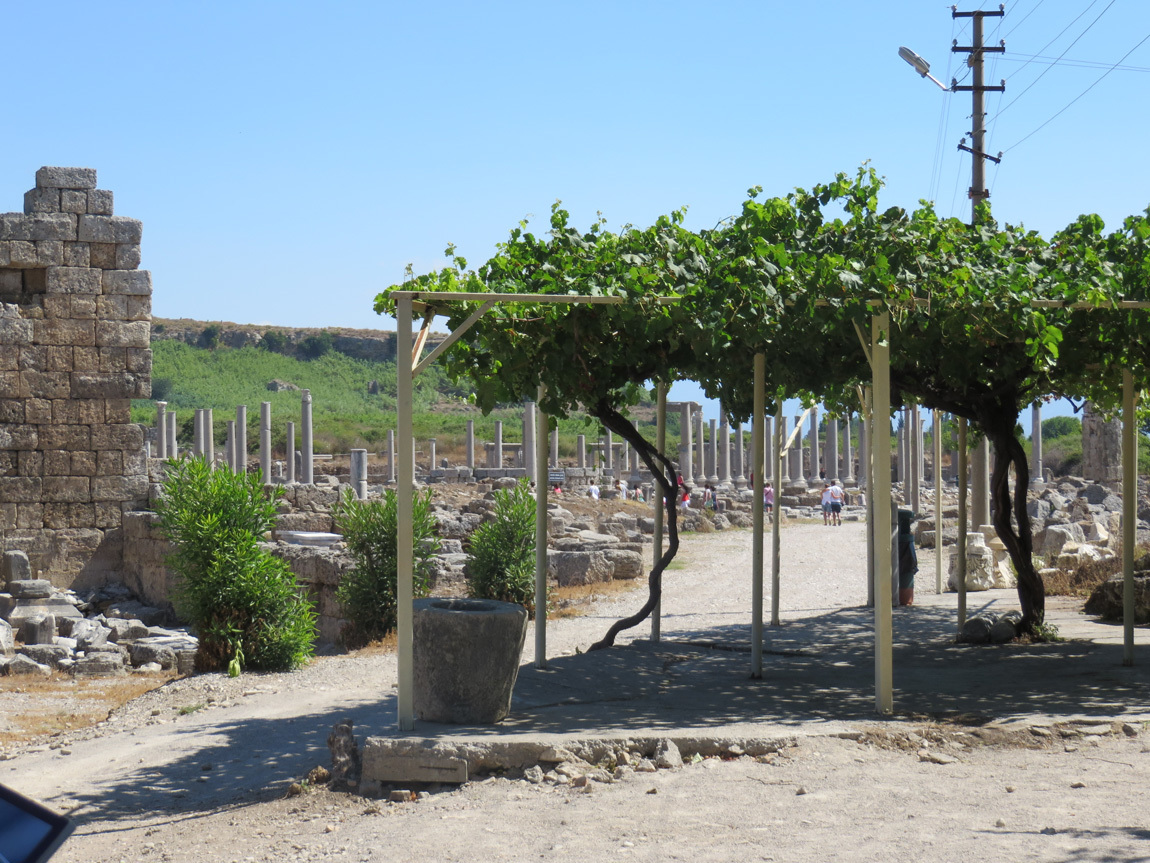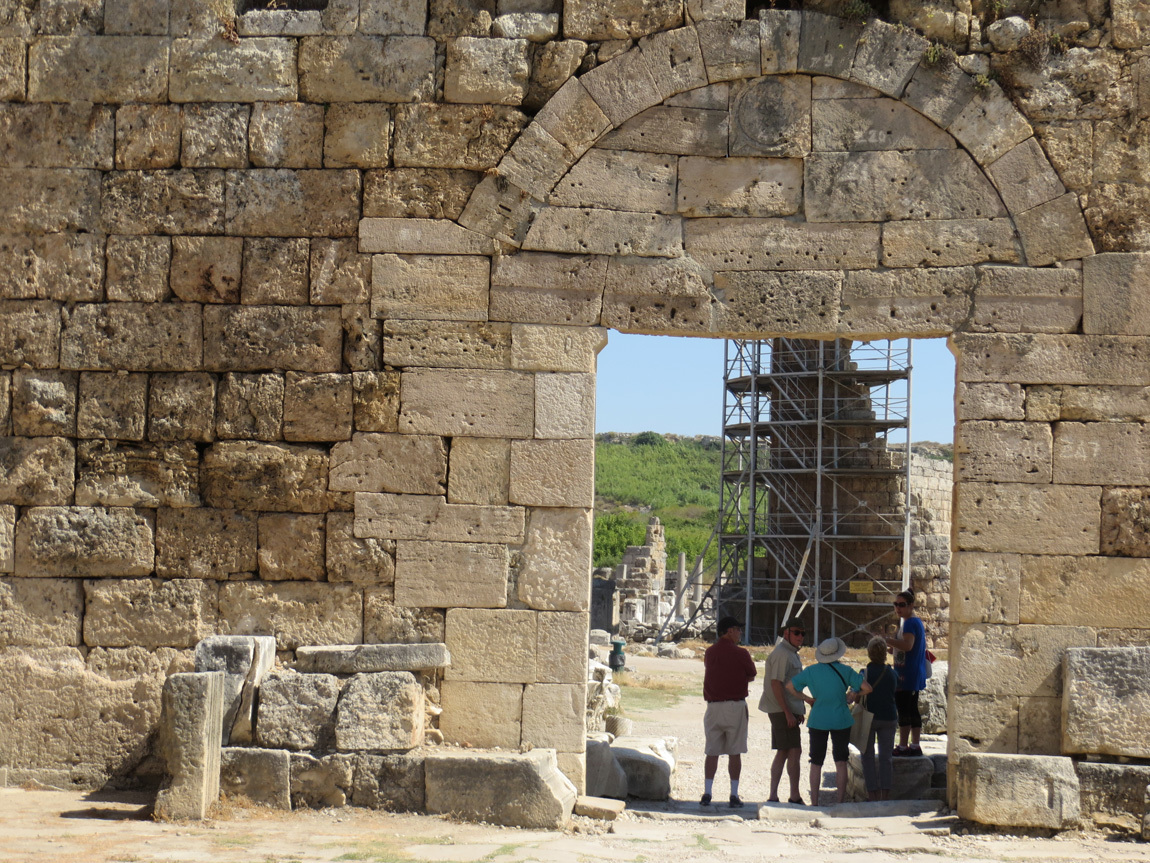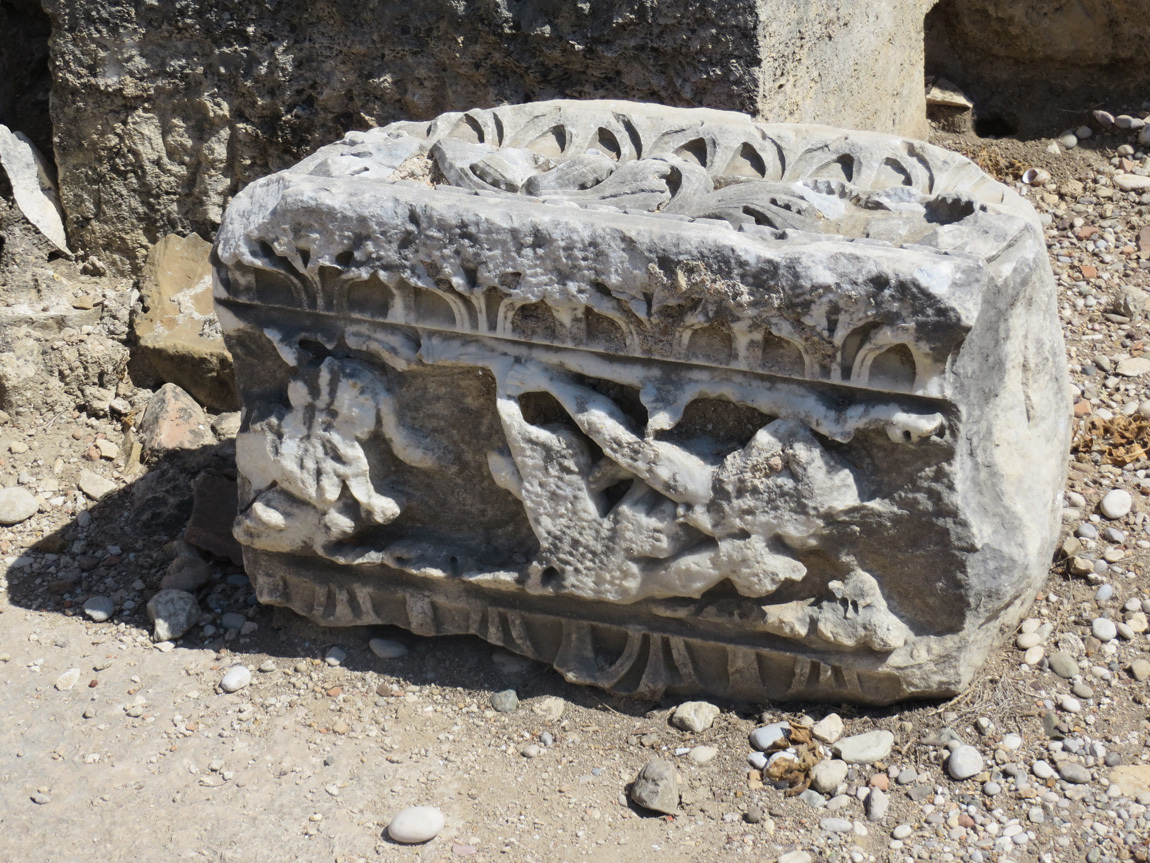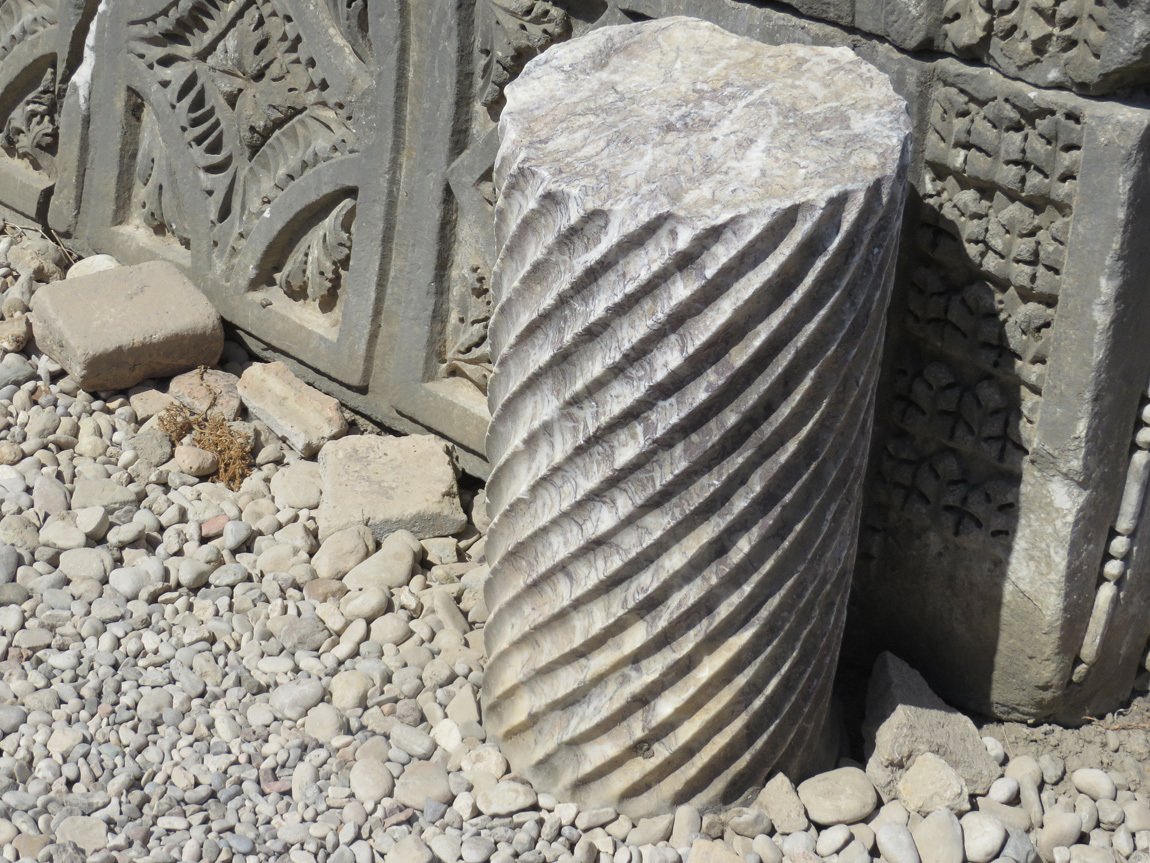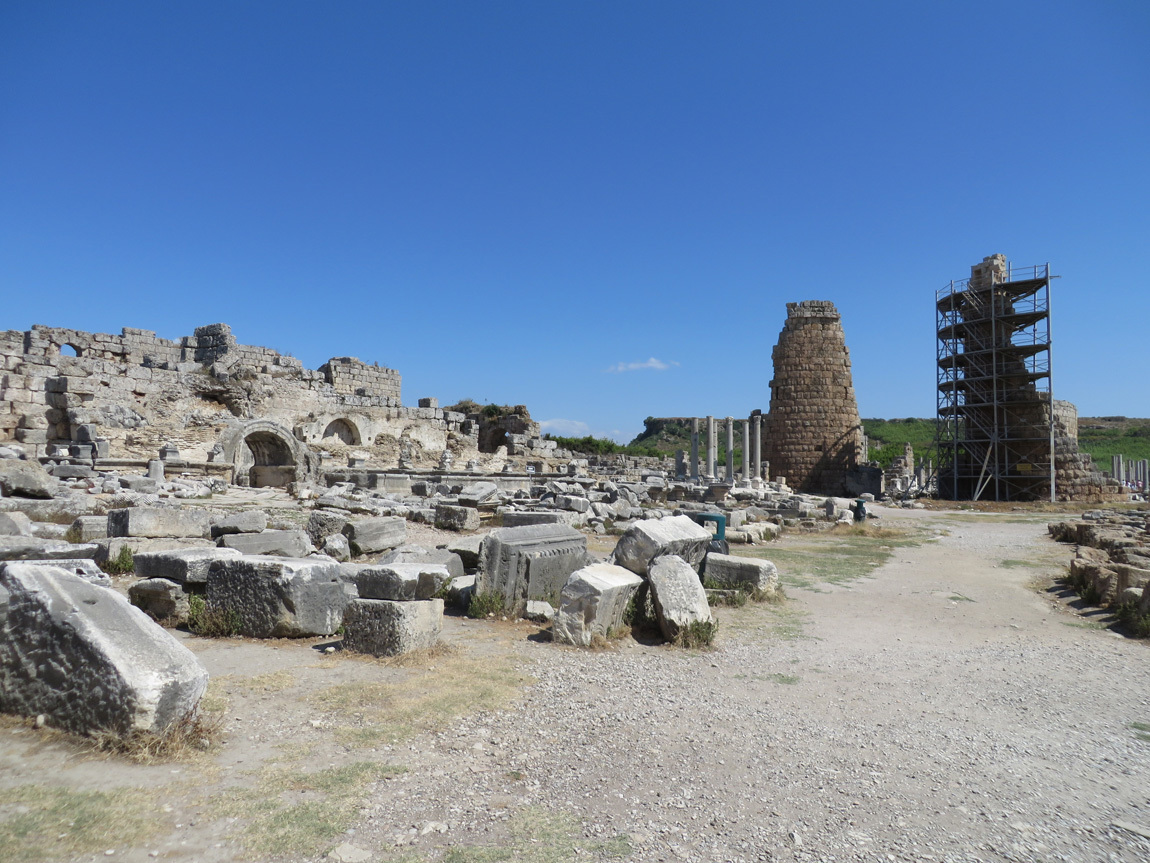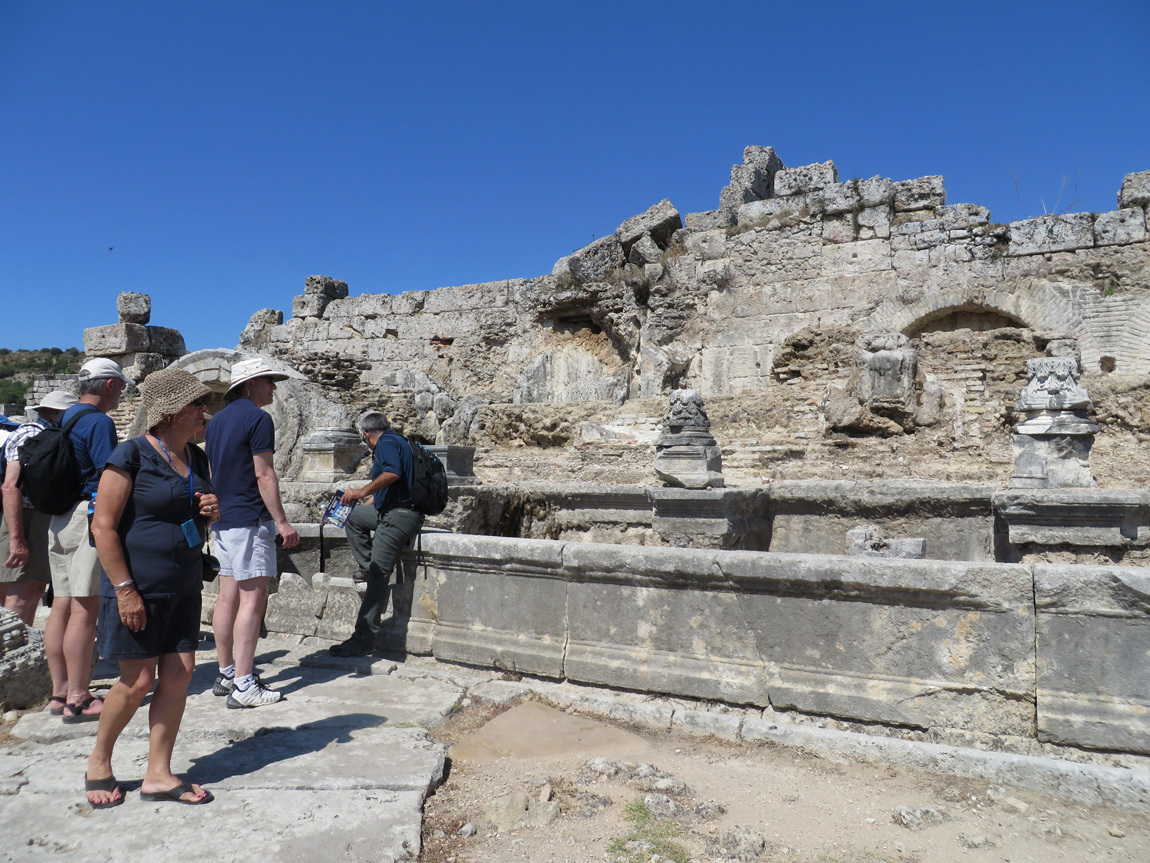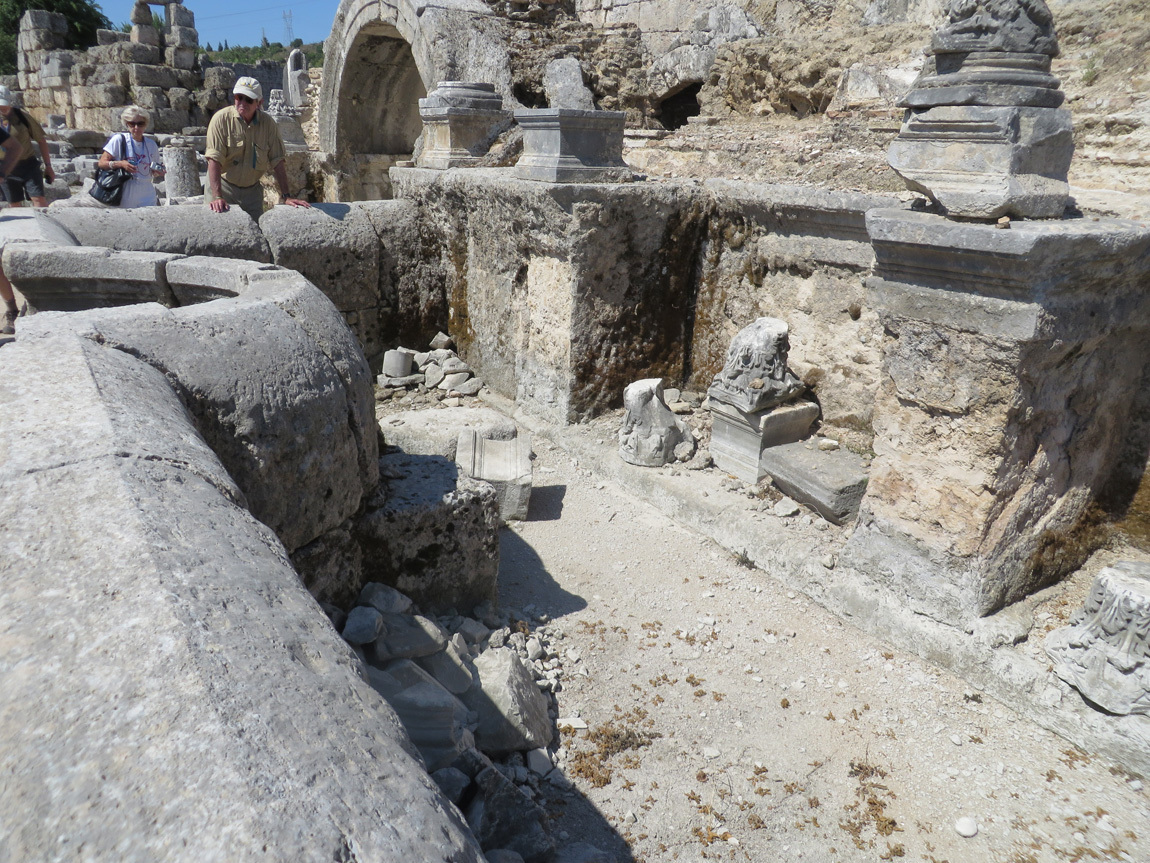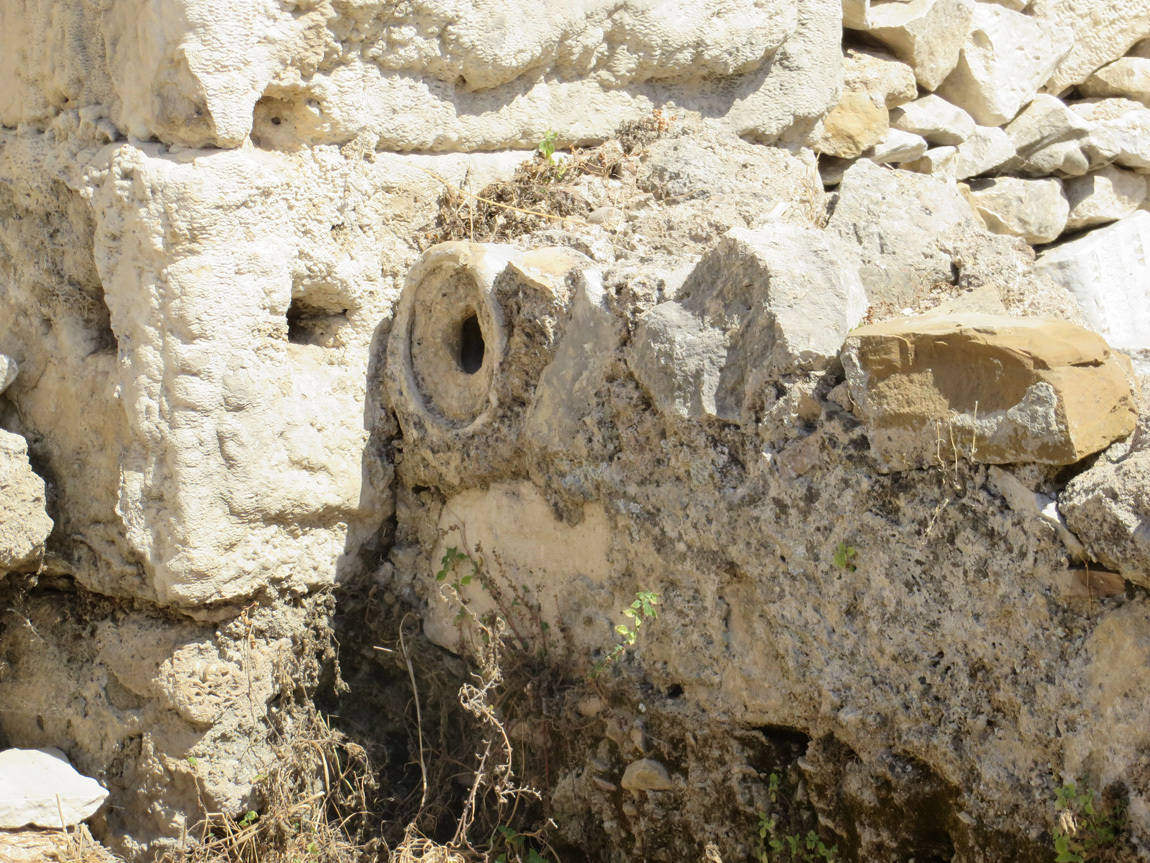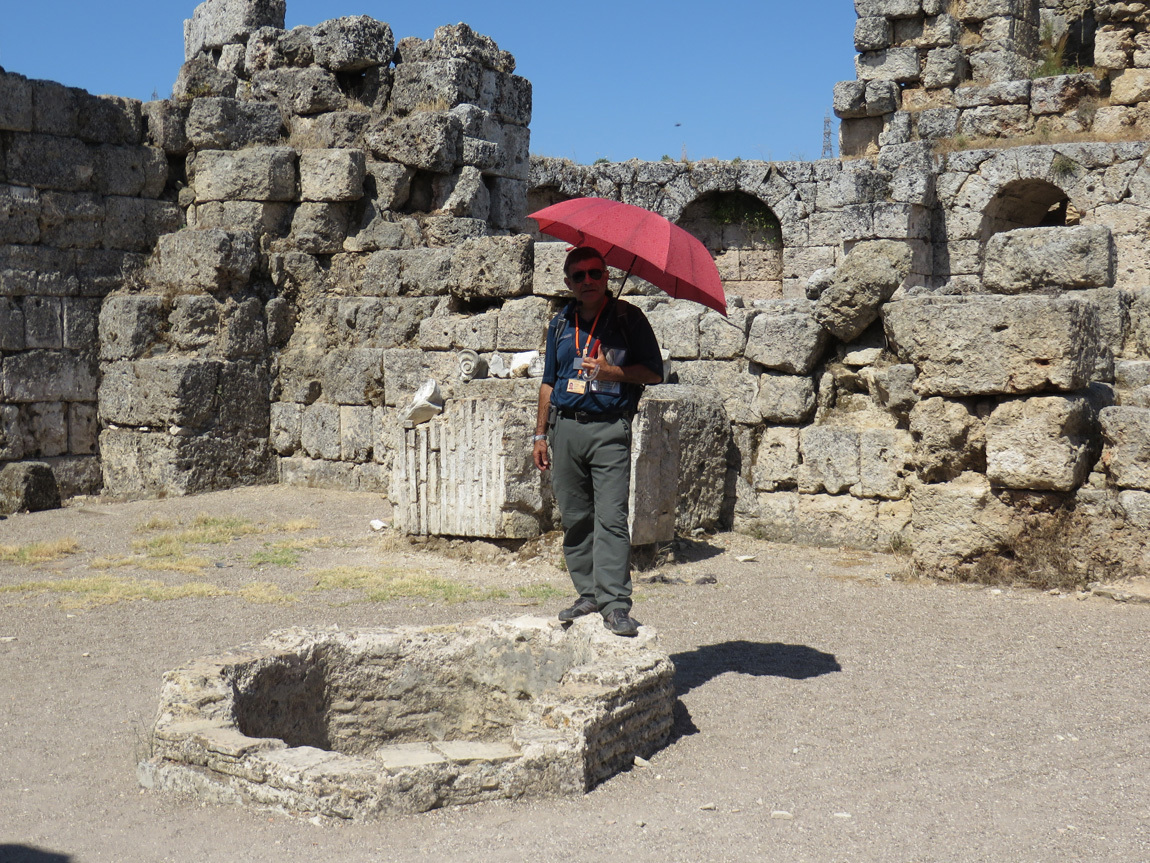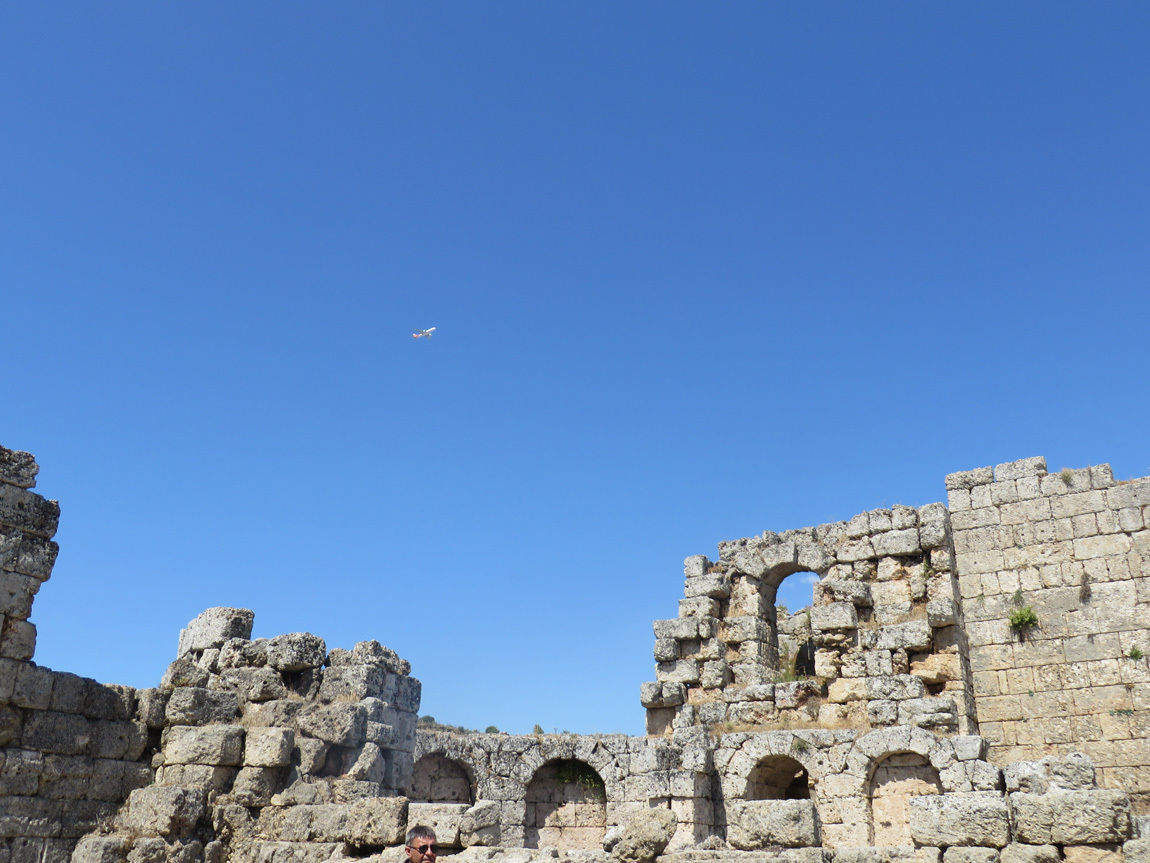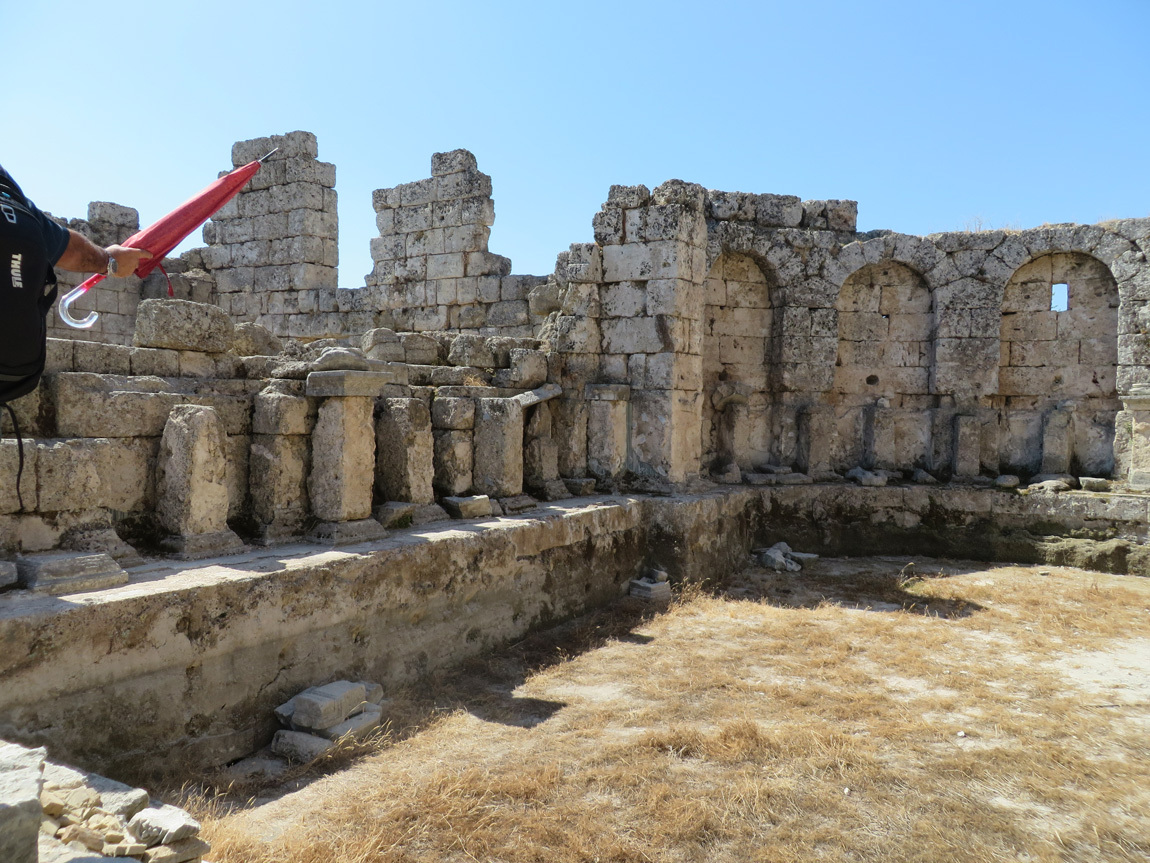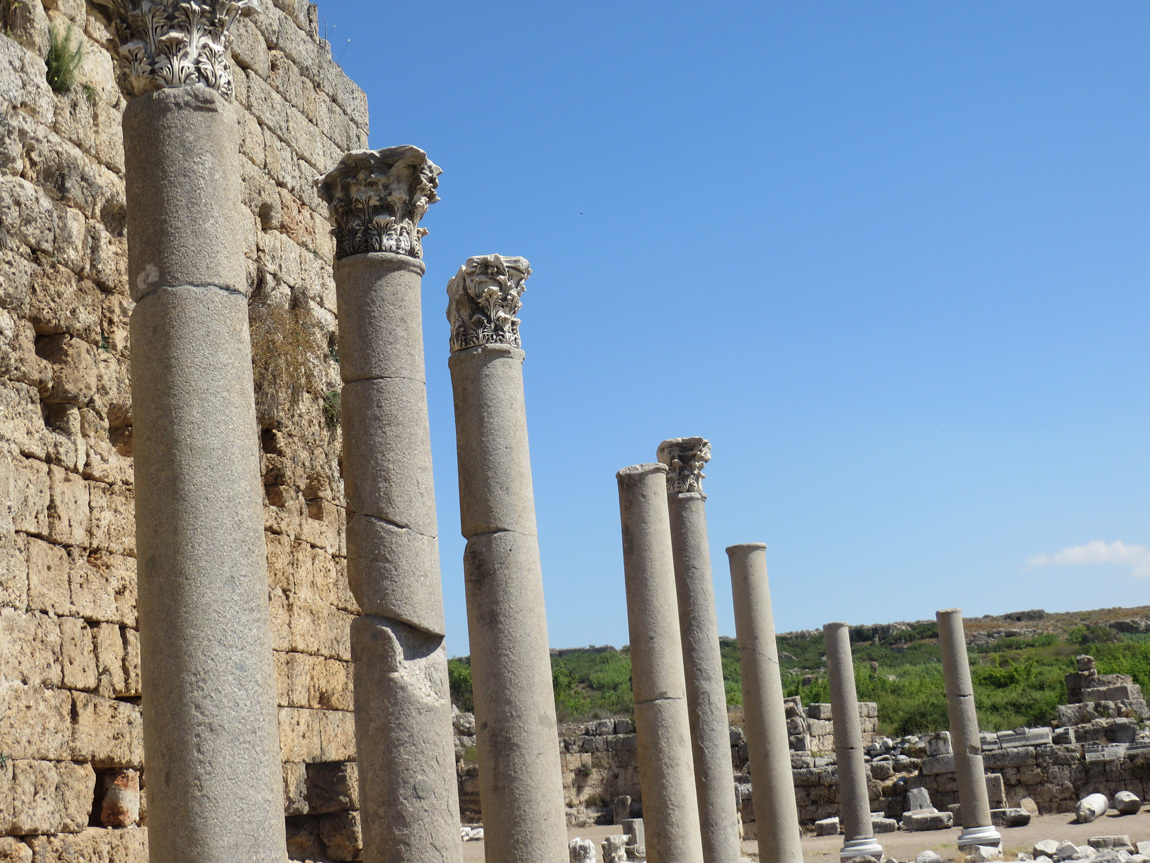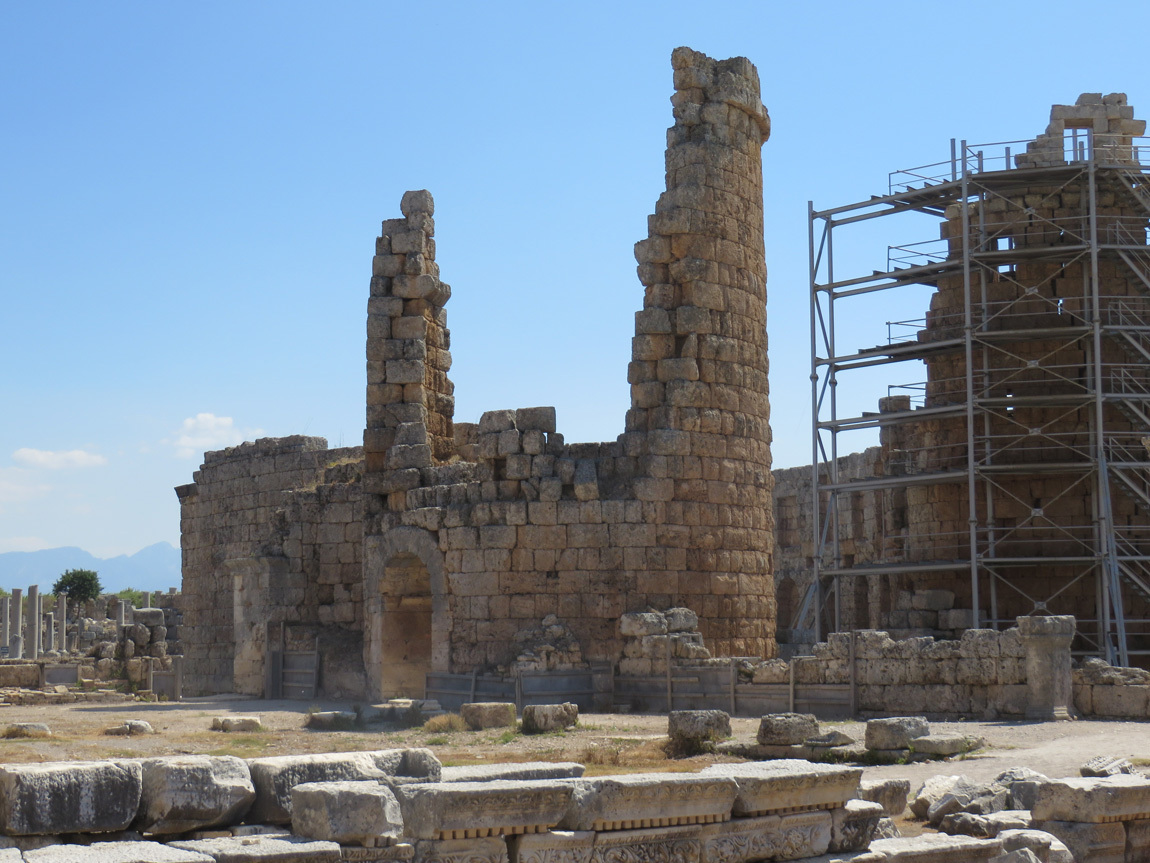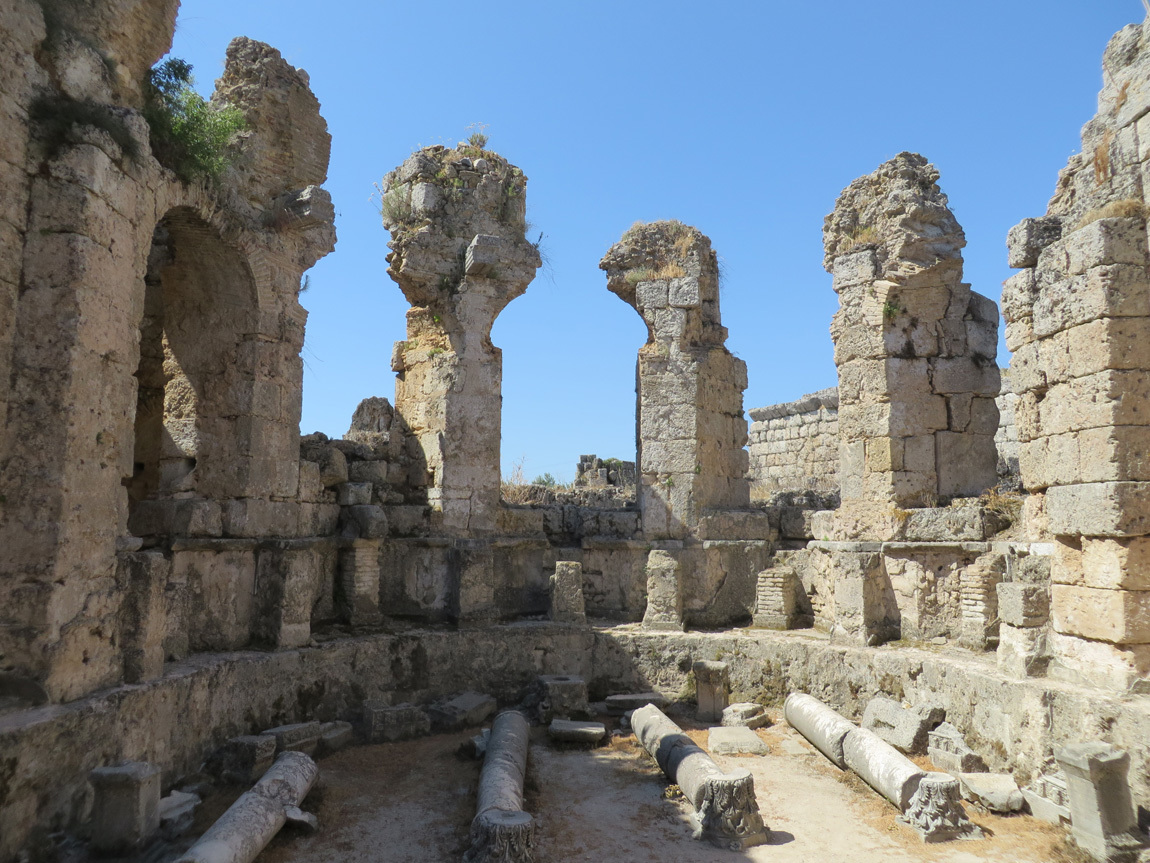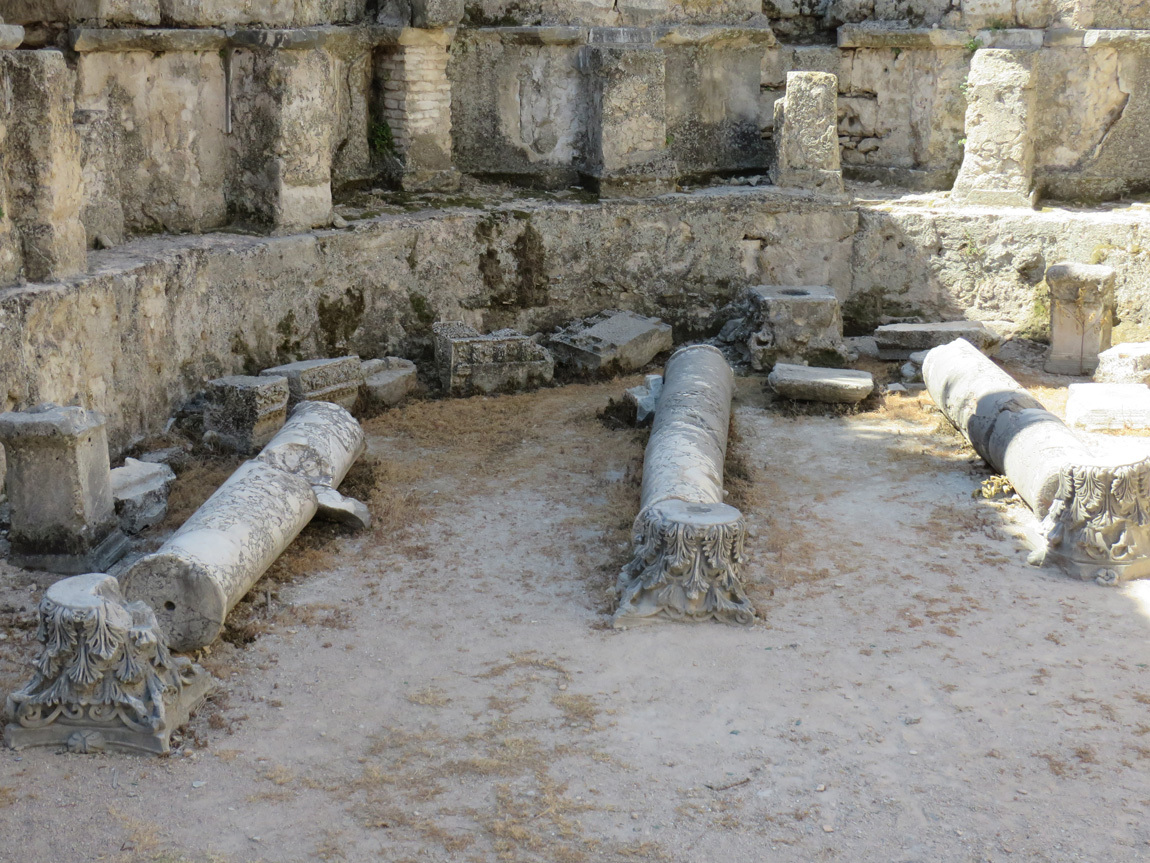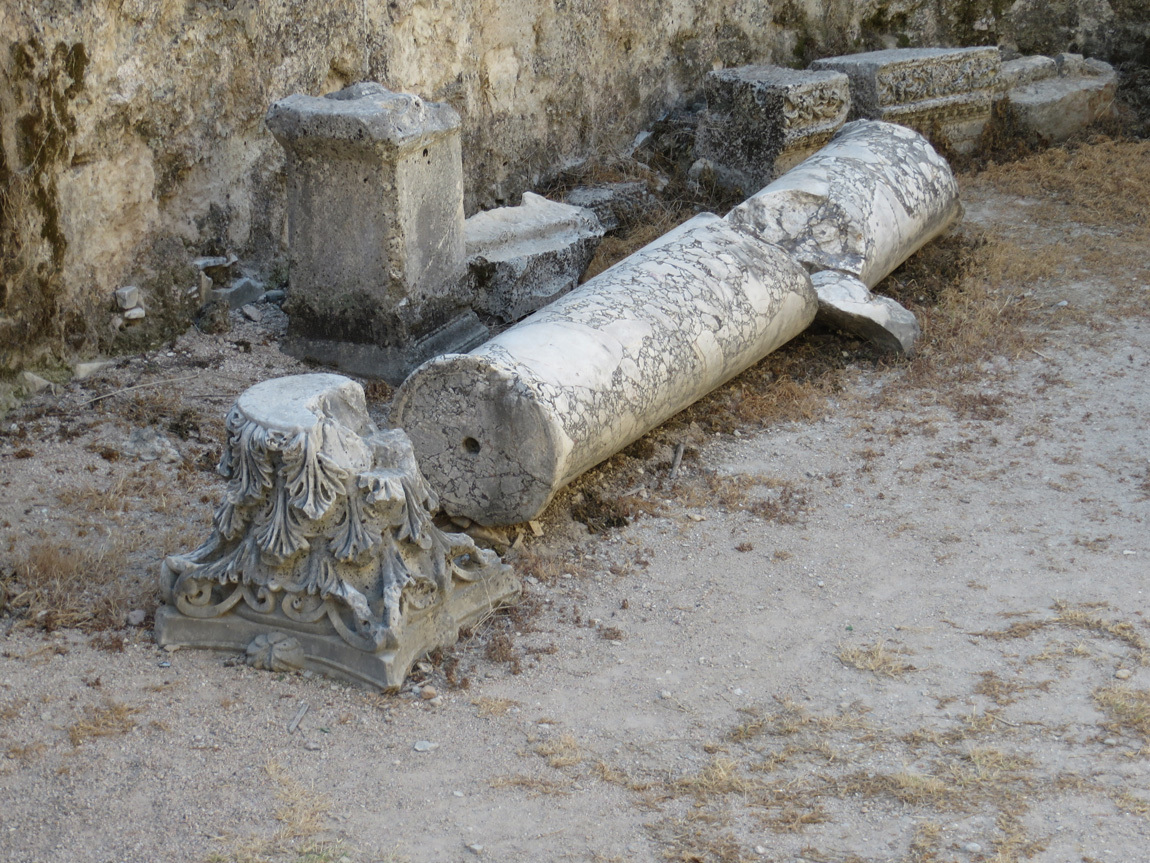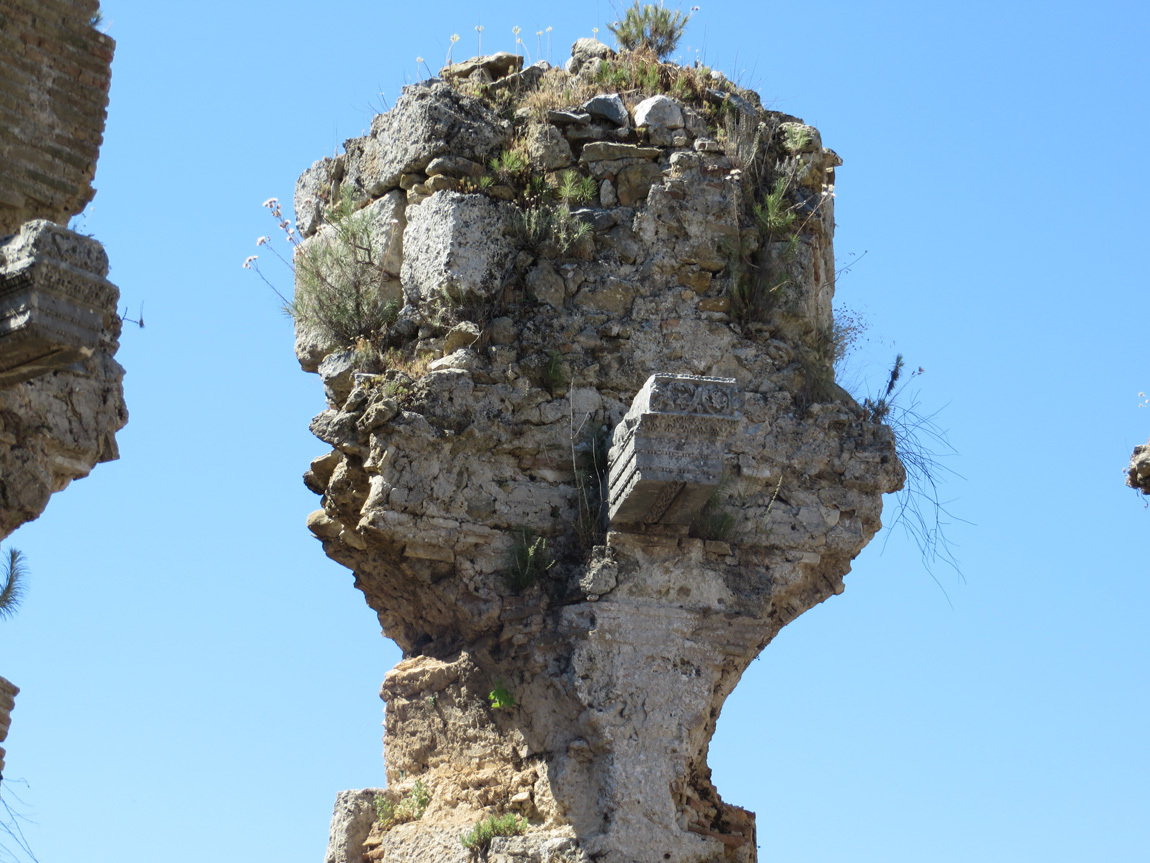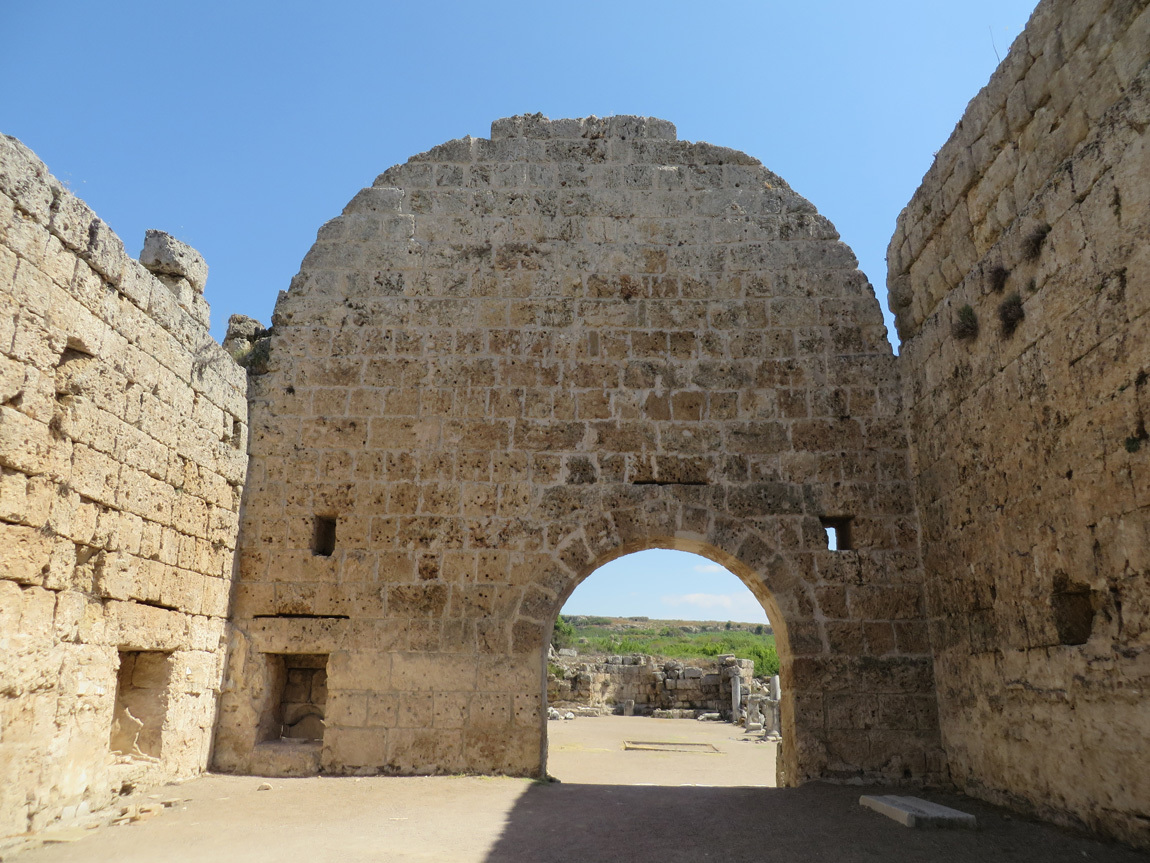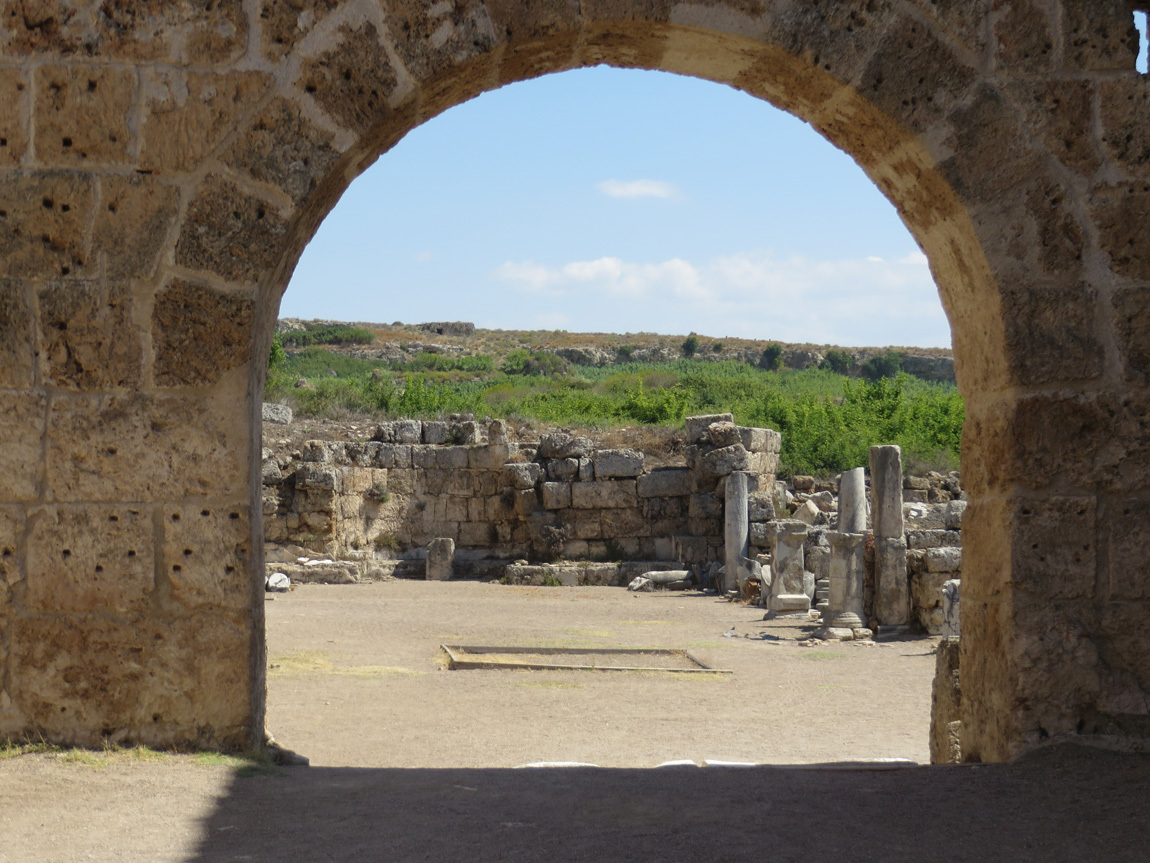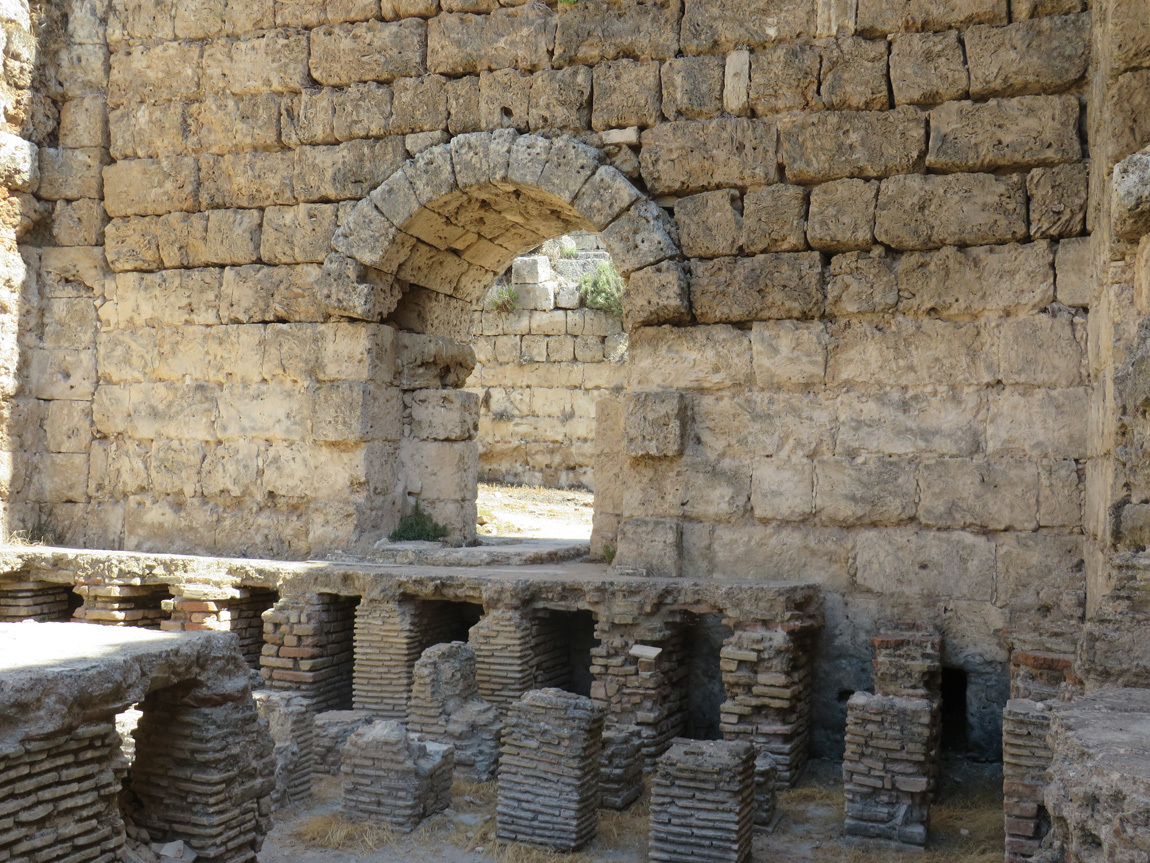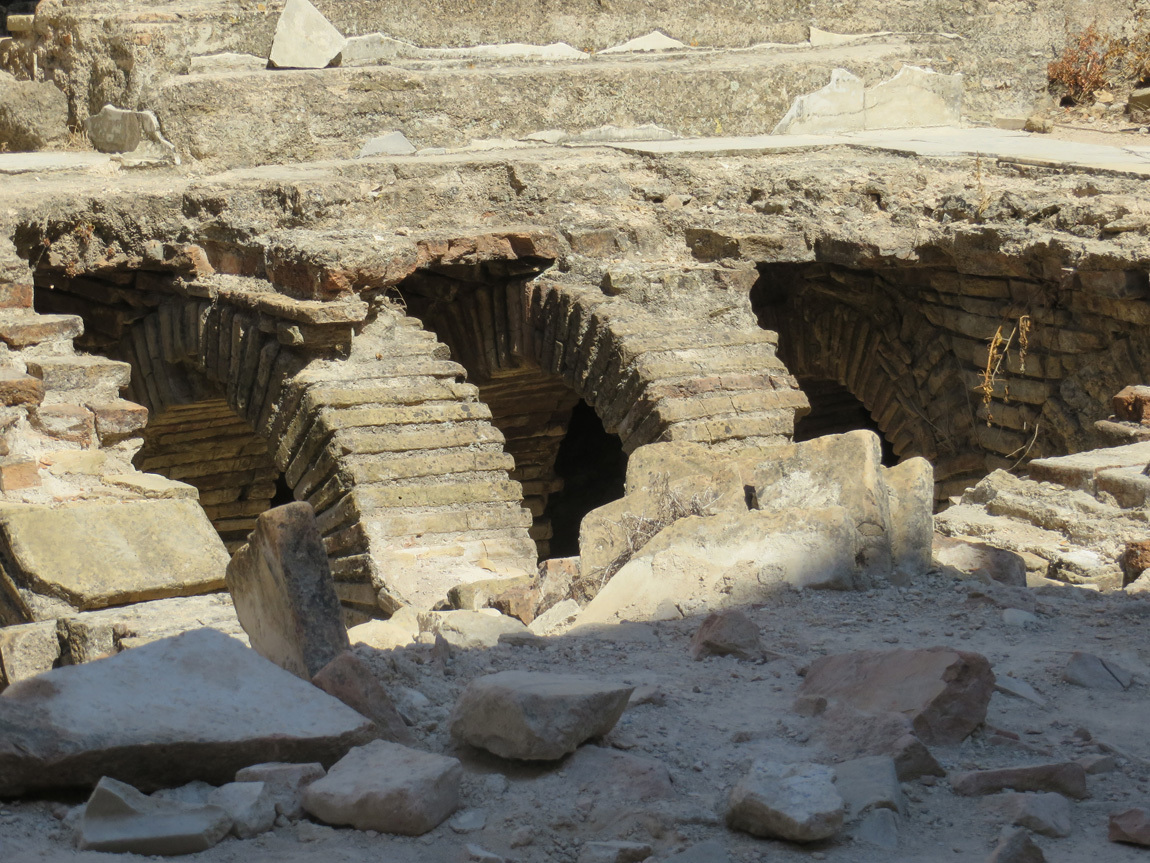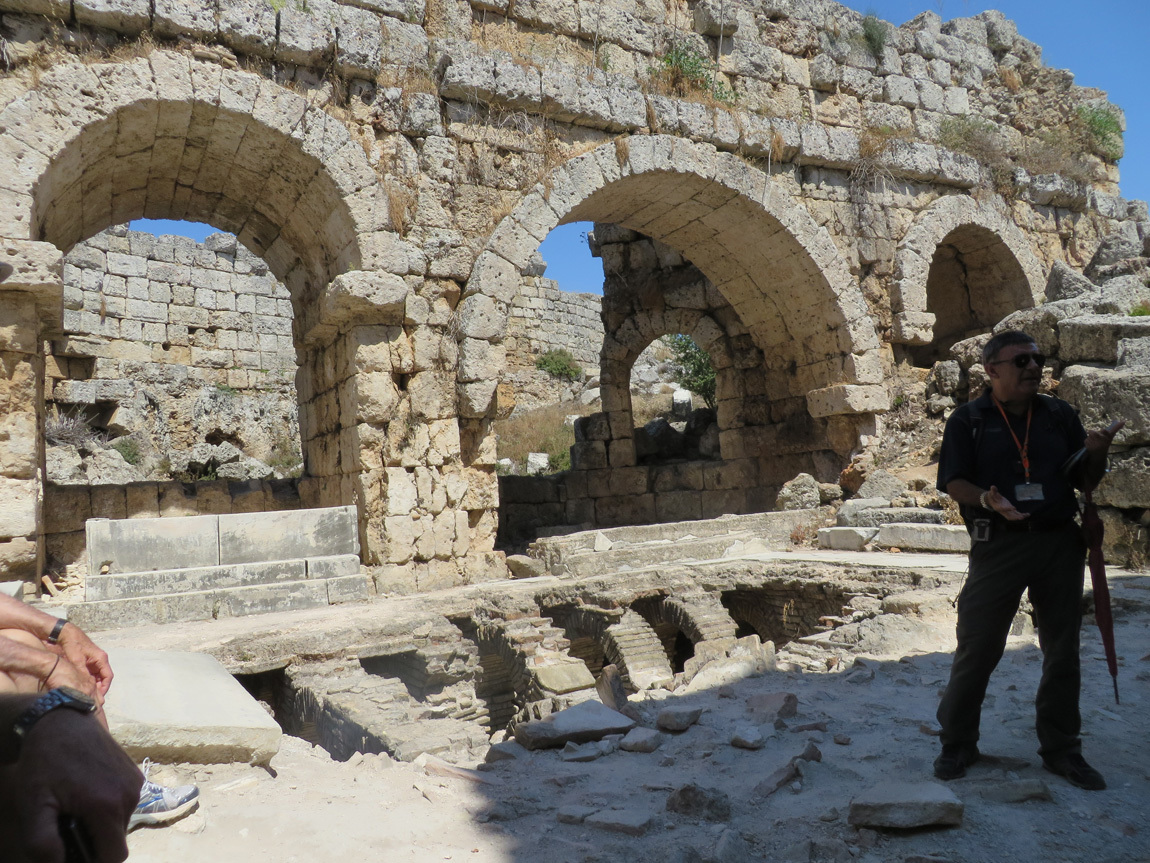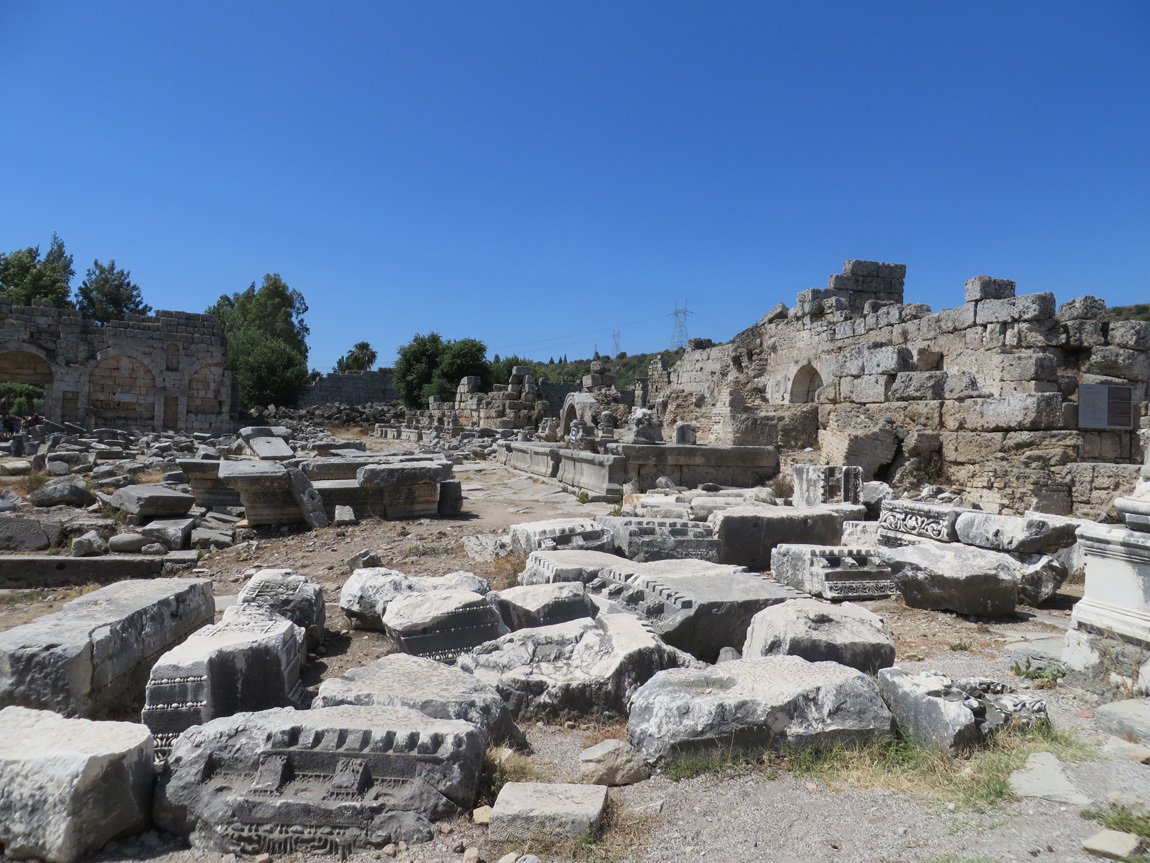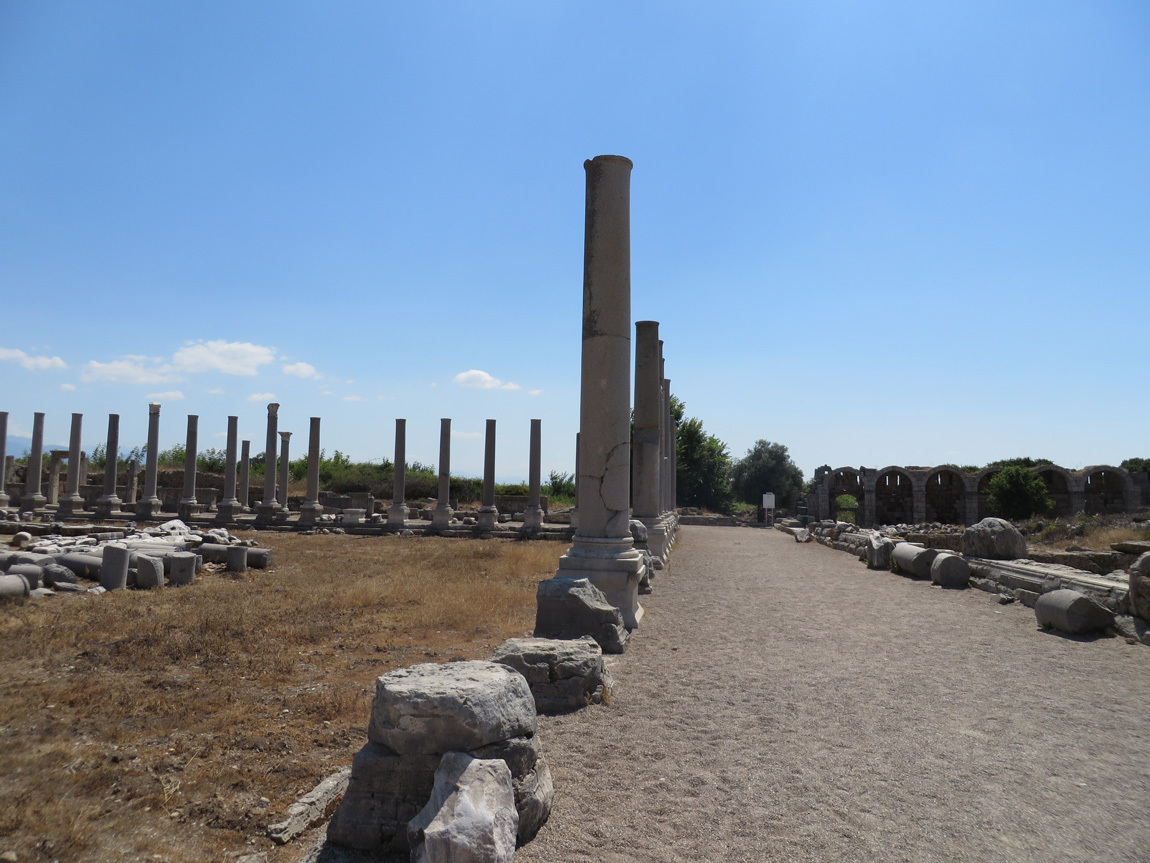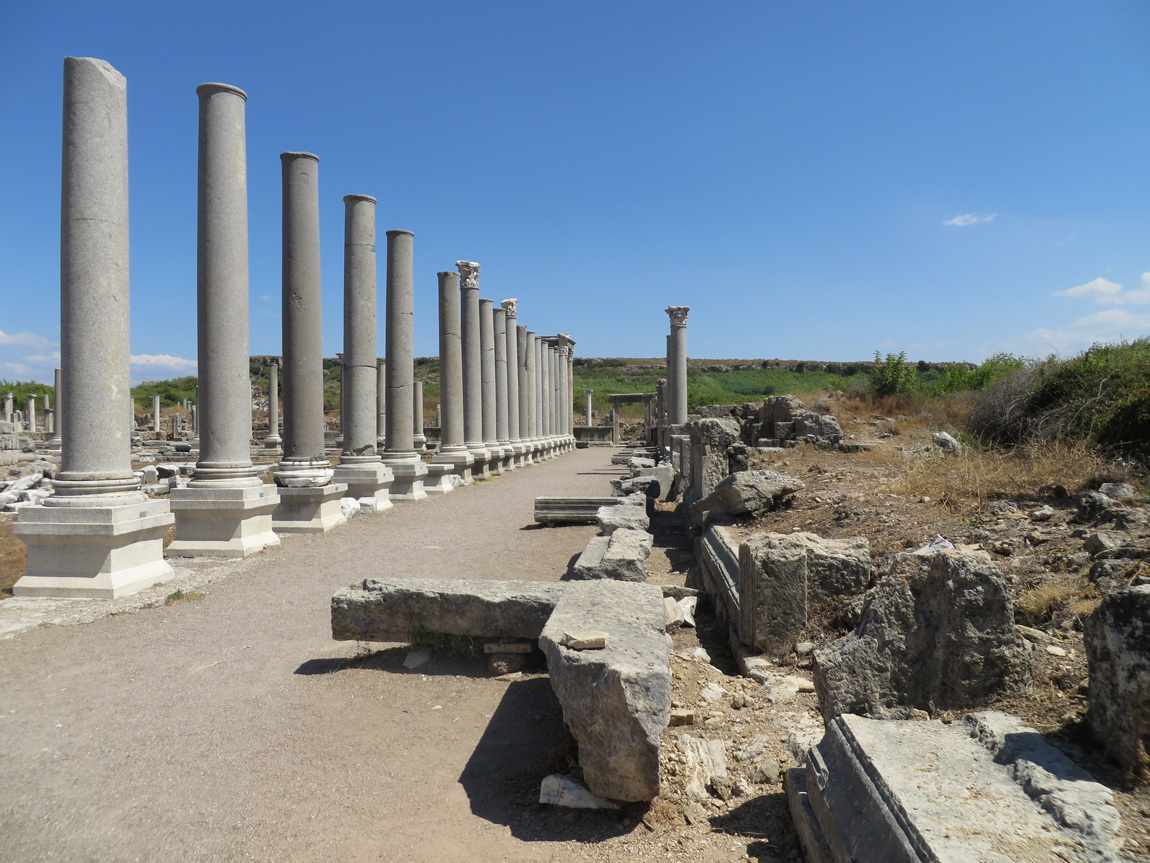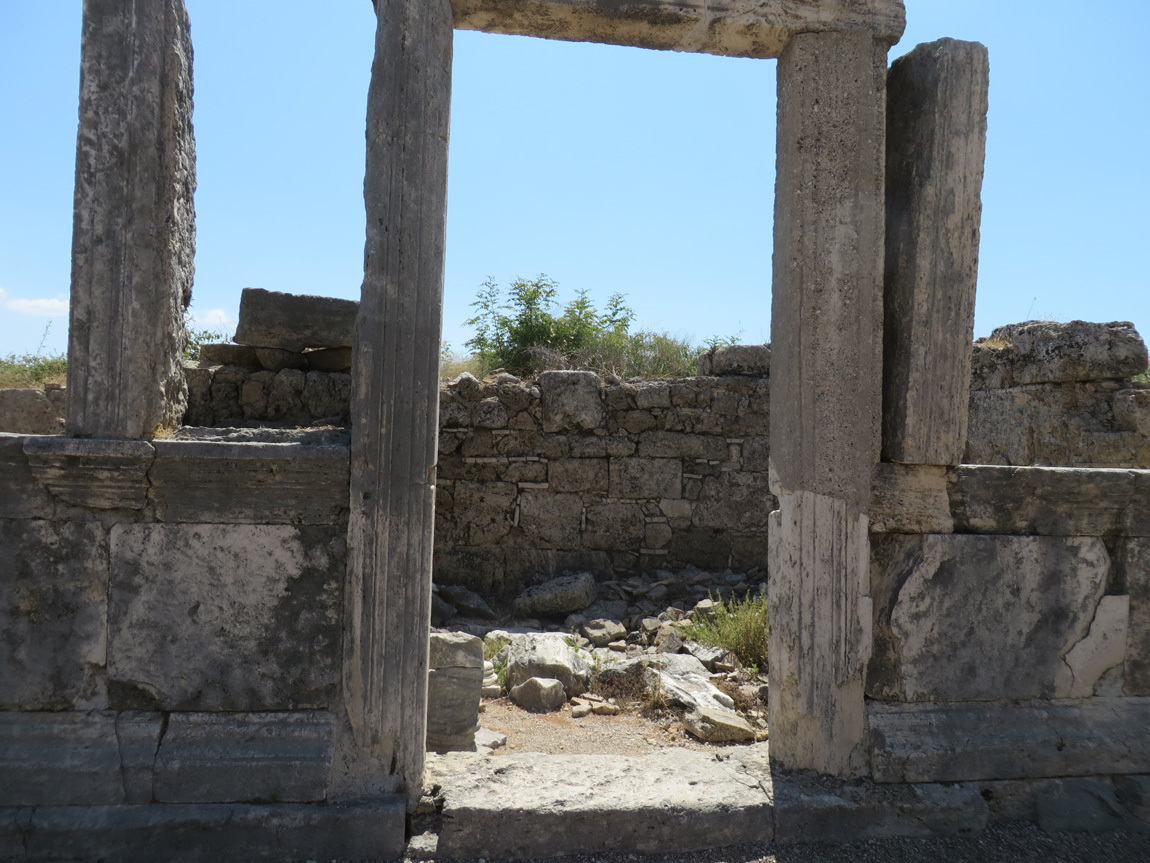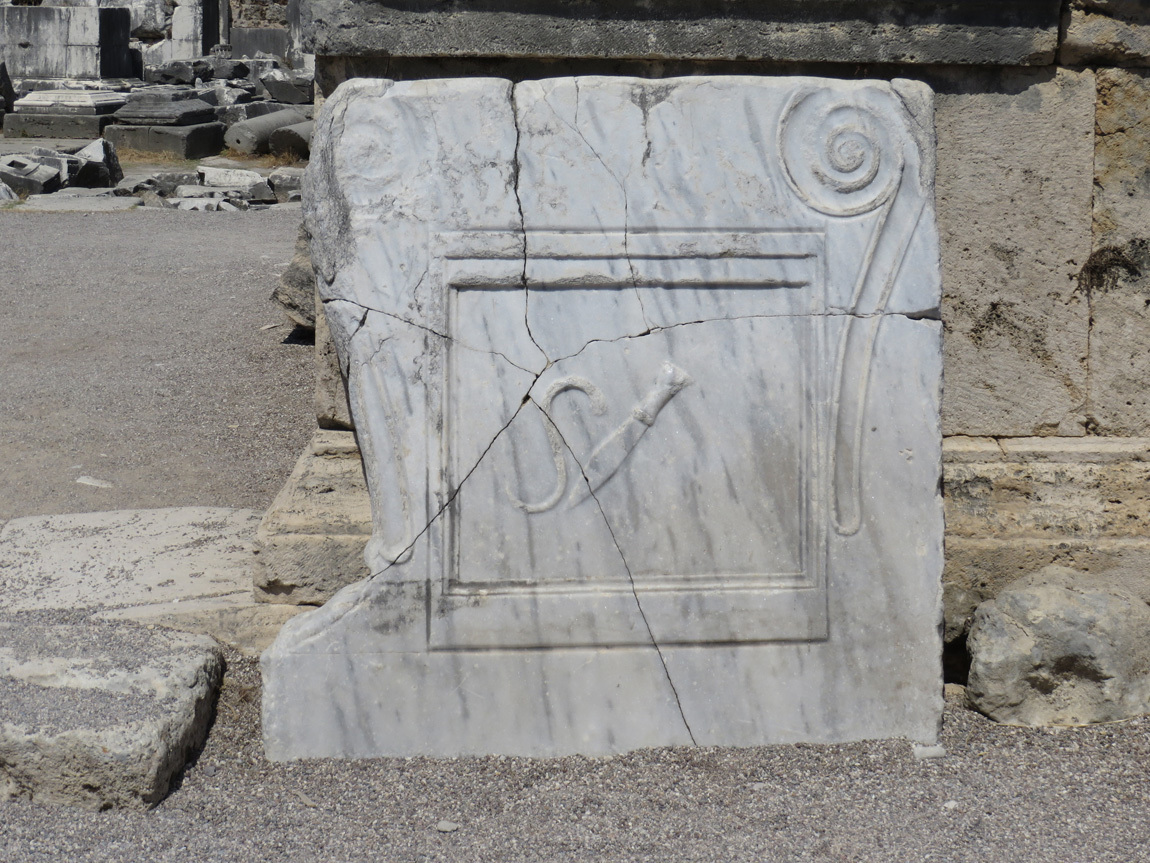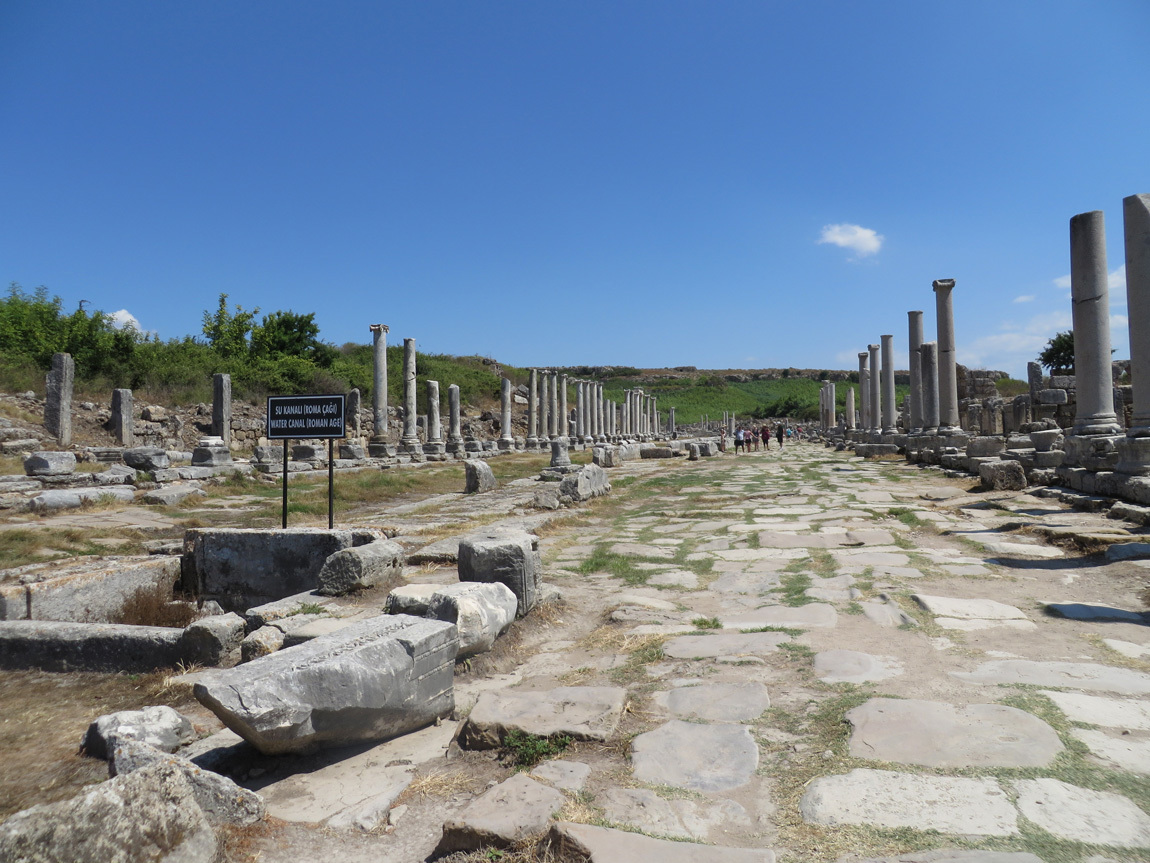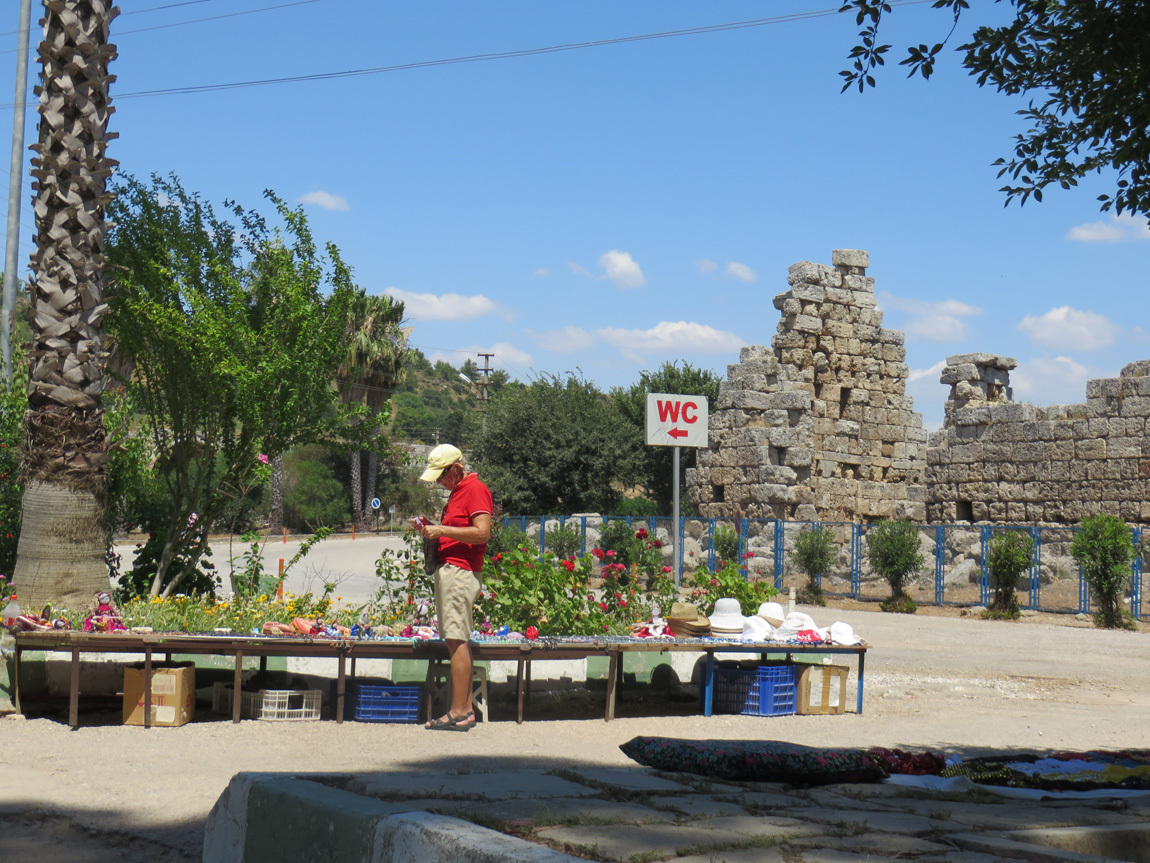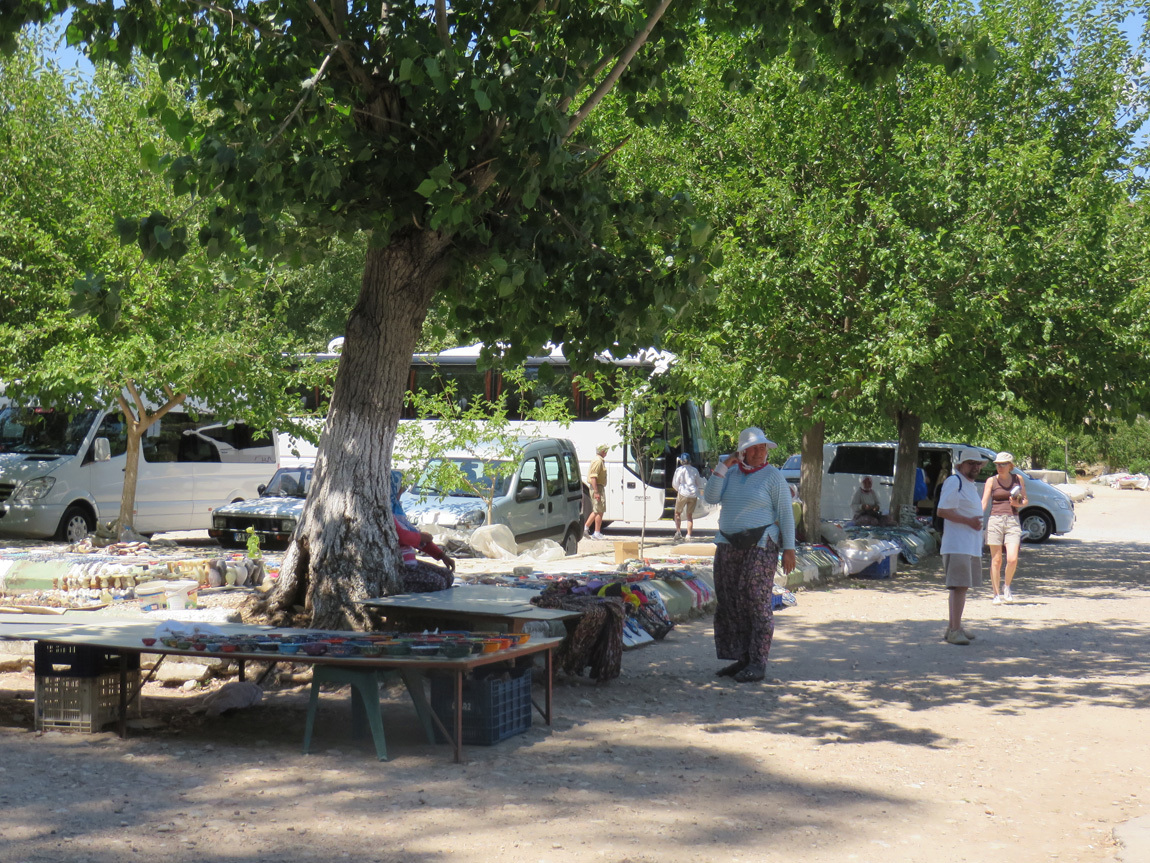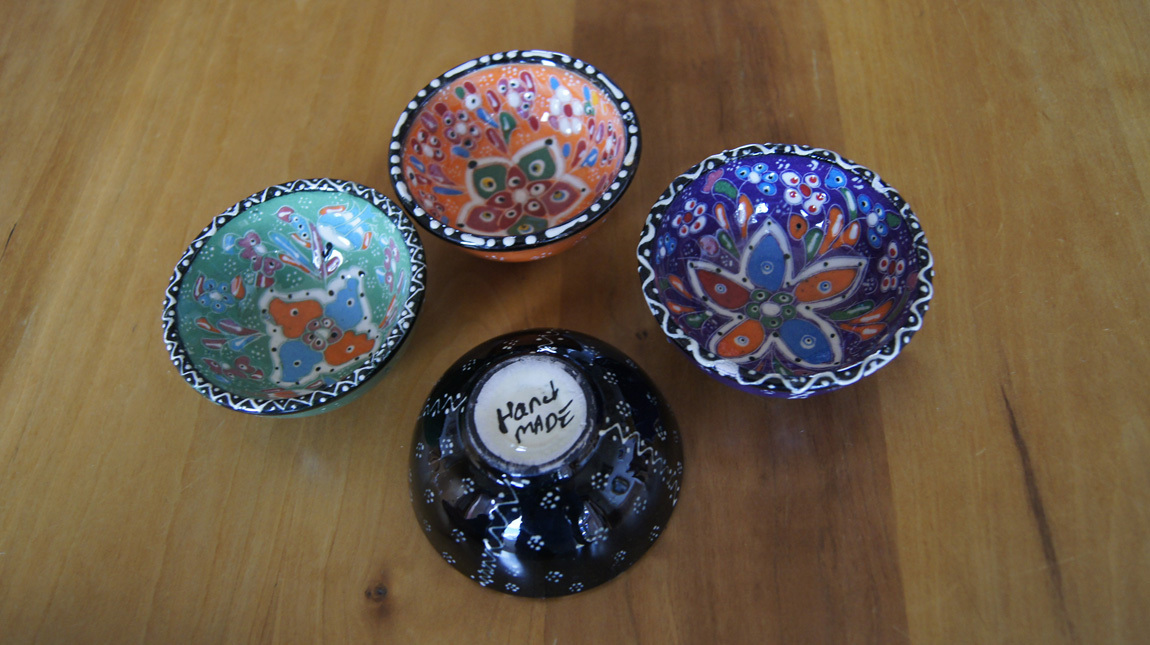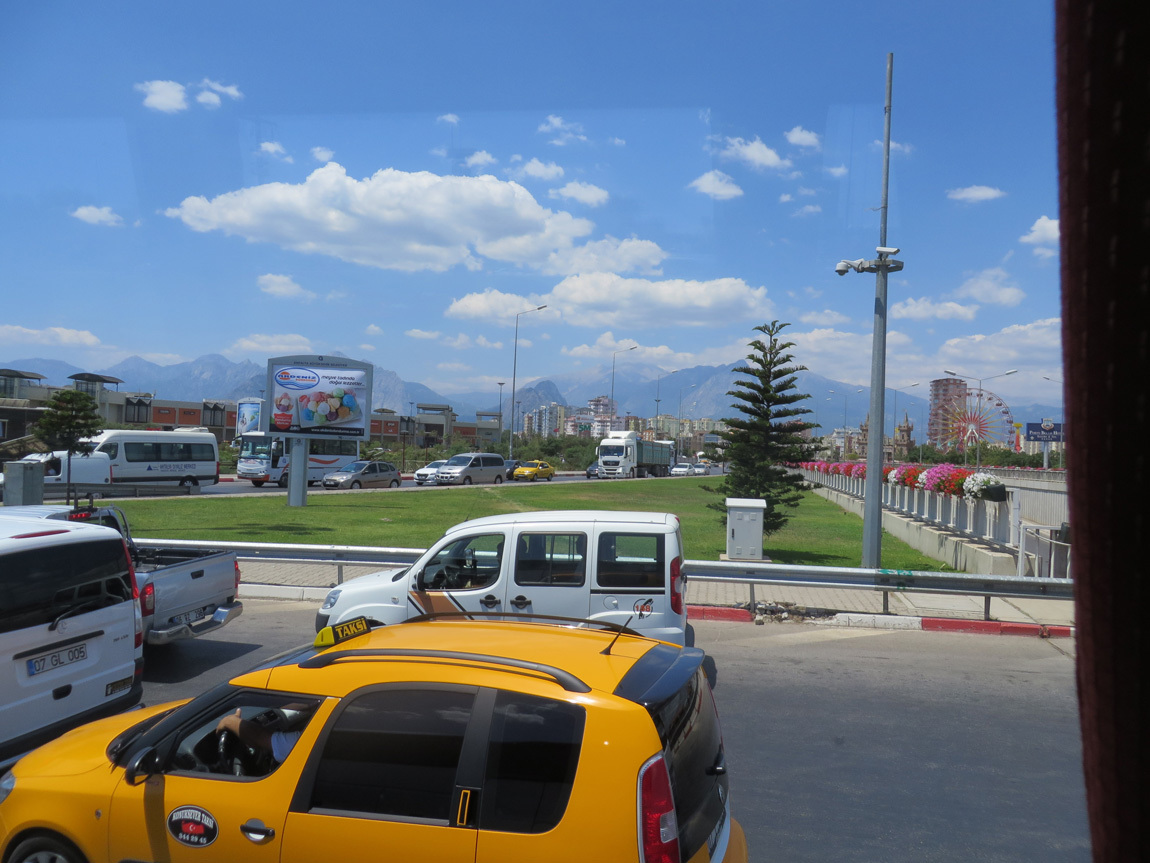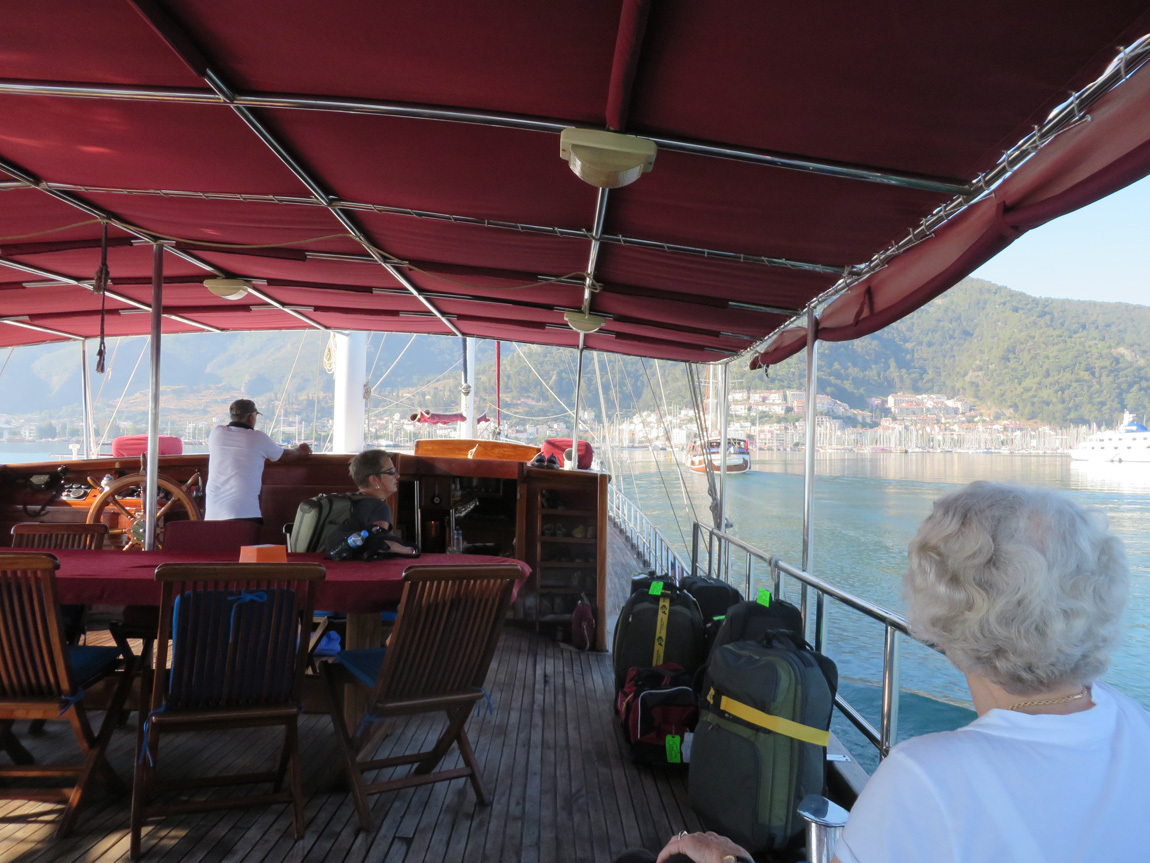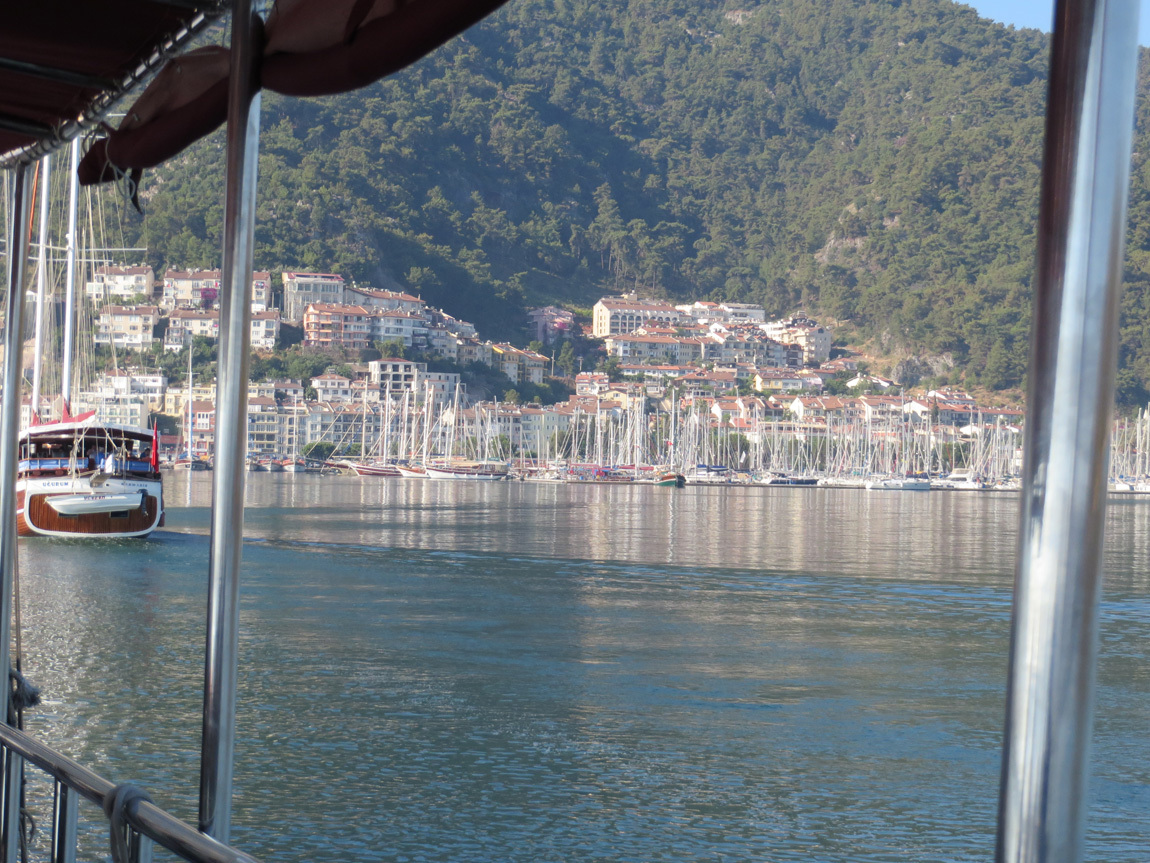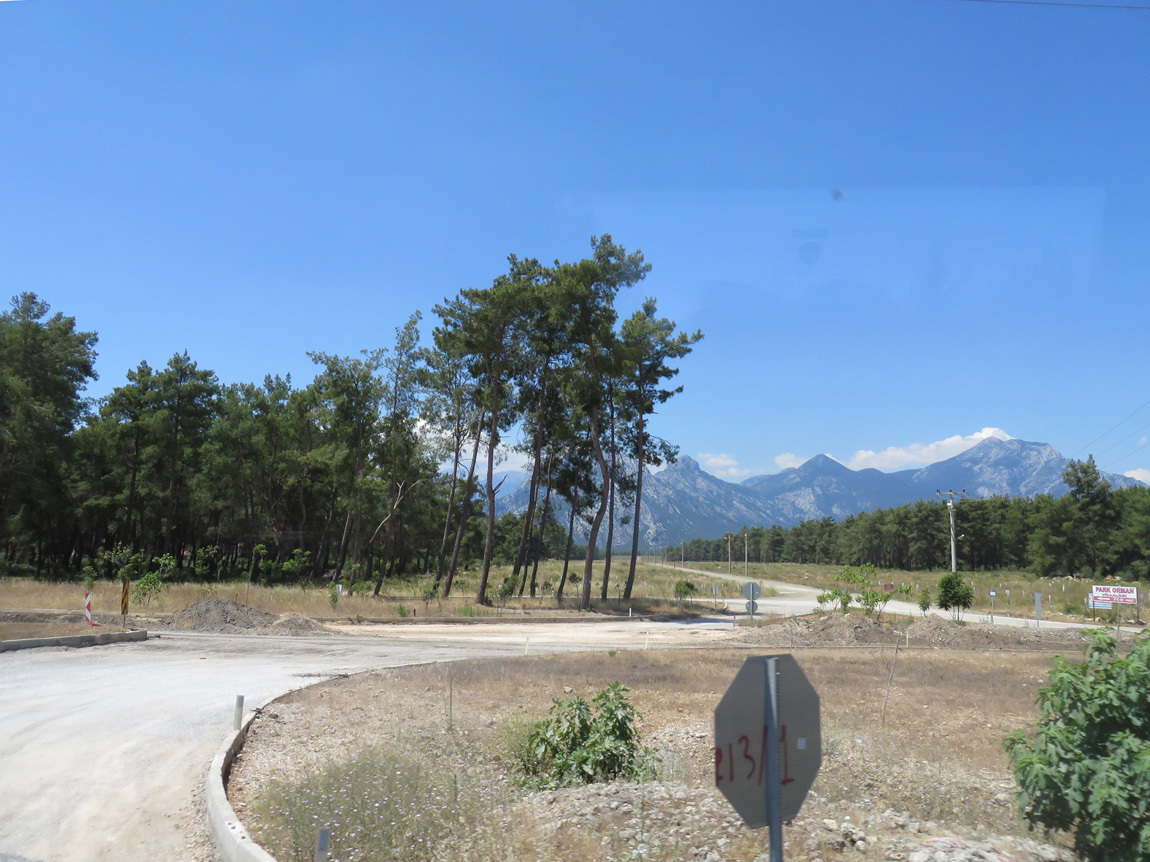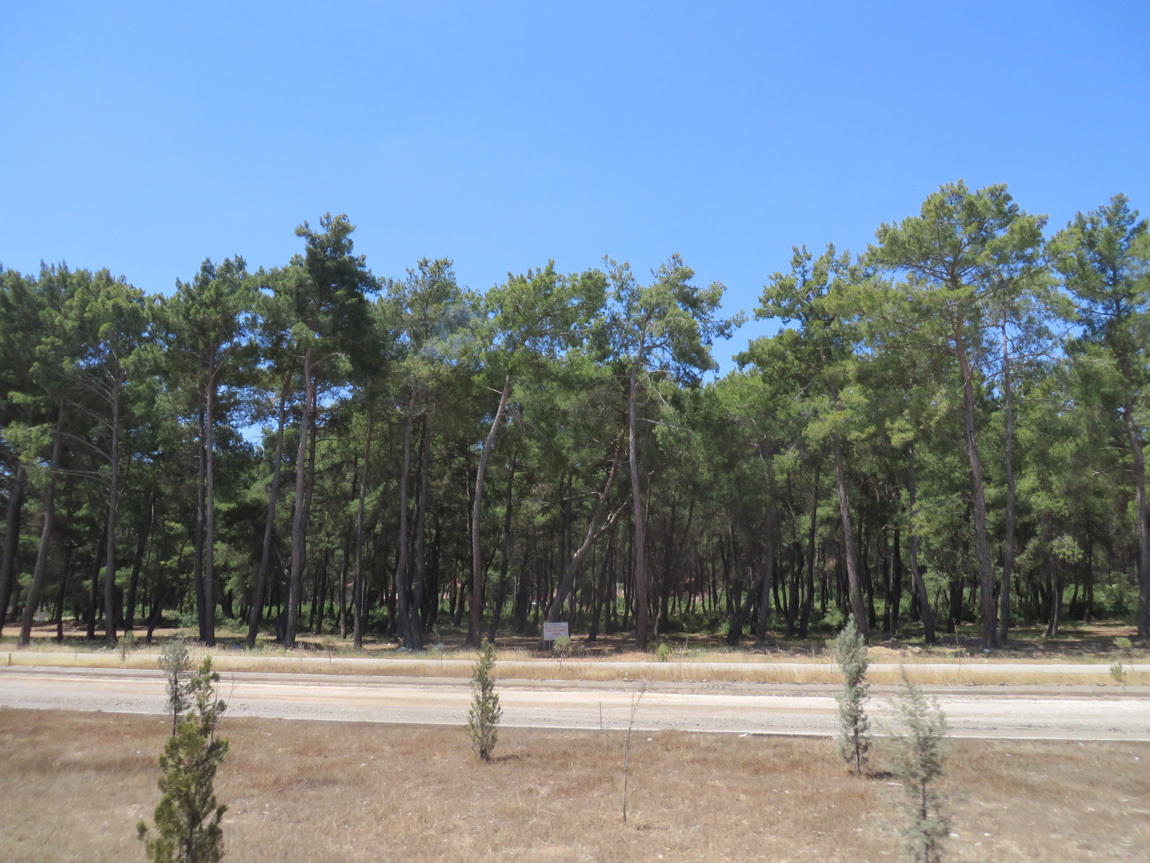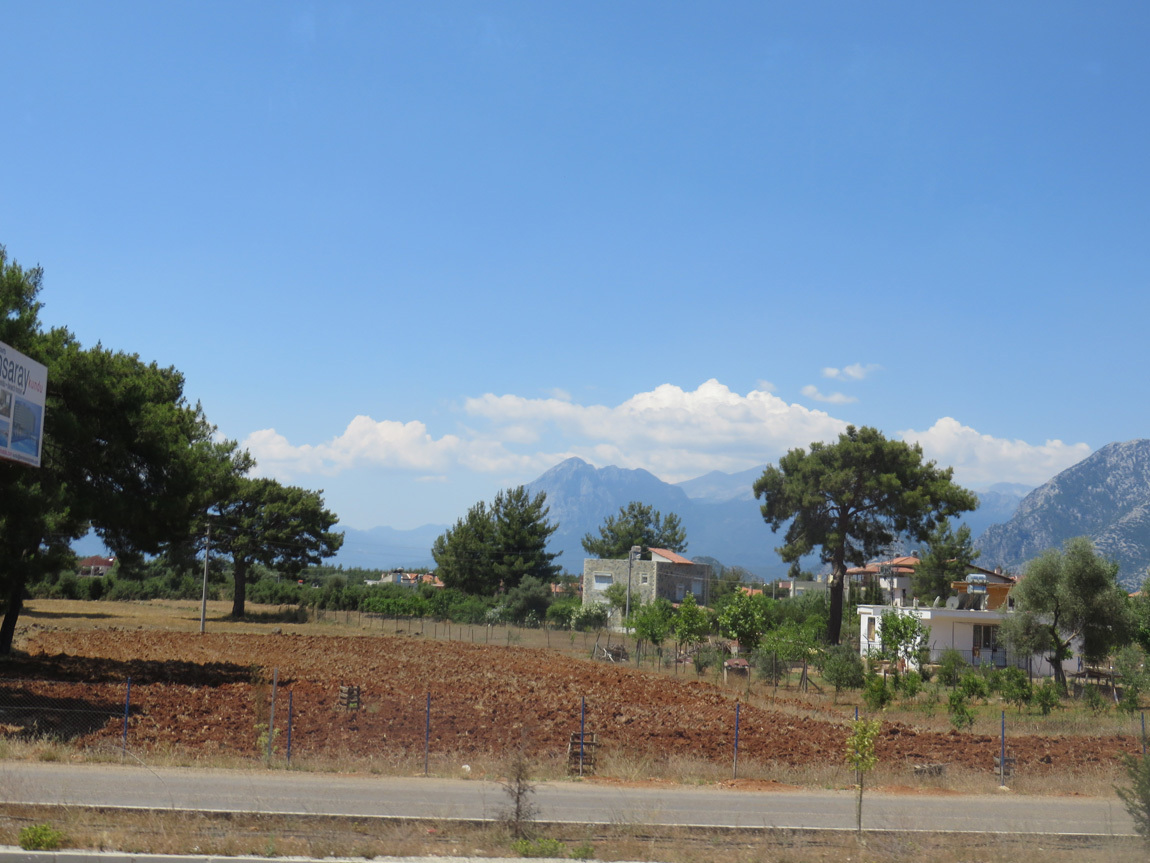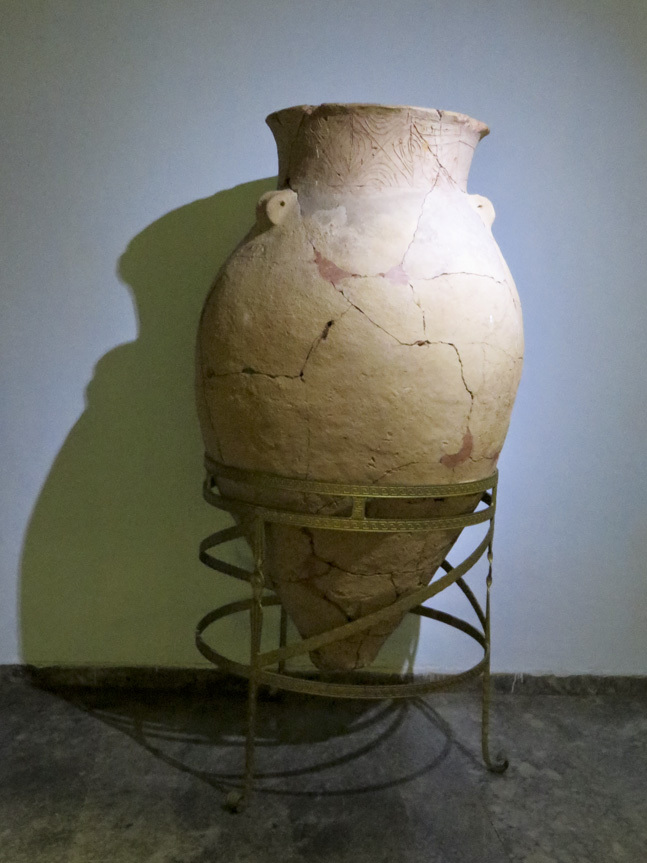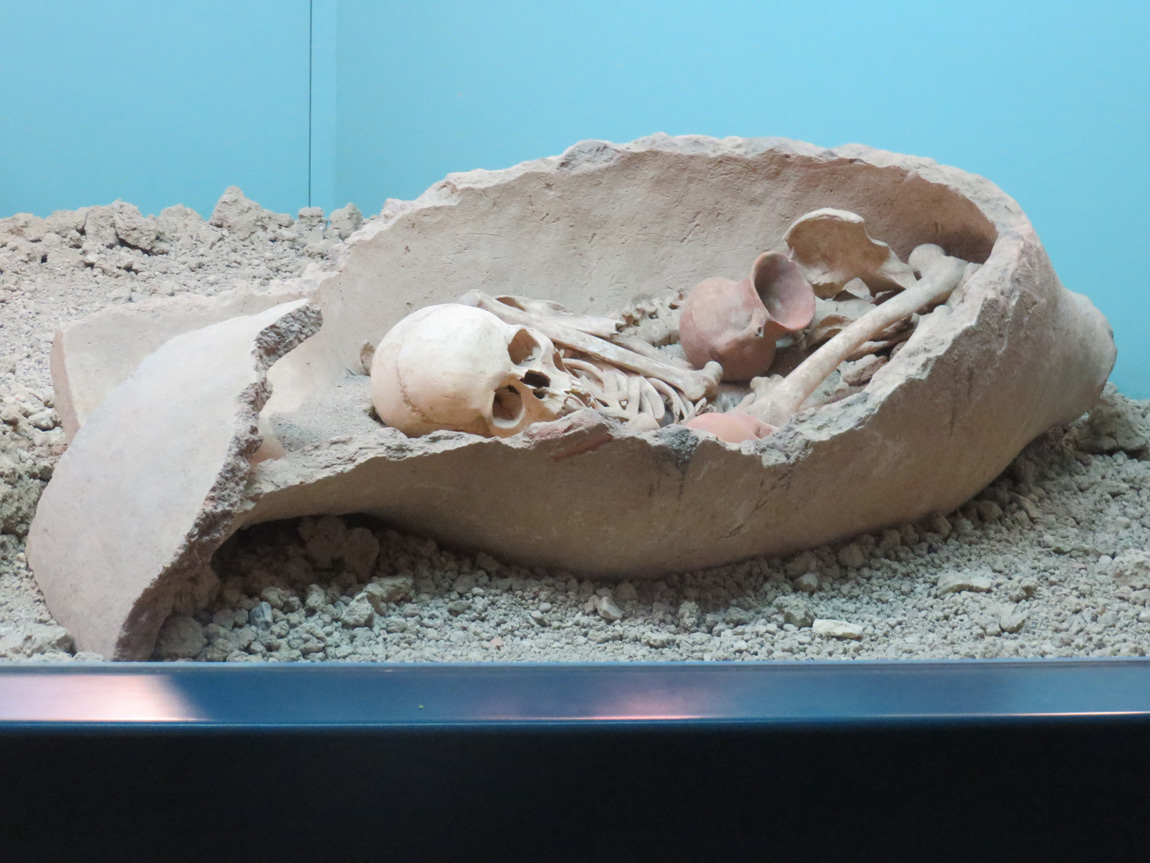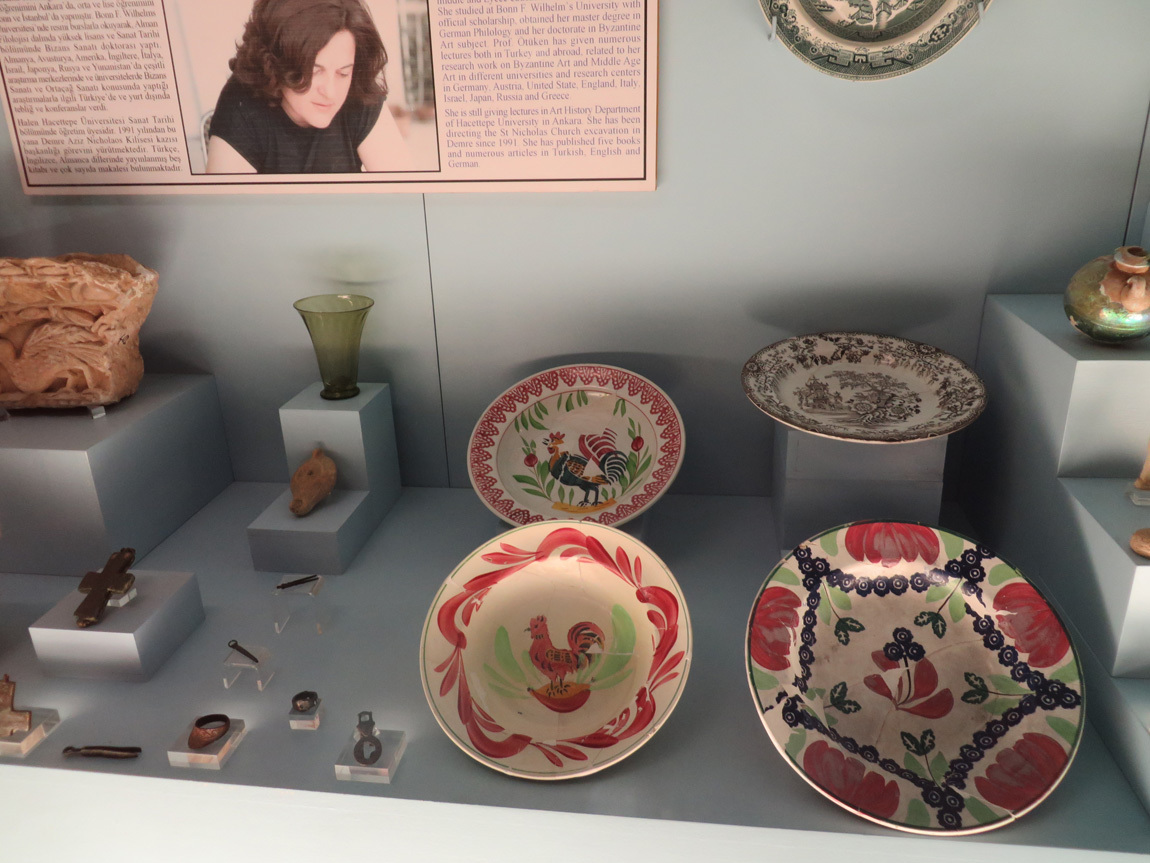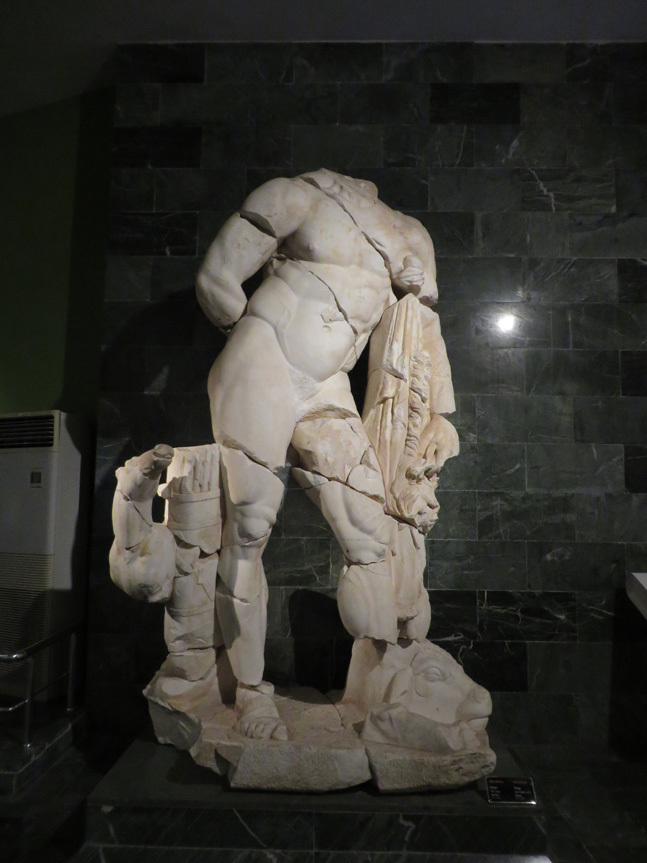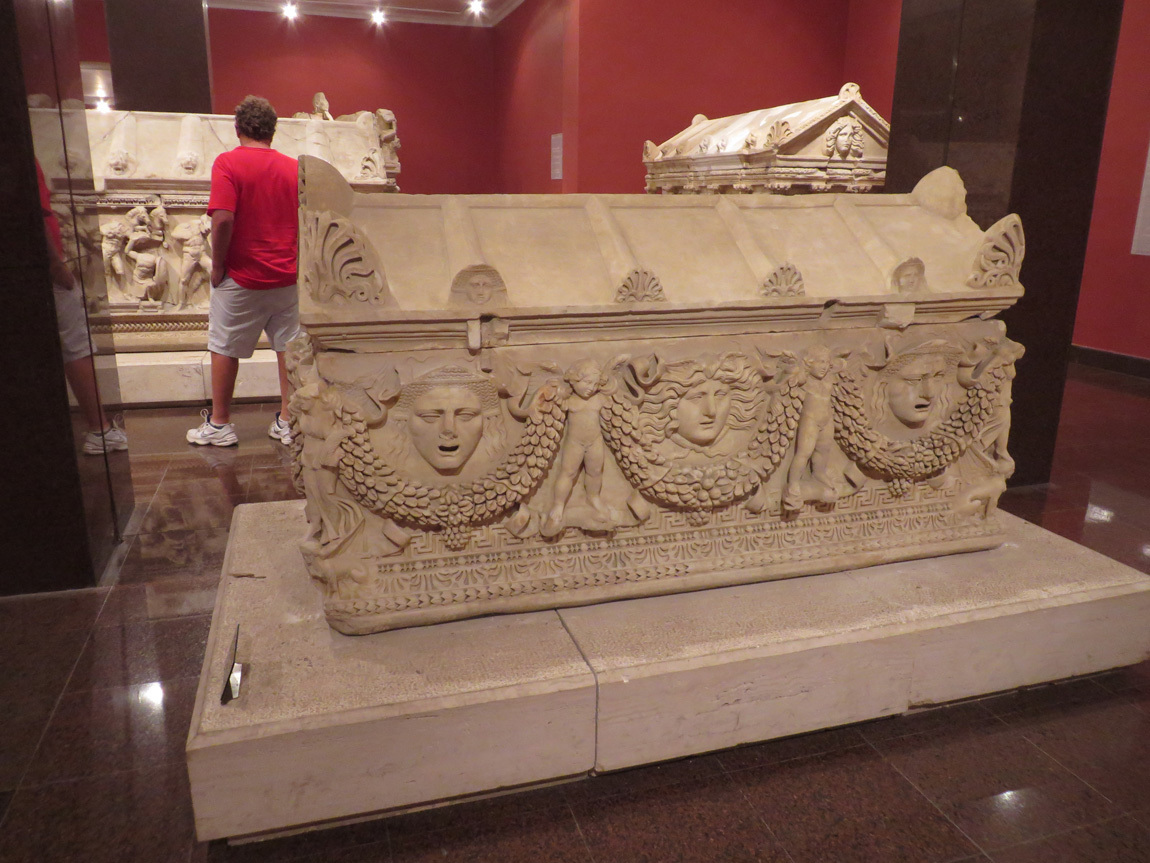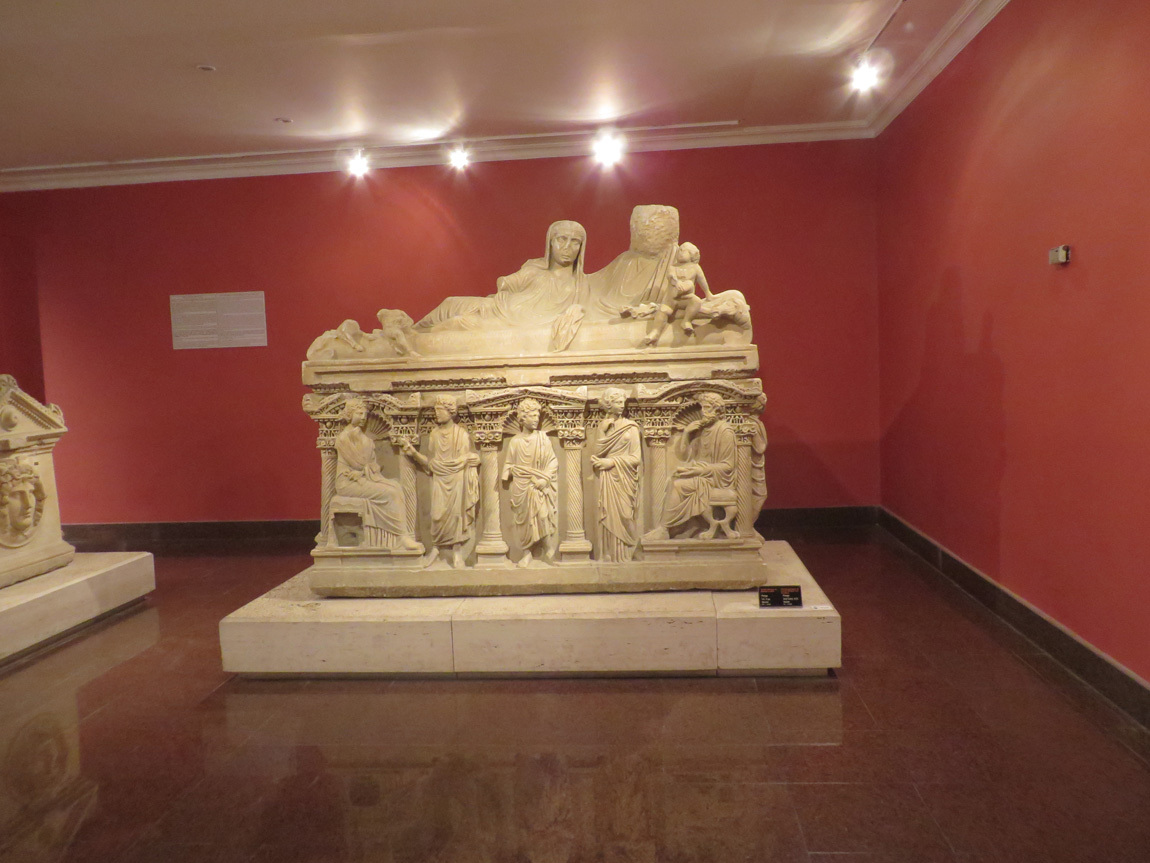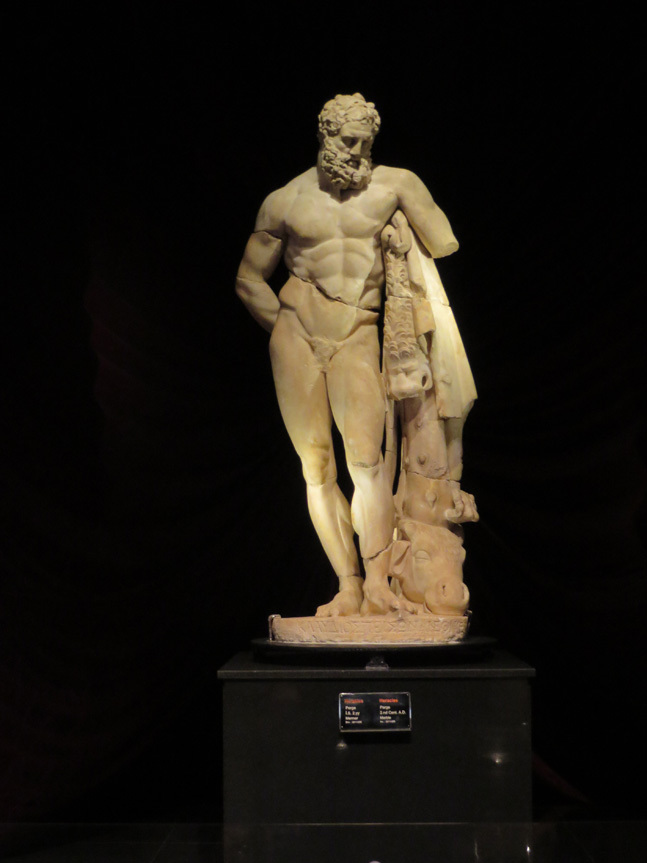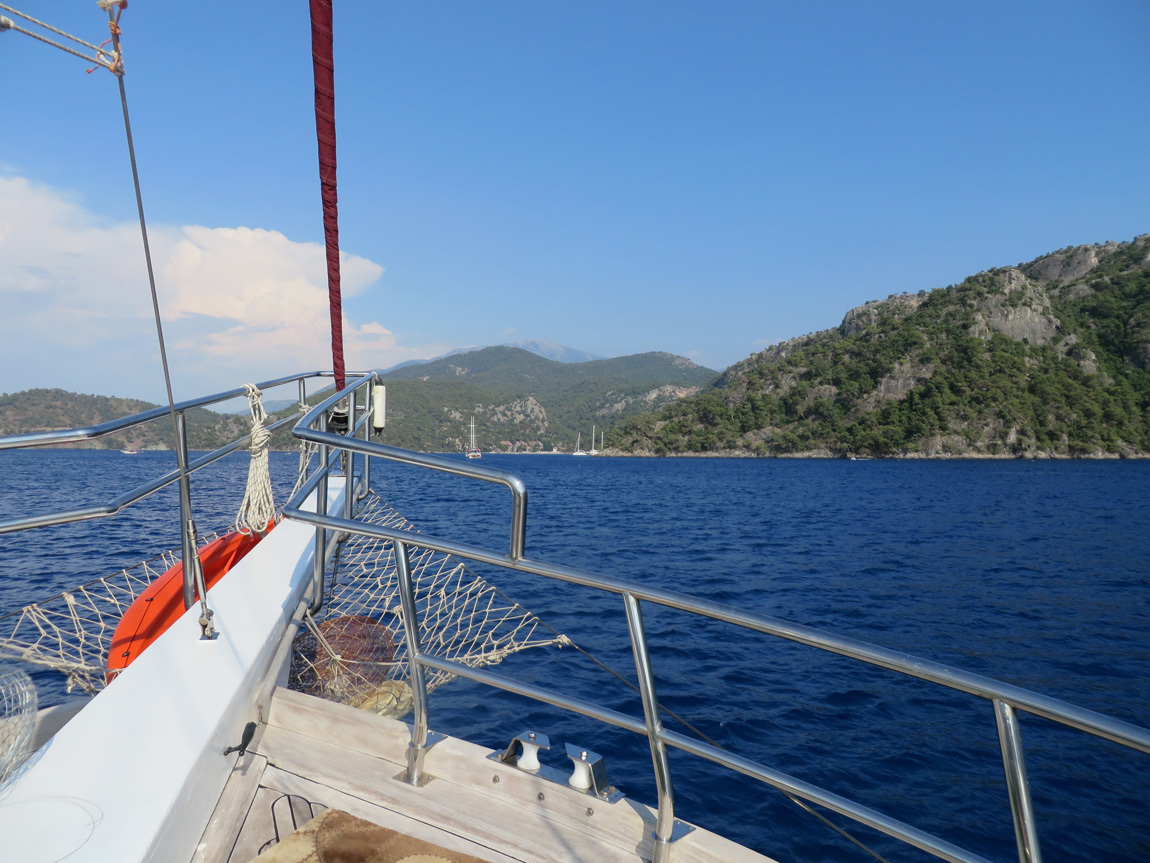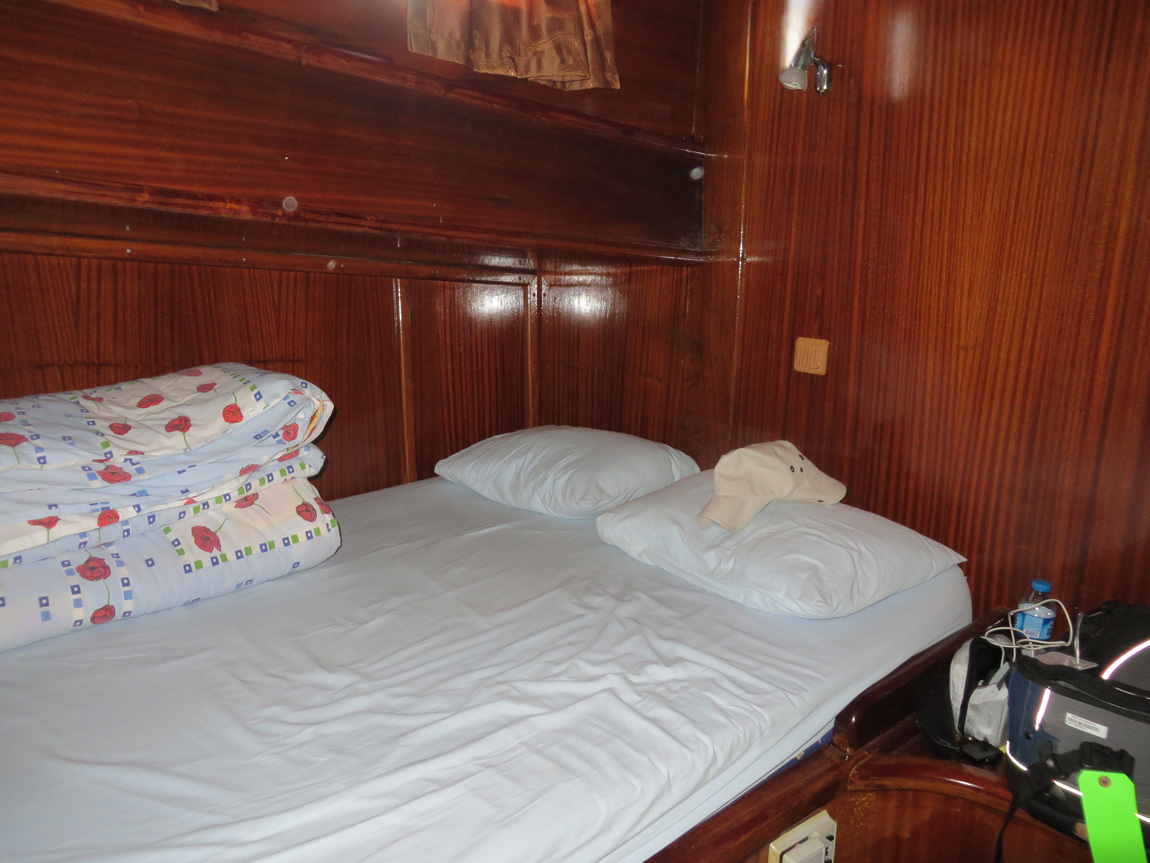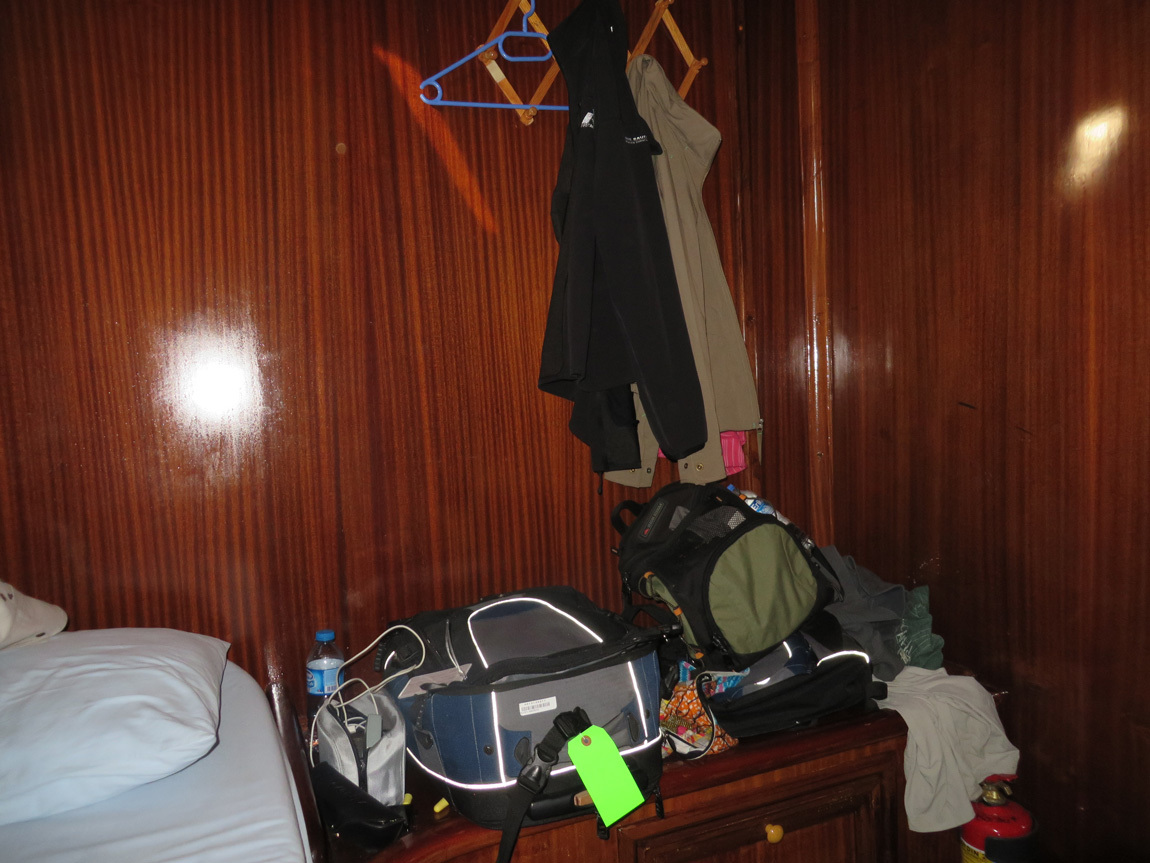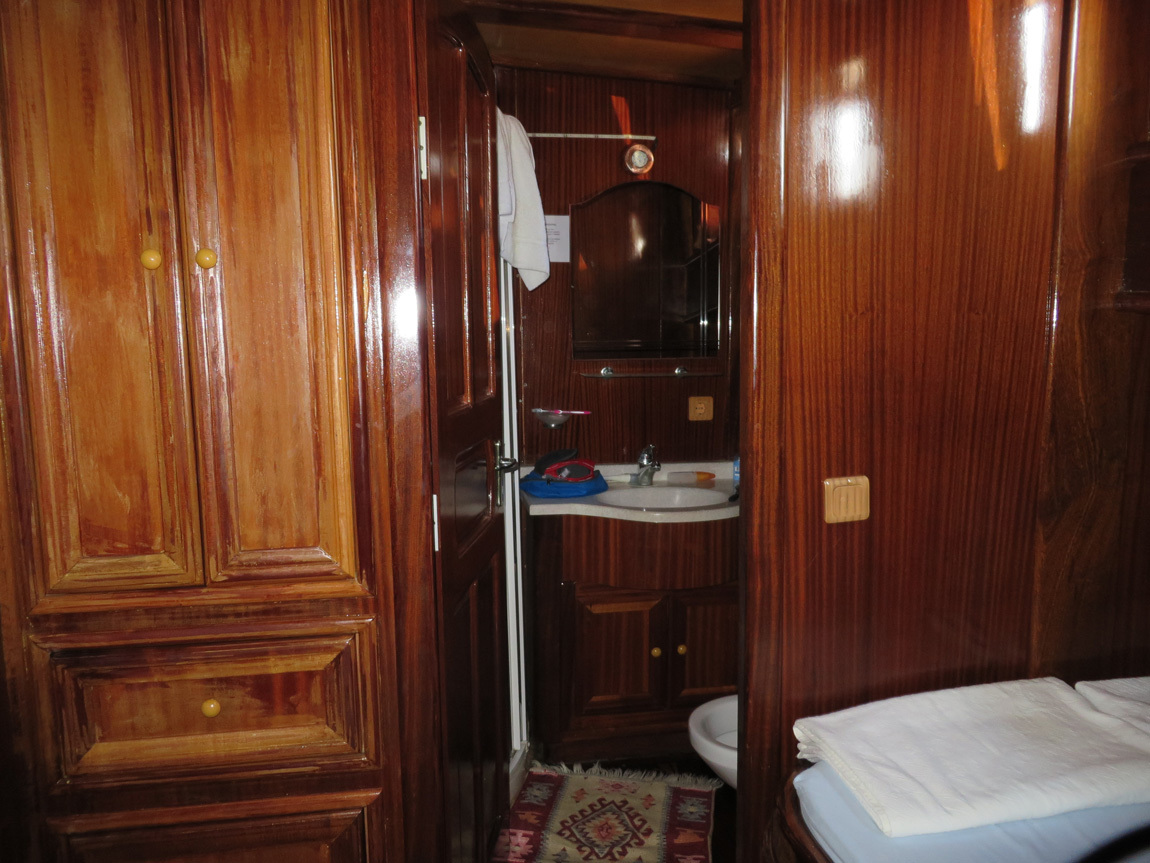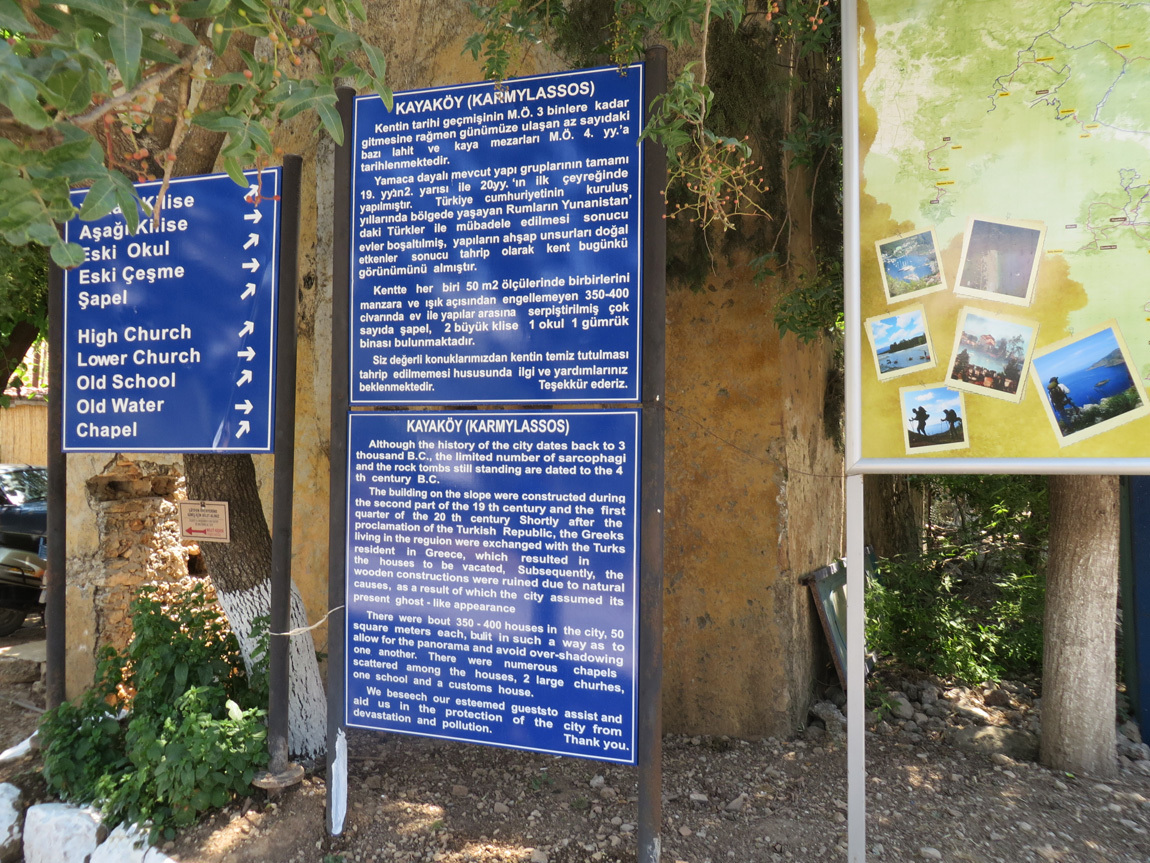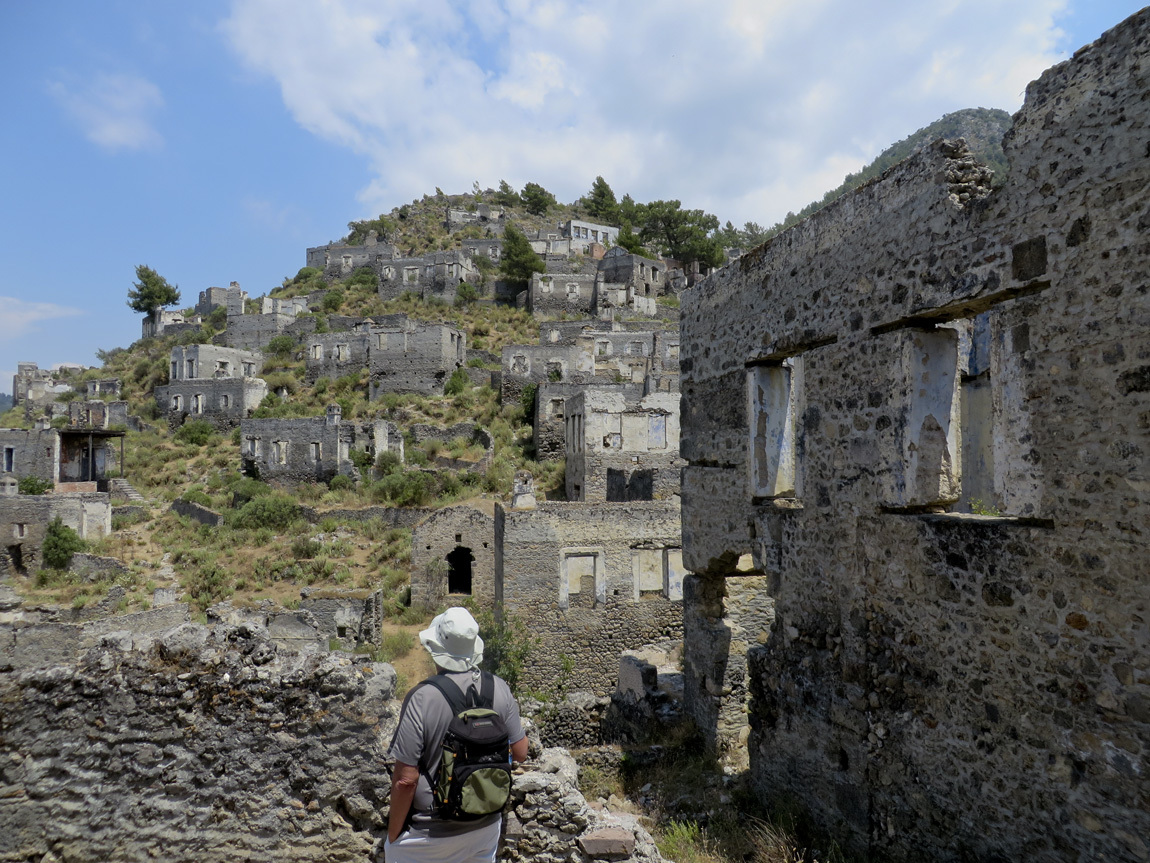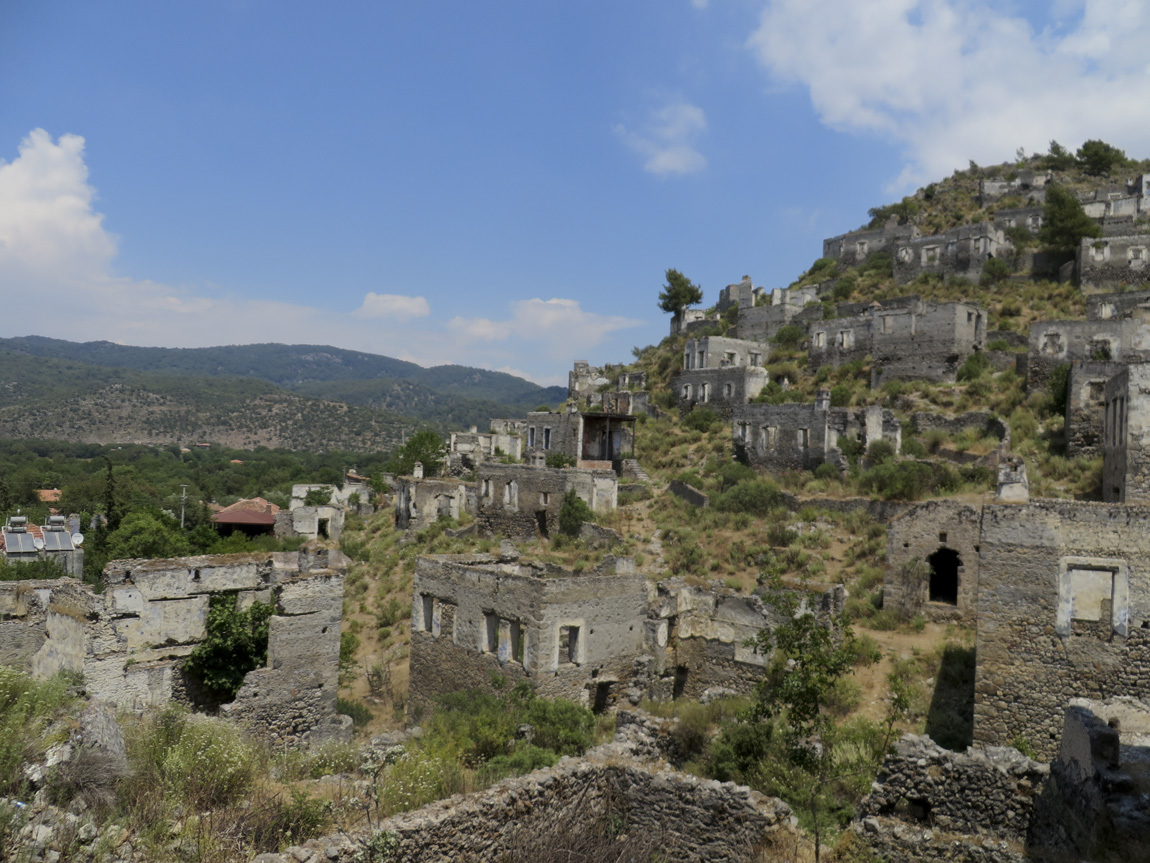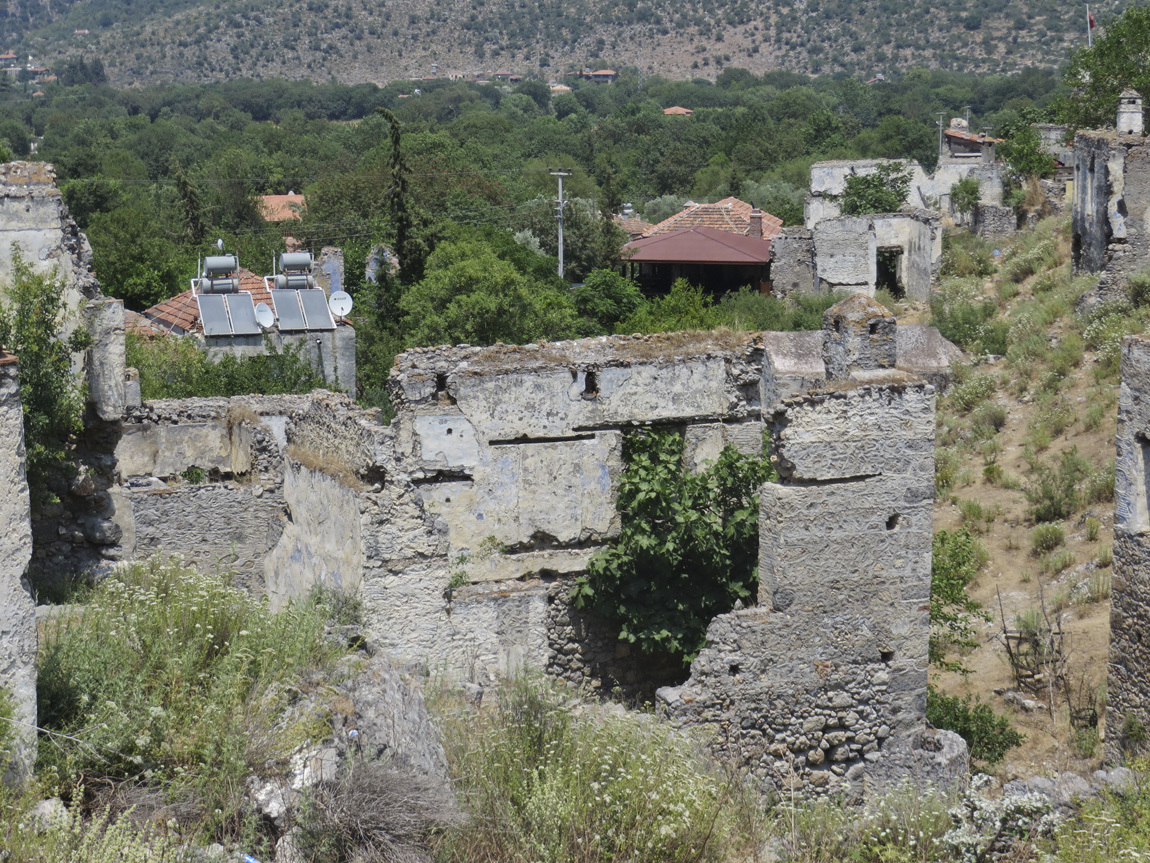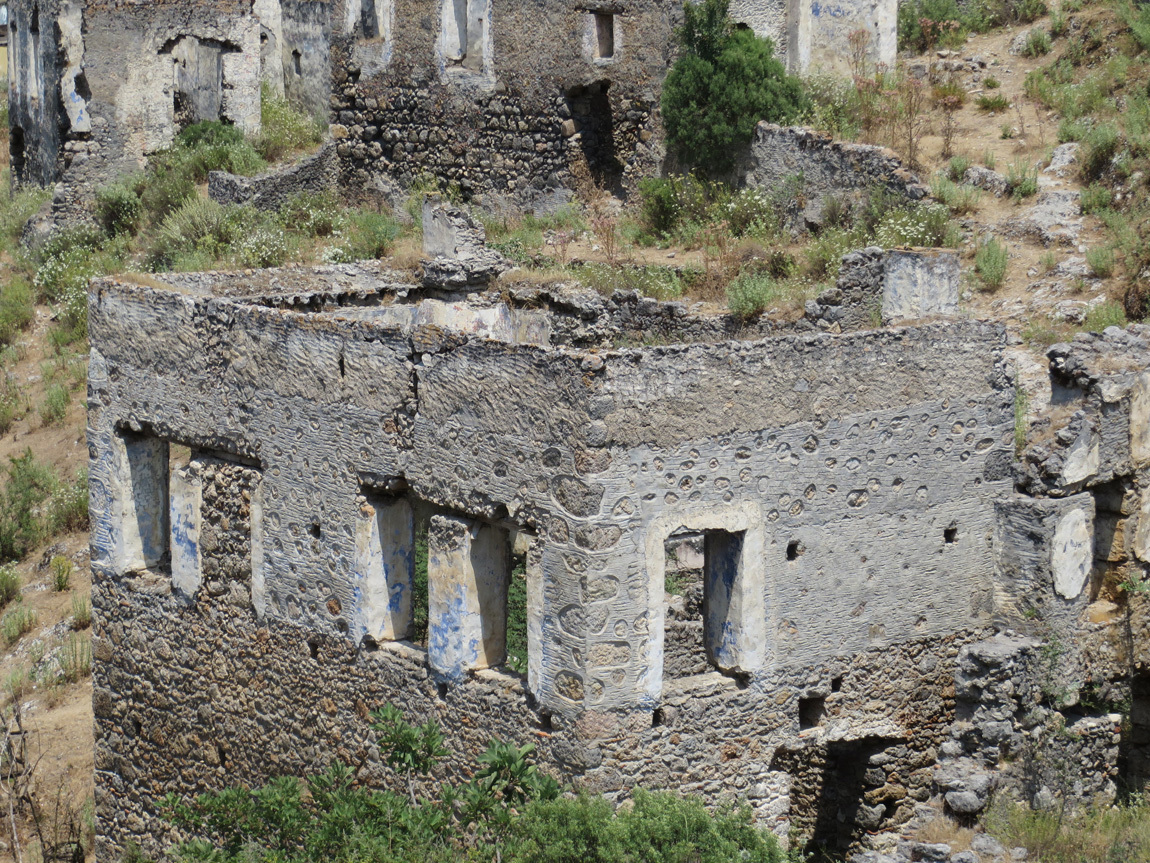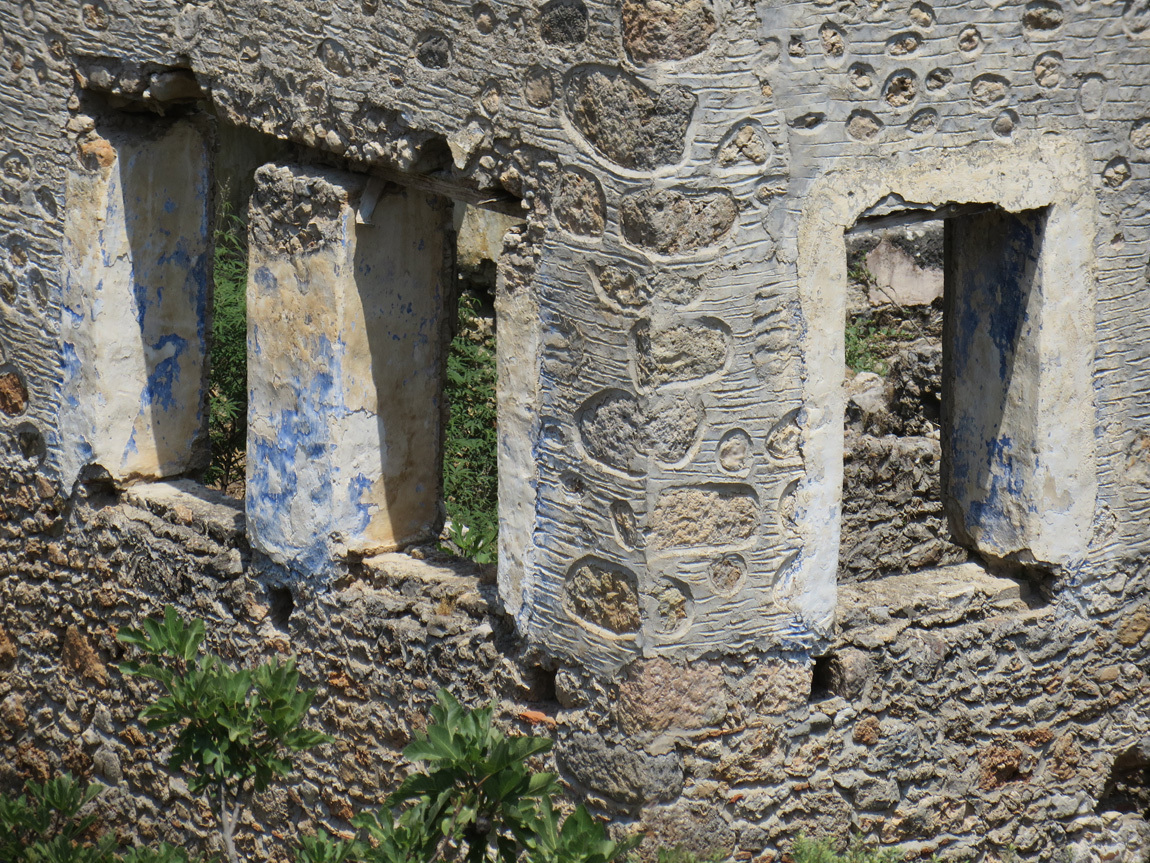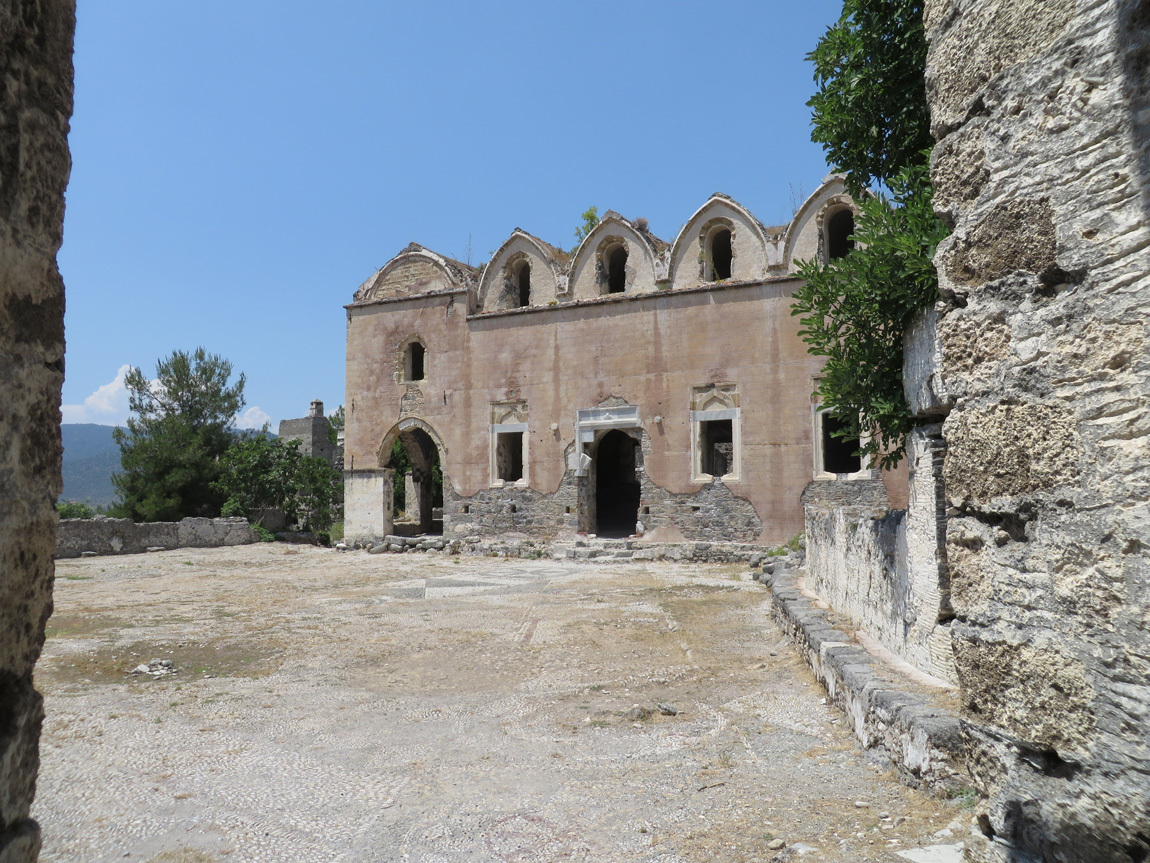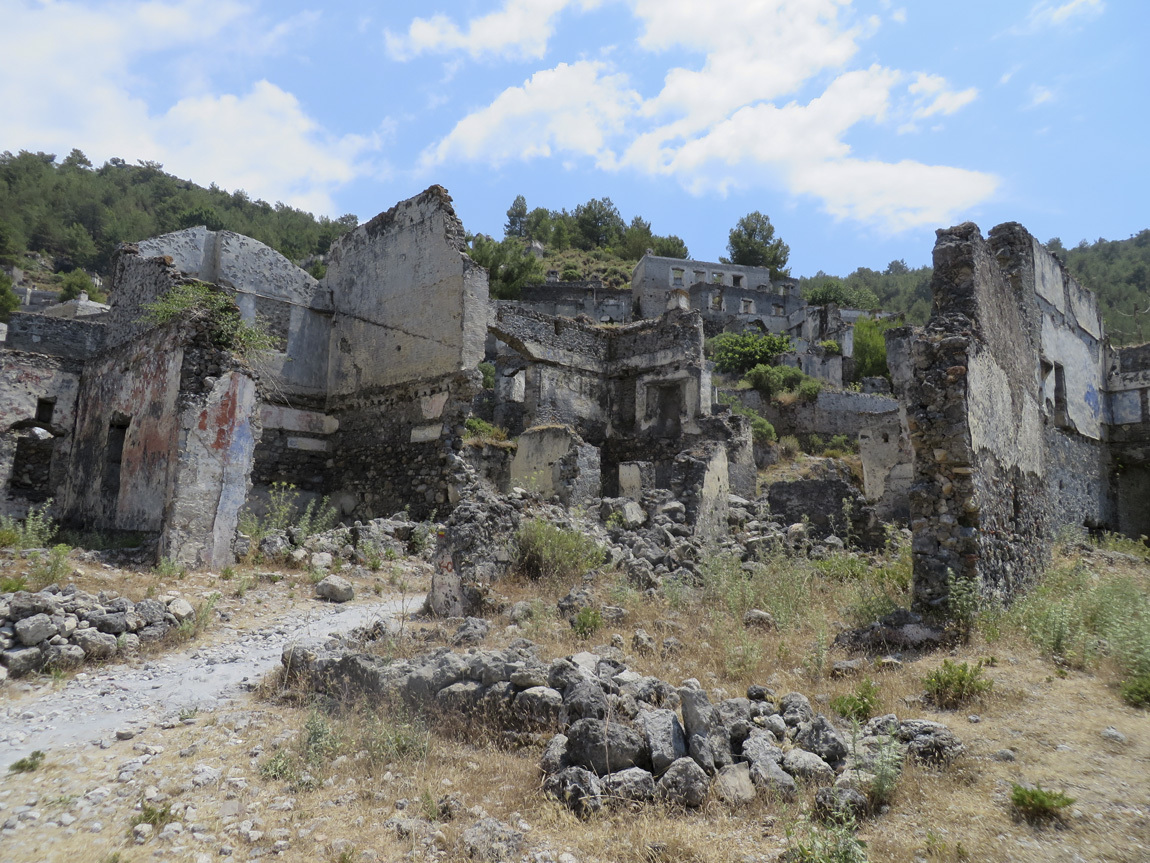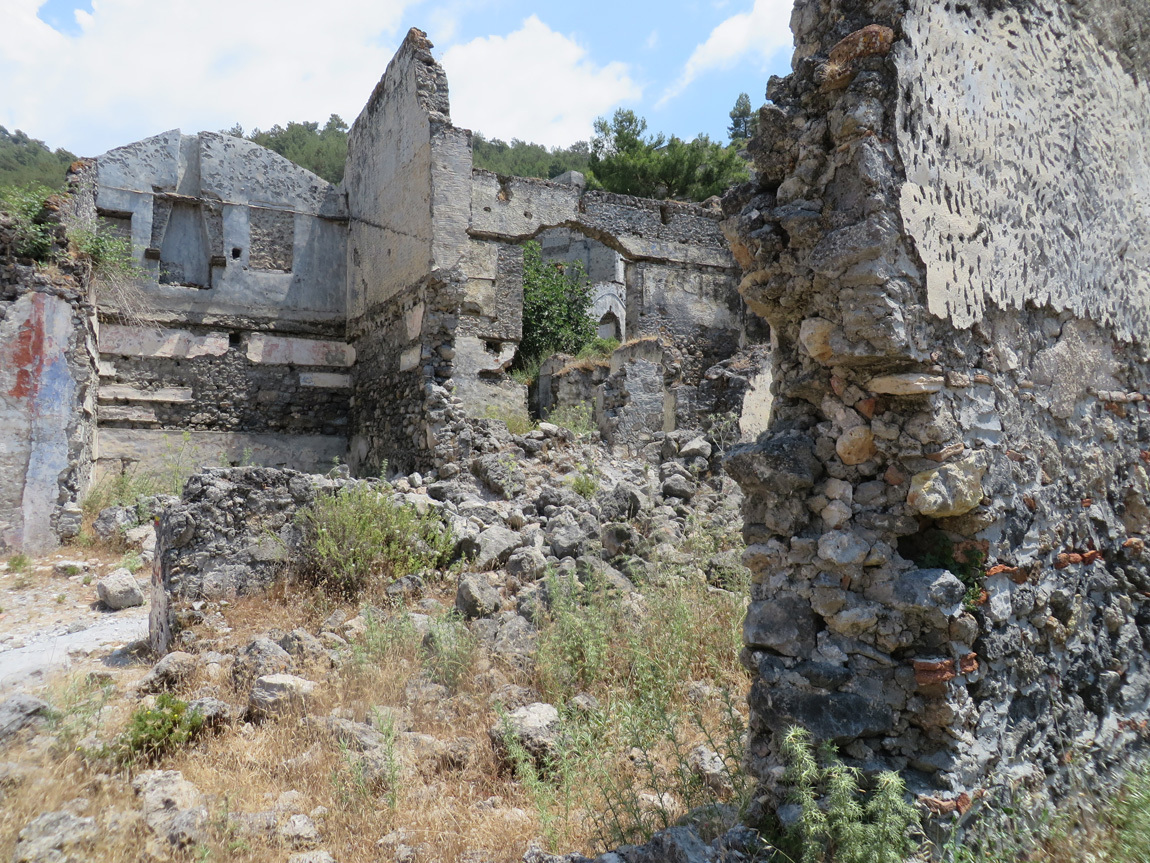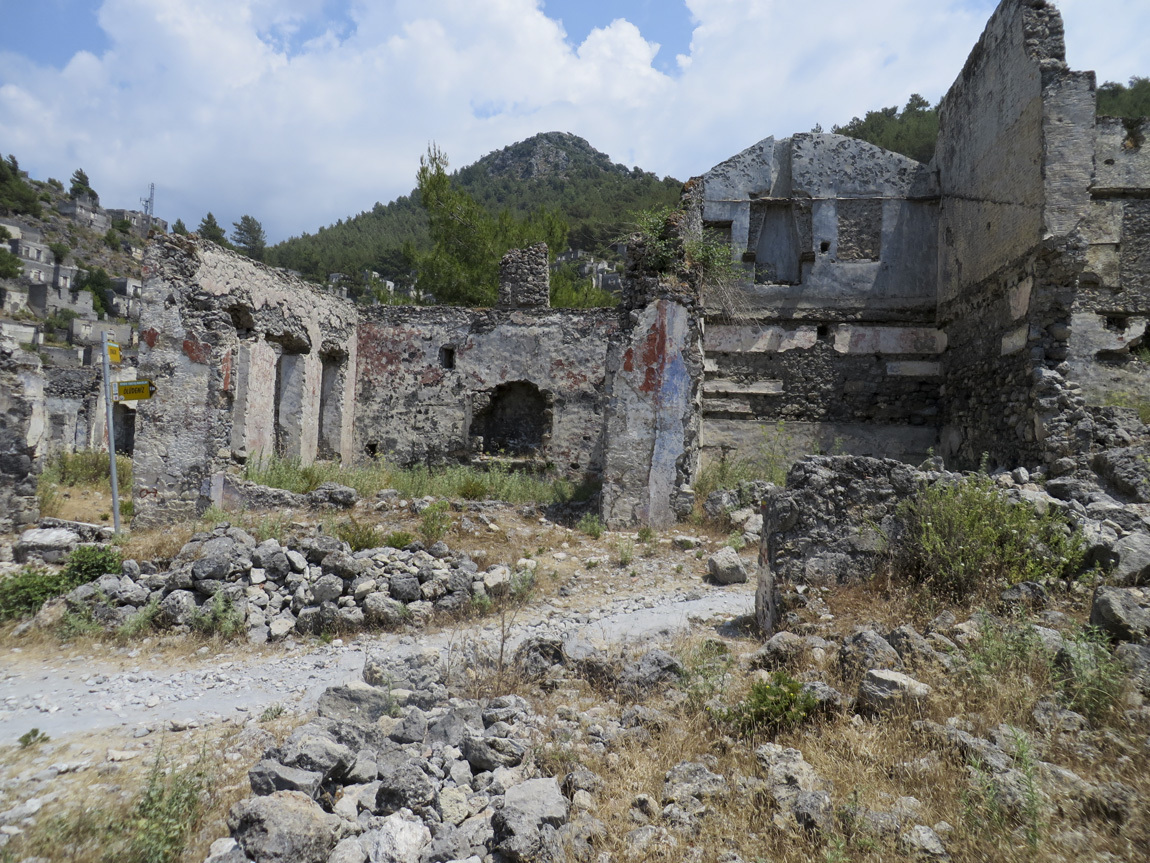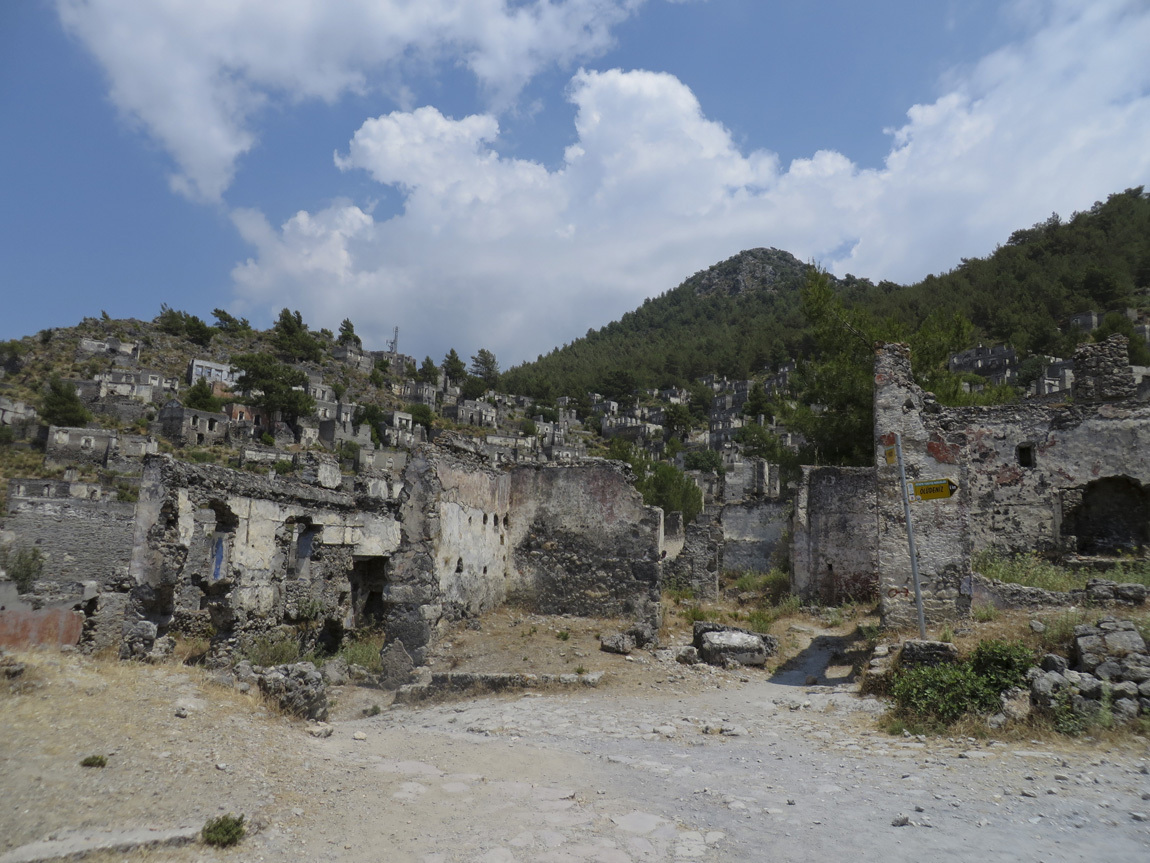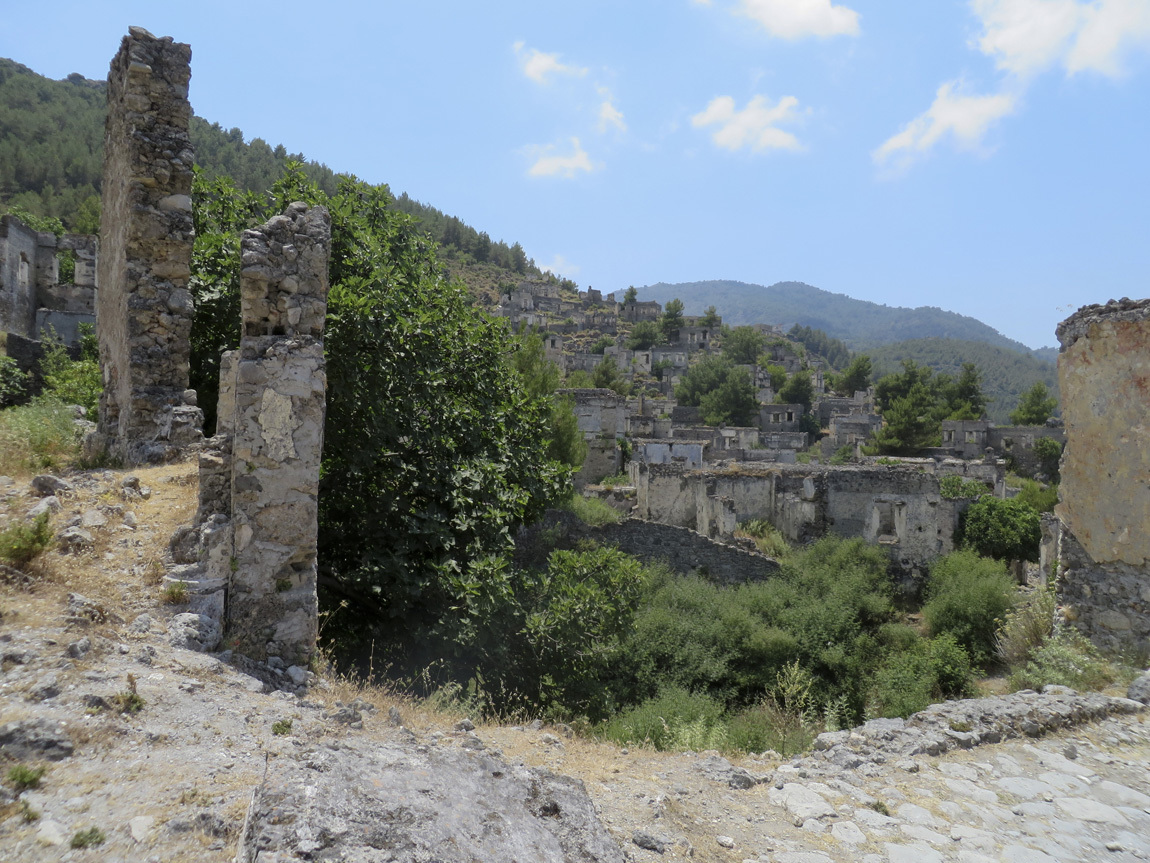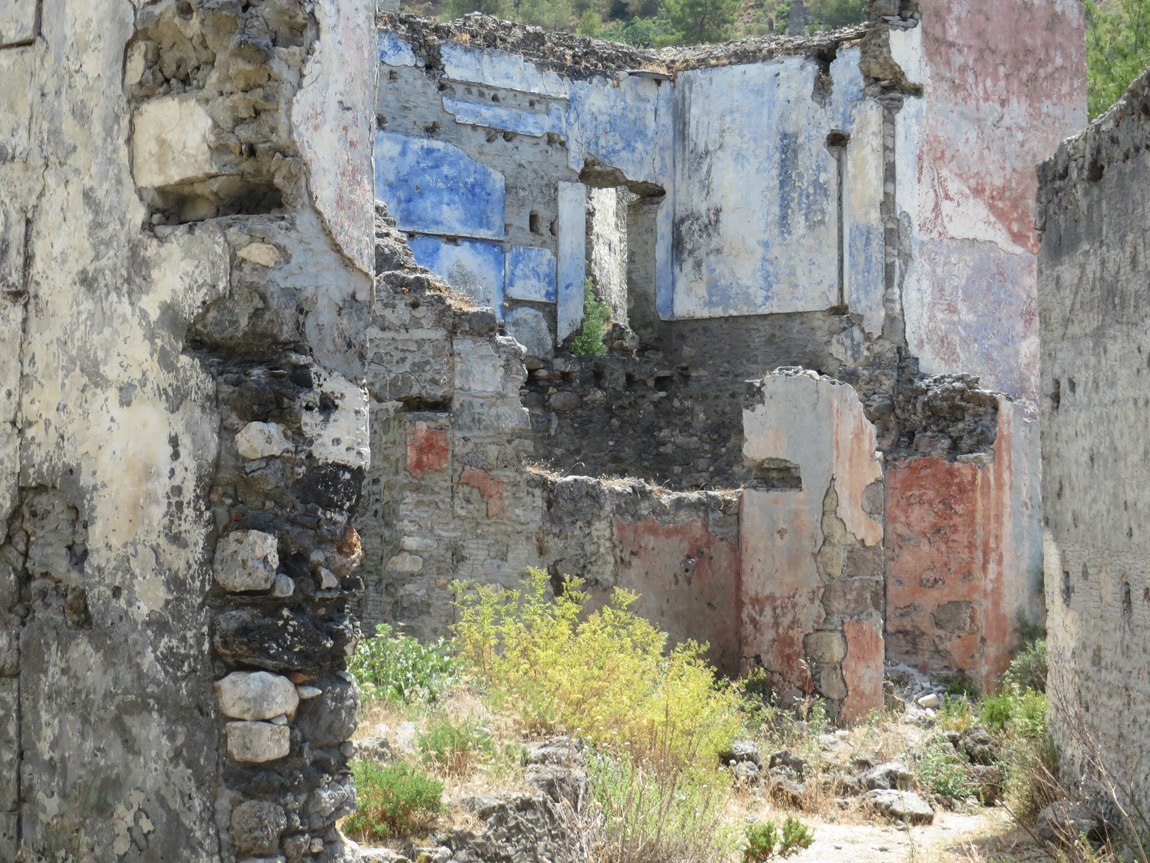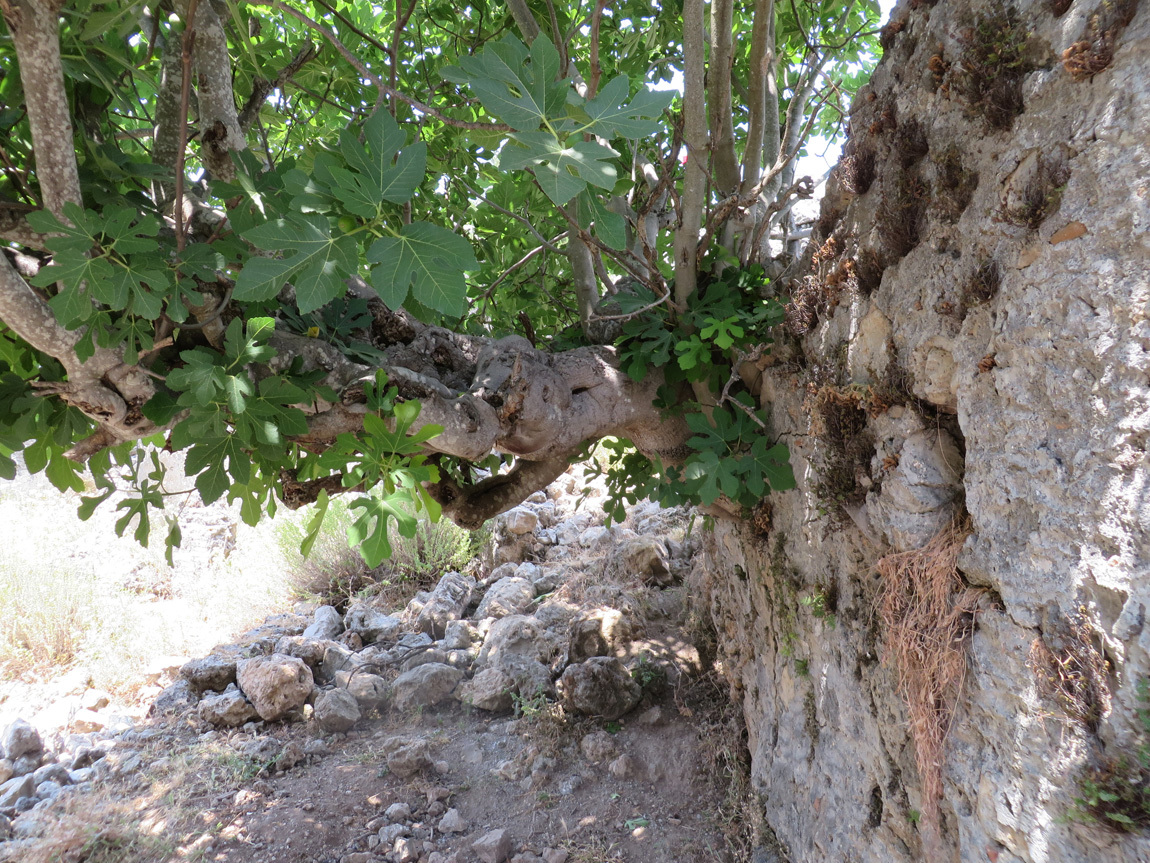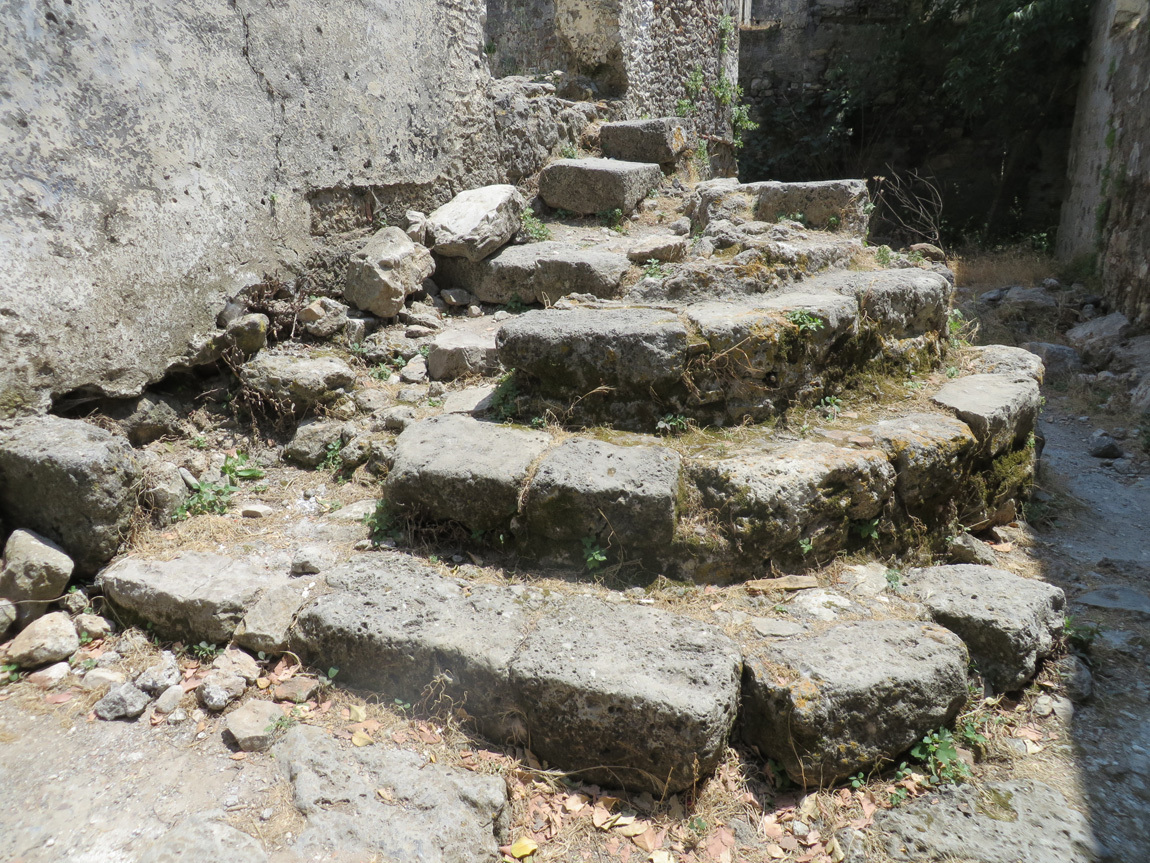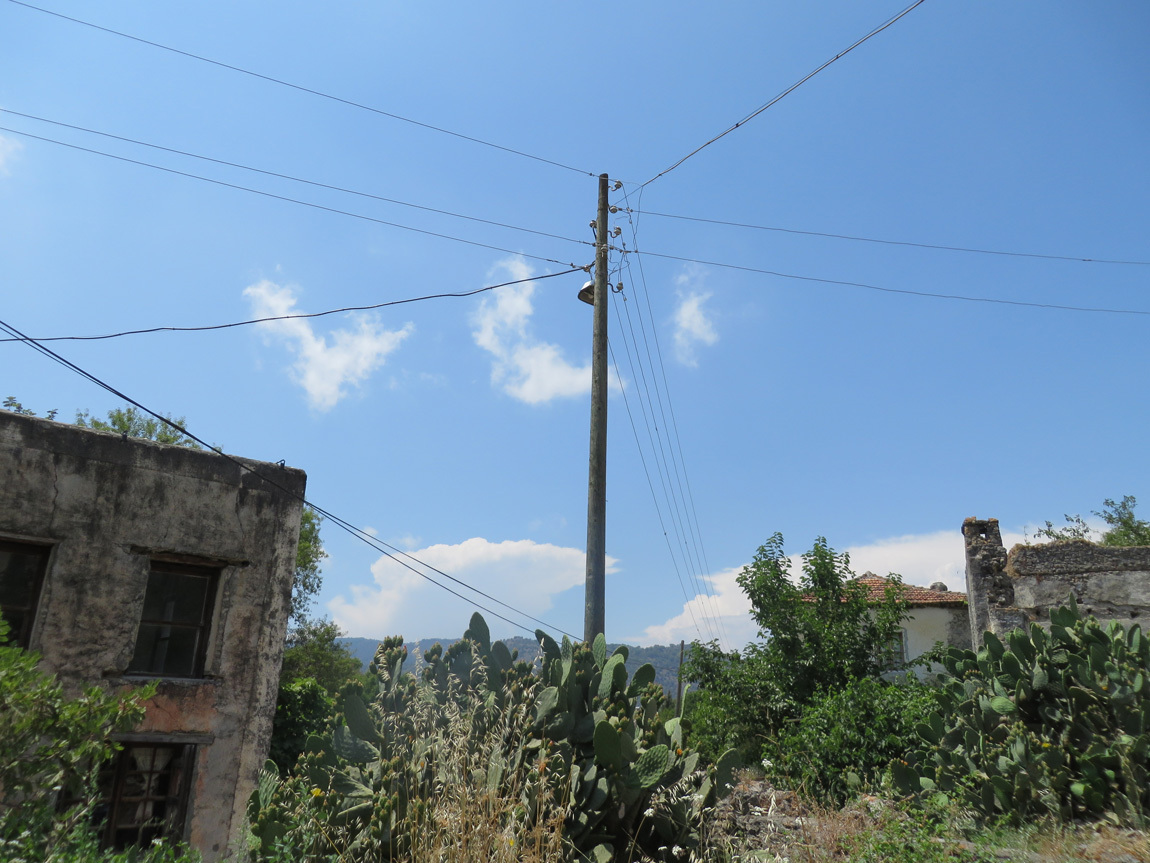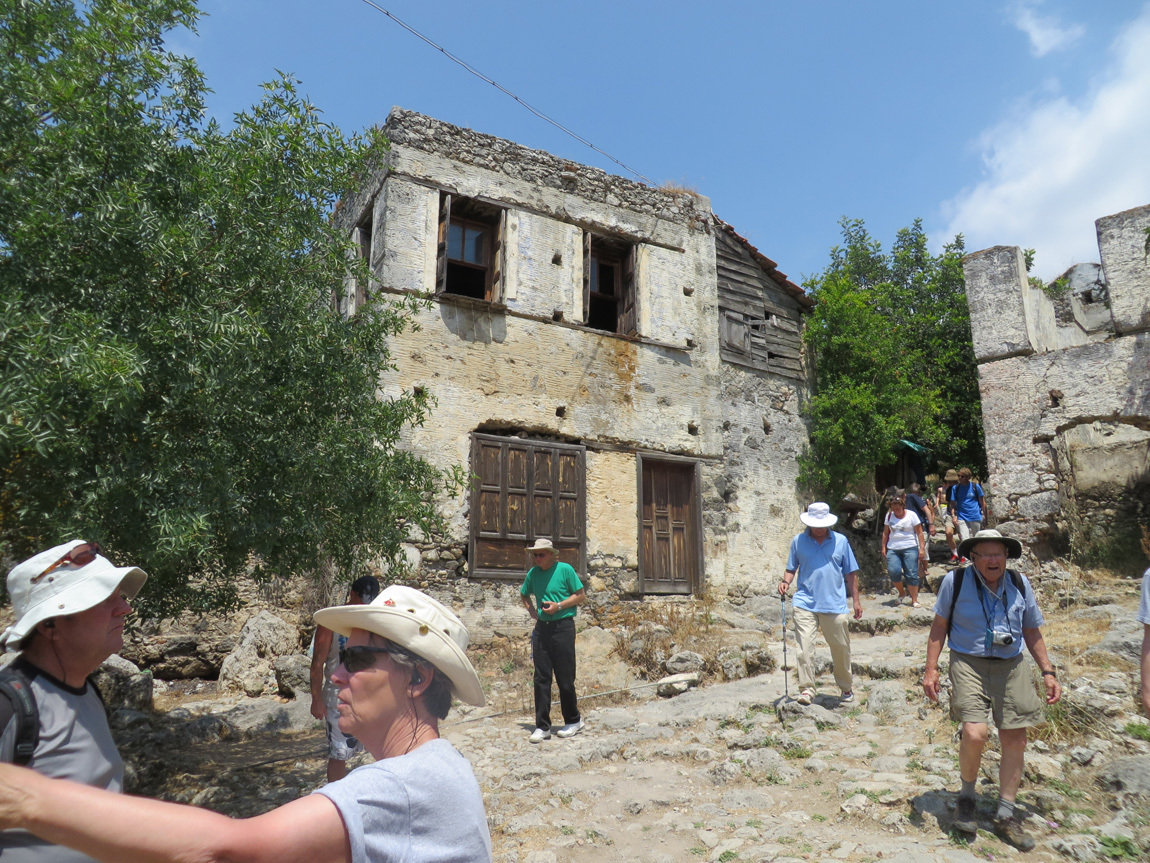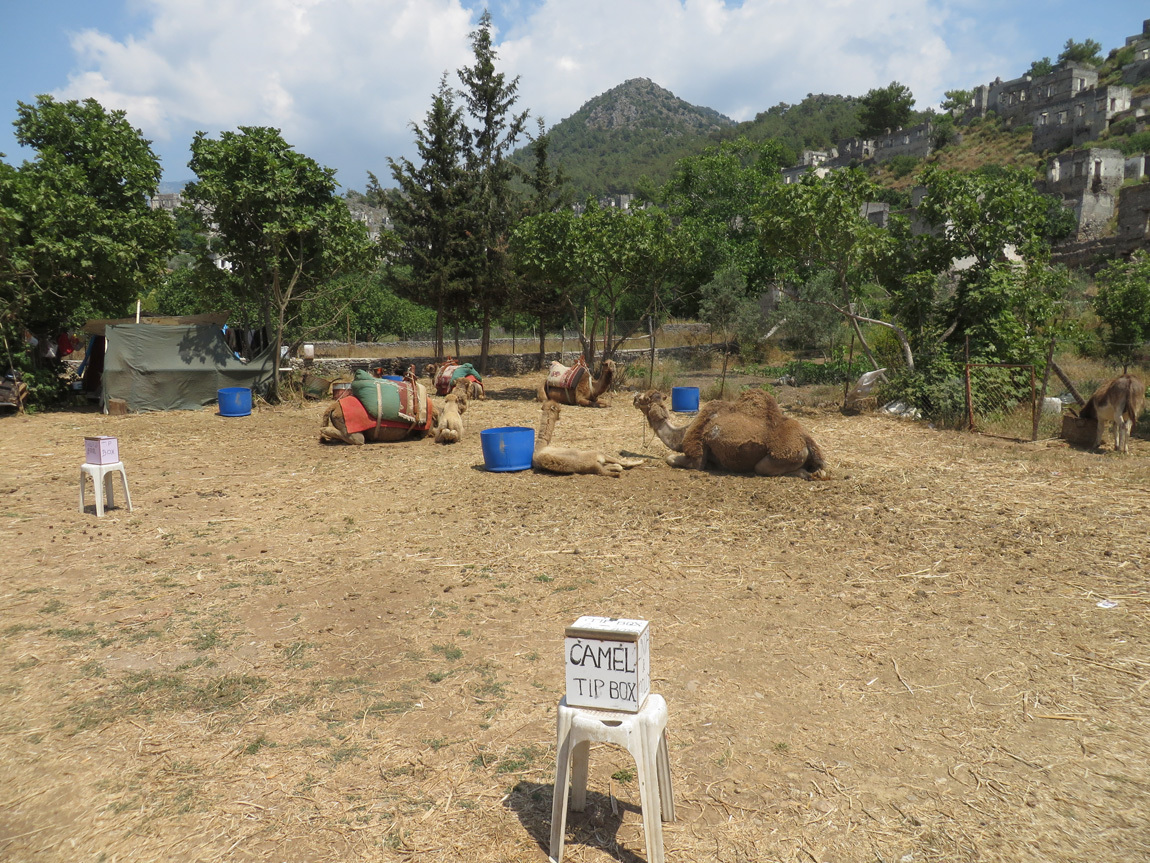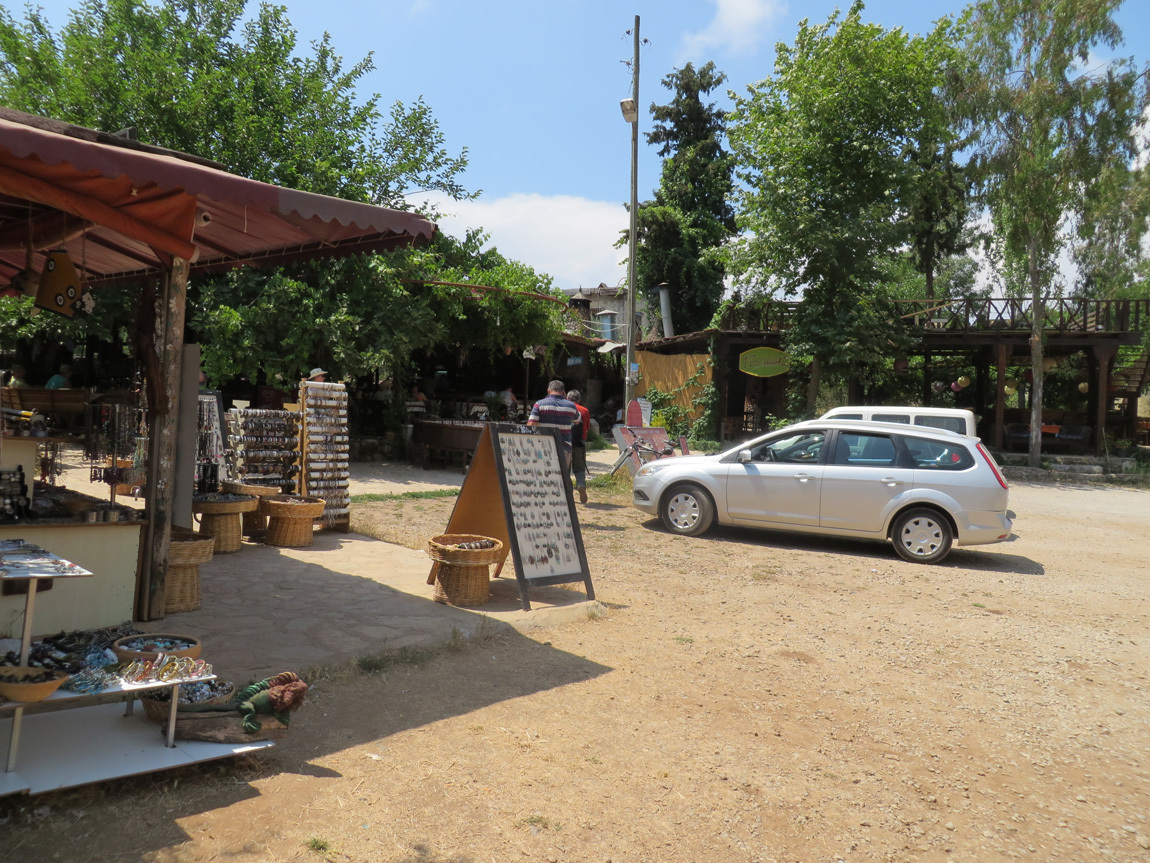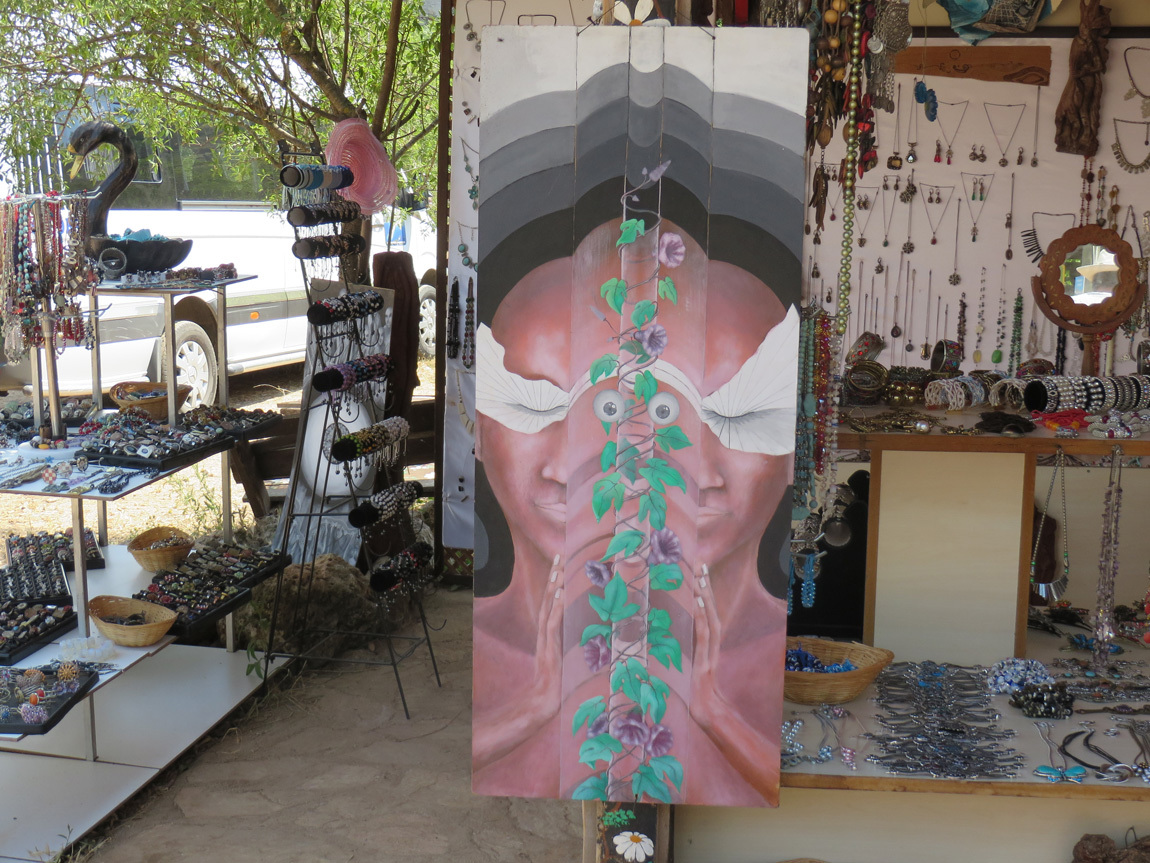June 17: Antalya
We got back from our pleasant trip to Perge about 12:15. We had the option to go on a tour of old Antalya, but decided we wanted some time to explore on our own. So we packed up our swim suits and headed down to the sea.
At the top of the sea cliffs, a pathway runs along the top of the cliff. Lots of restaurants, some fancy, and tourist stops.
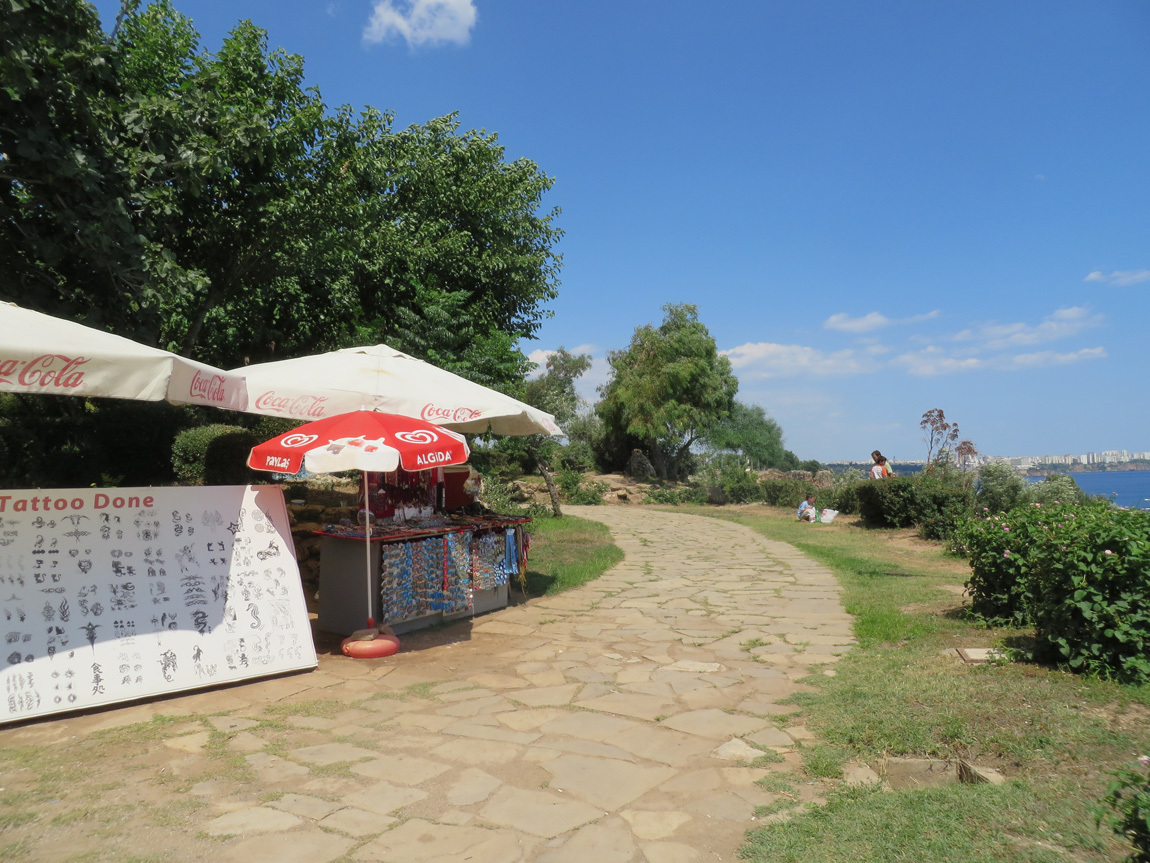
Here is the view to the left, of the buildings on the cliffs above the Mediterranean Sea.
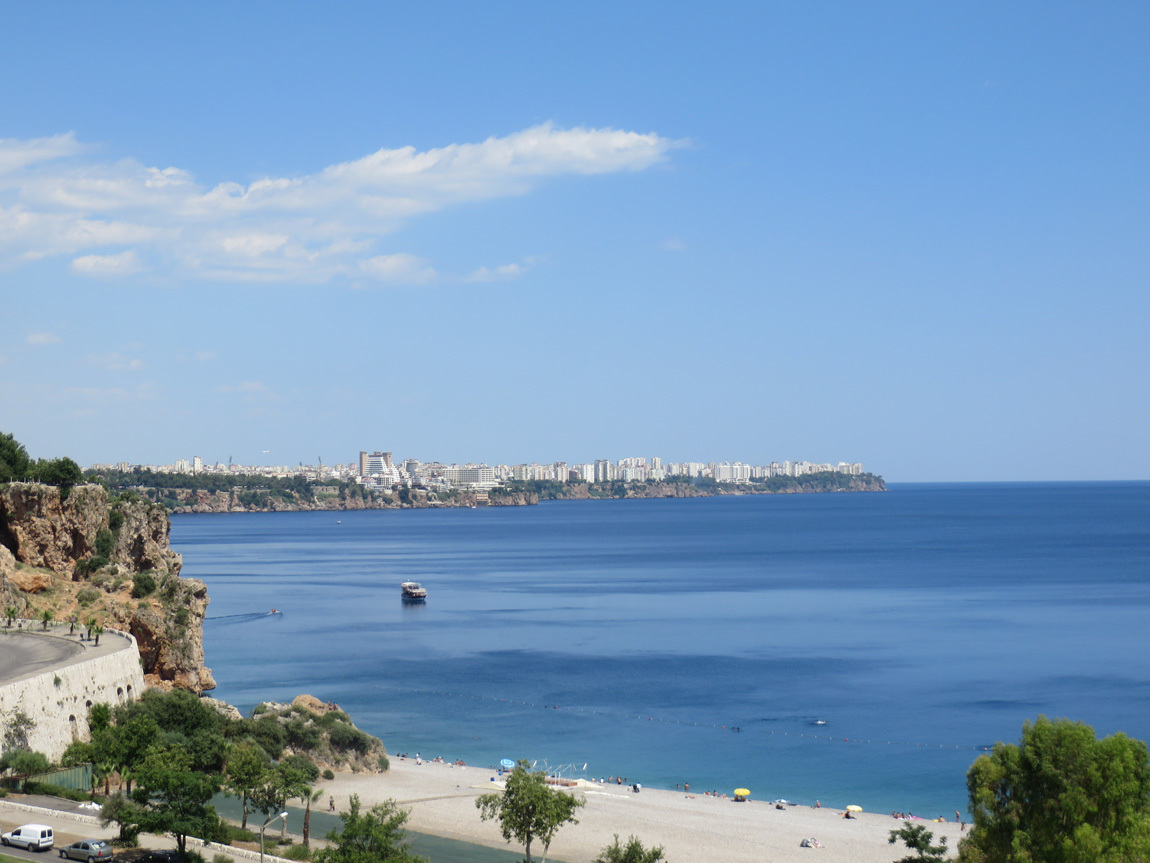
The view to the right, of the steep mountains that take off right at the shore.
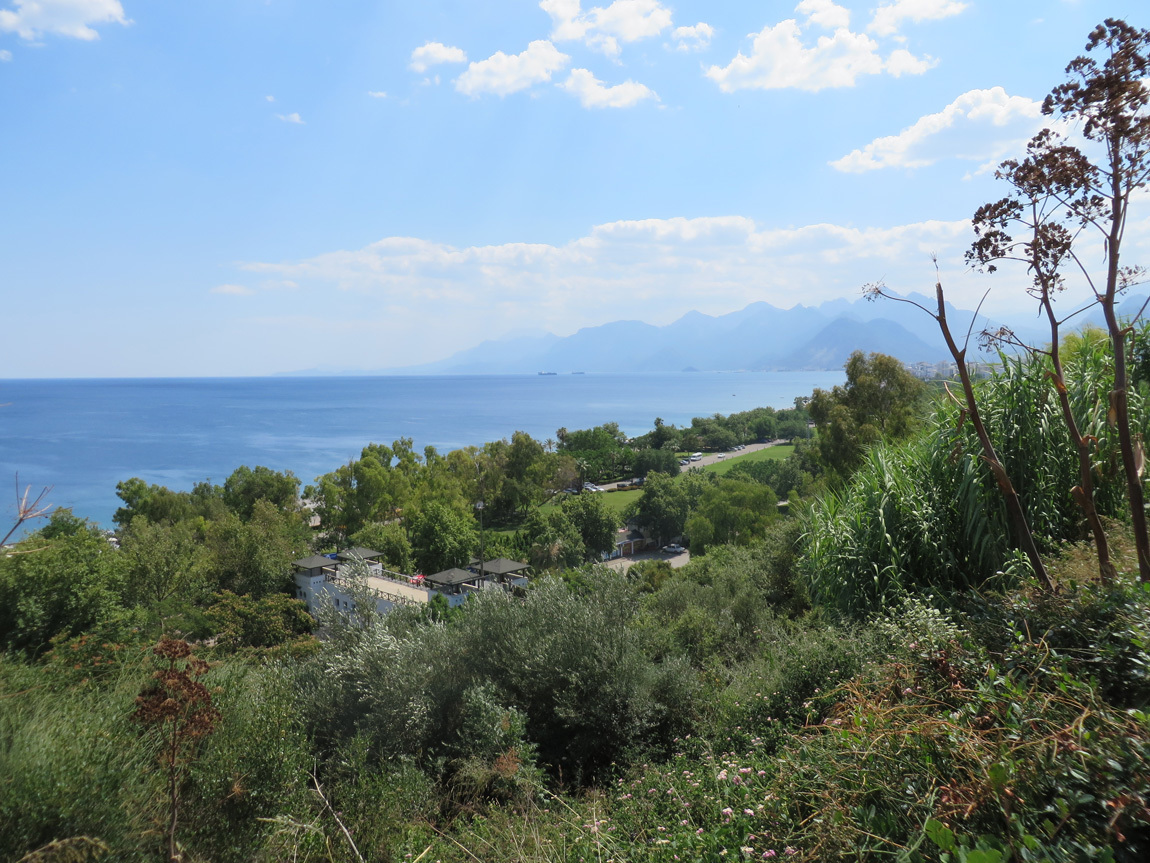
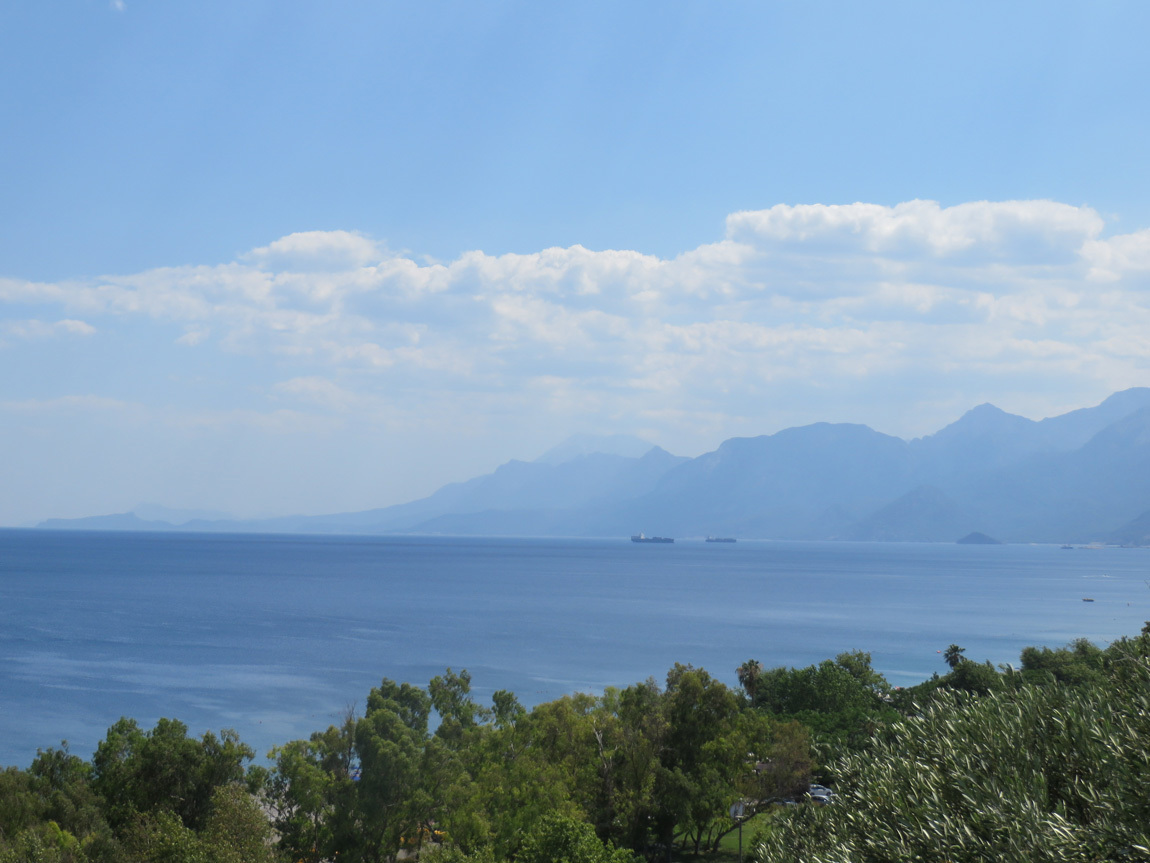
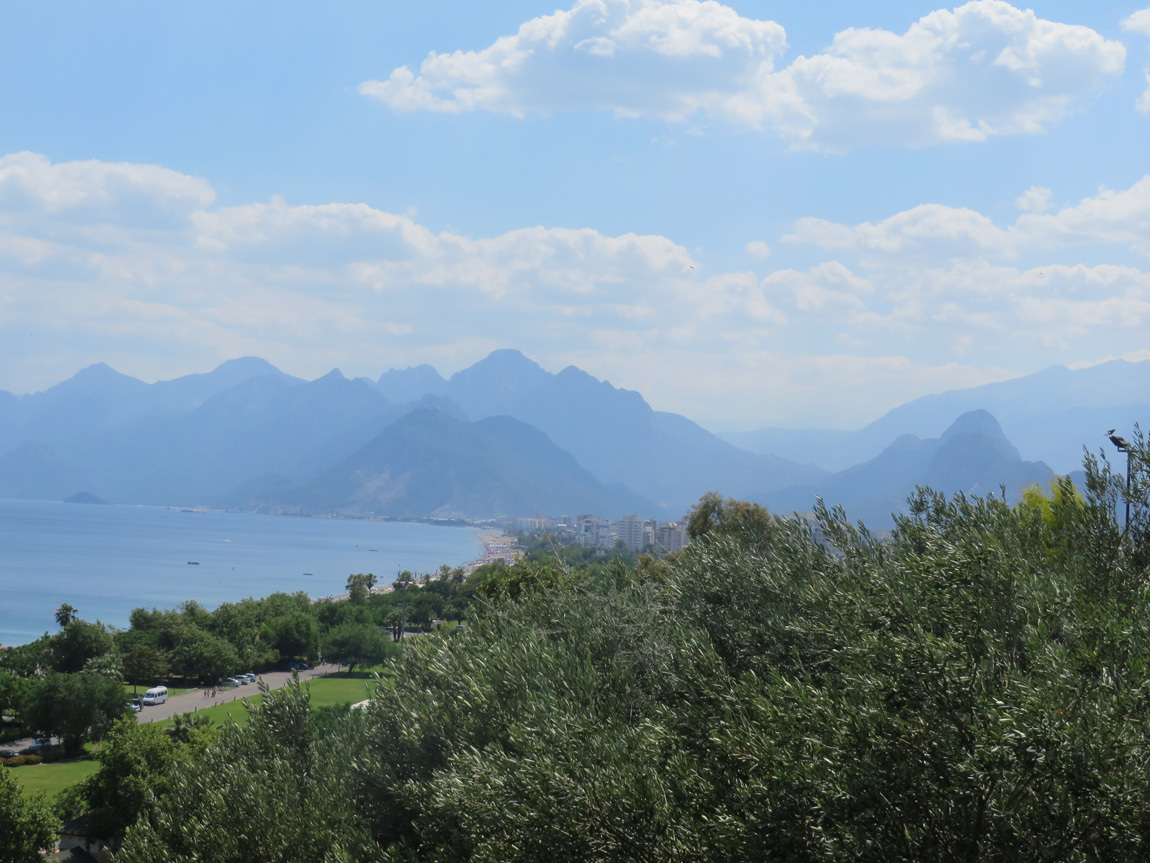
Zoom in on the people on the beaches.
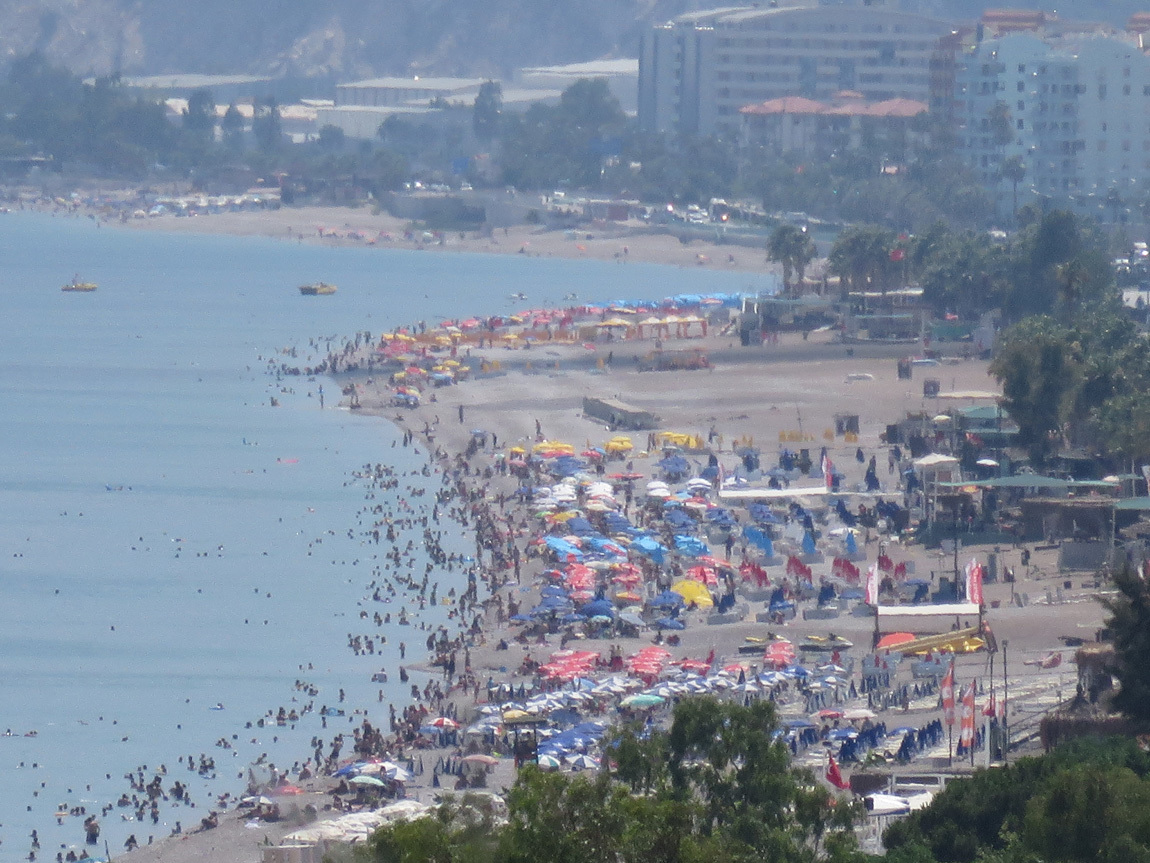
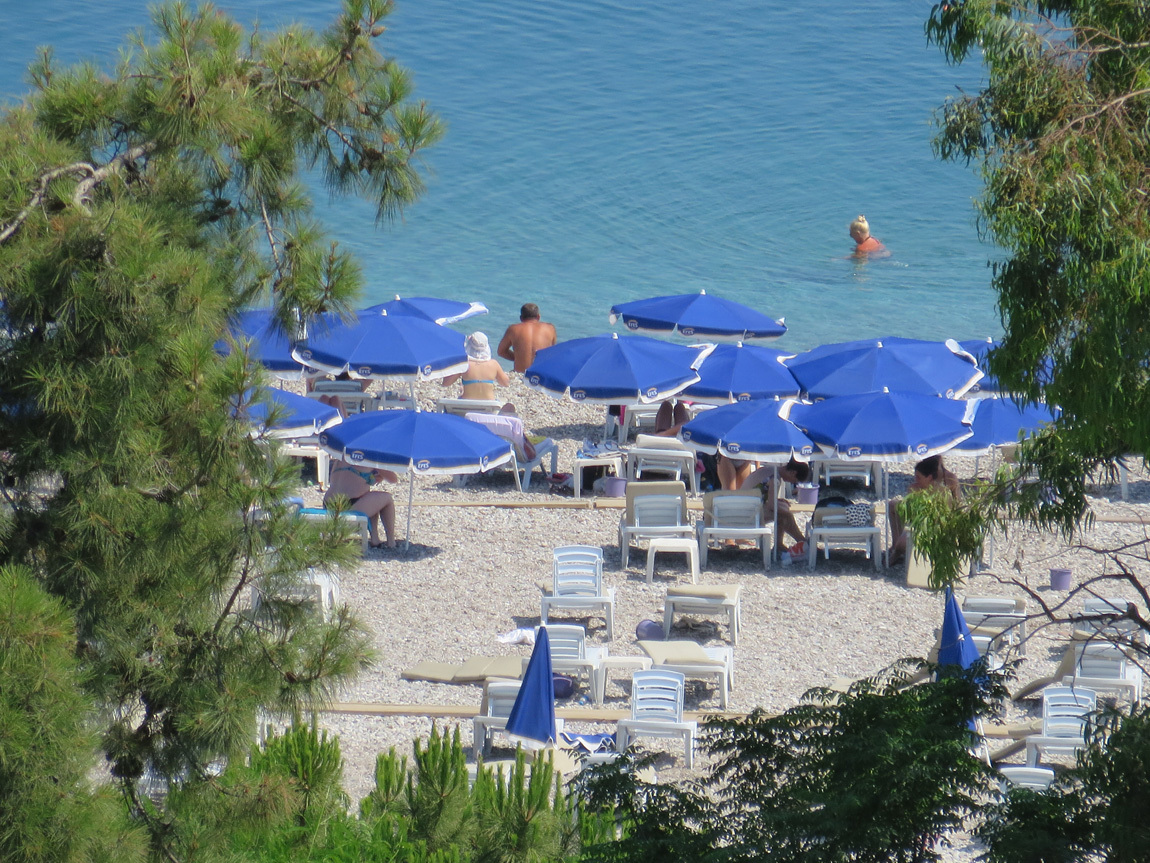
This is the cool entryway to the foliage-covered steps. The first time we came up to it, we had no idea it was the way down to the beaches, until we saw some Turkish people pop out of it.
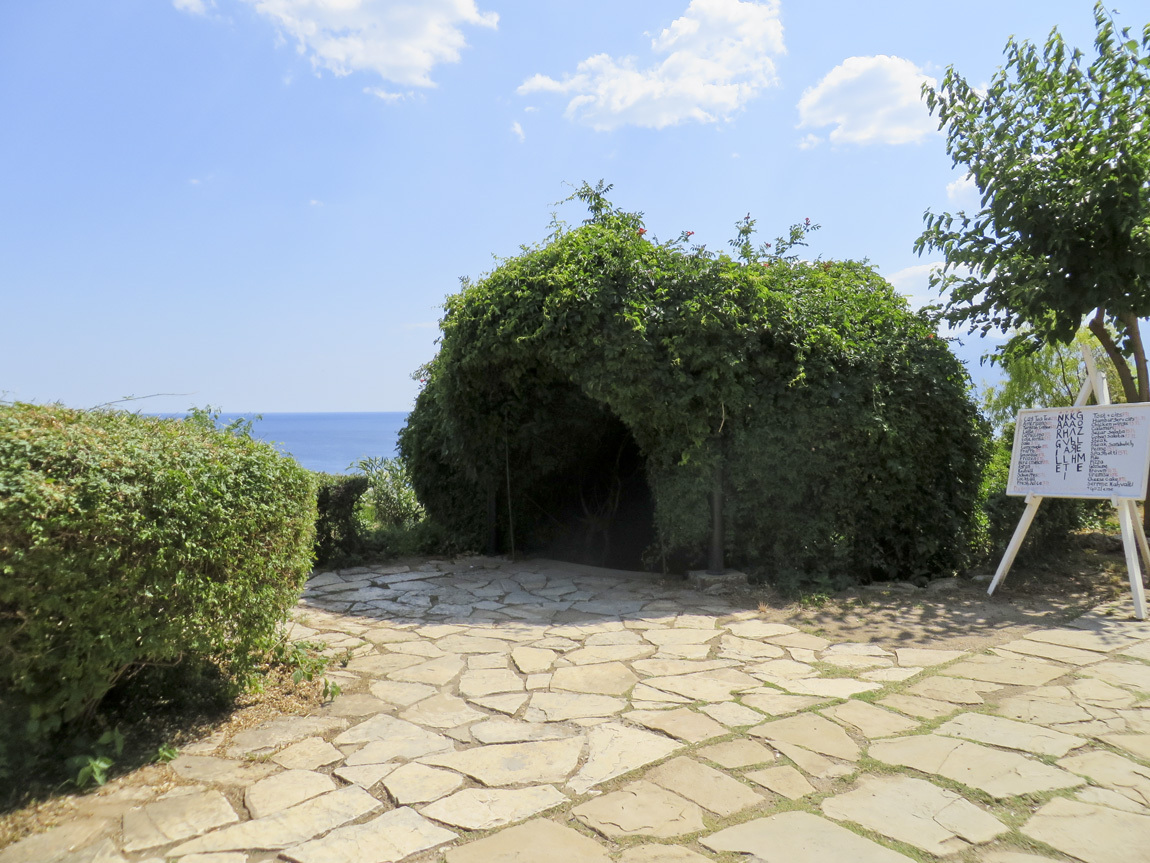
It was like entering a secret forest.
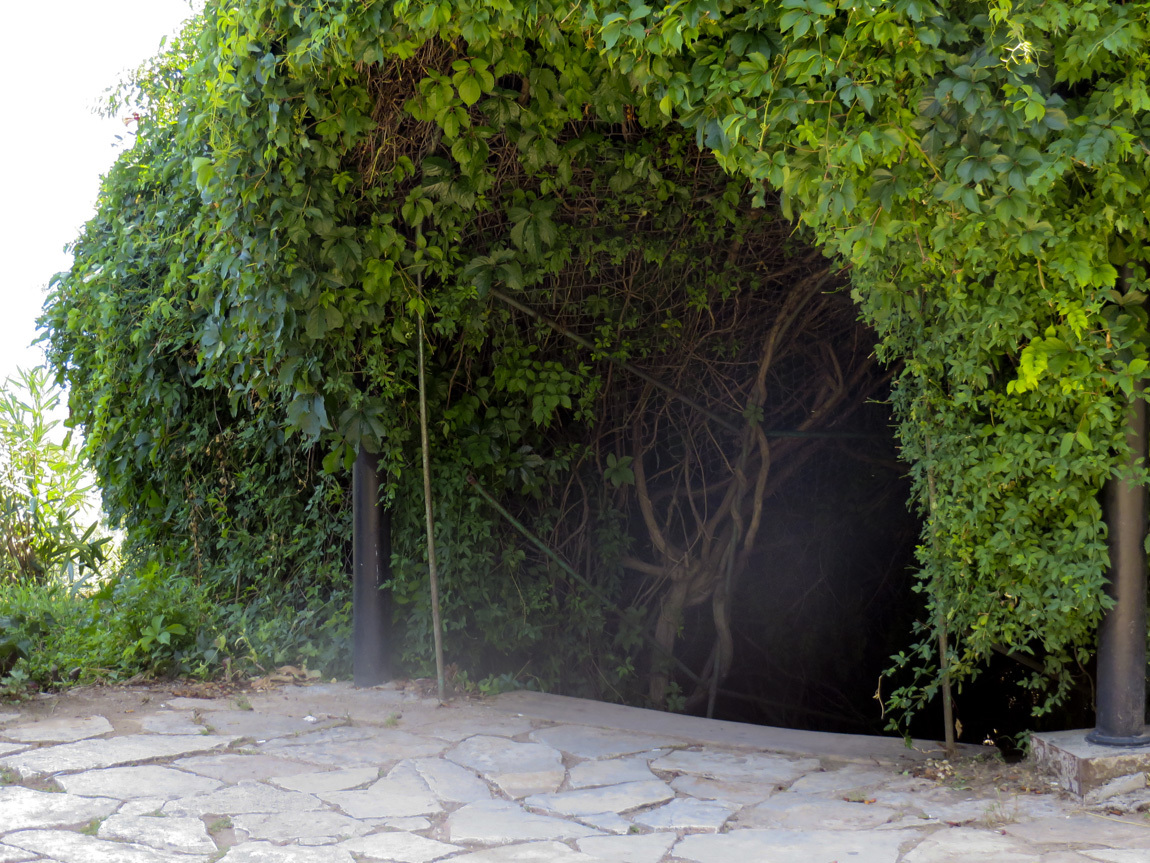
After a couple flights of stairs there would be a landing with a couple shops, like for henna tatoos and street food. Then you descend another couple flights, and more shops.
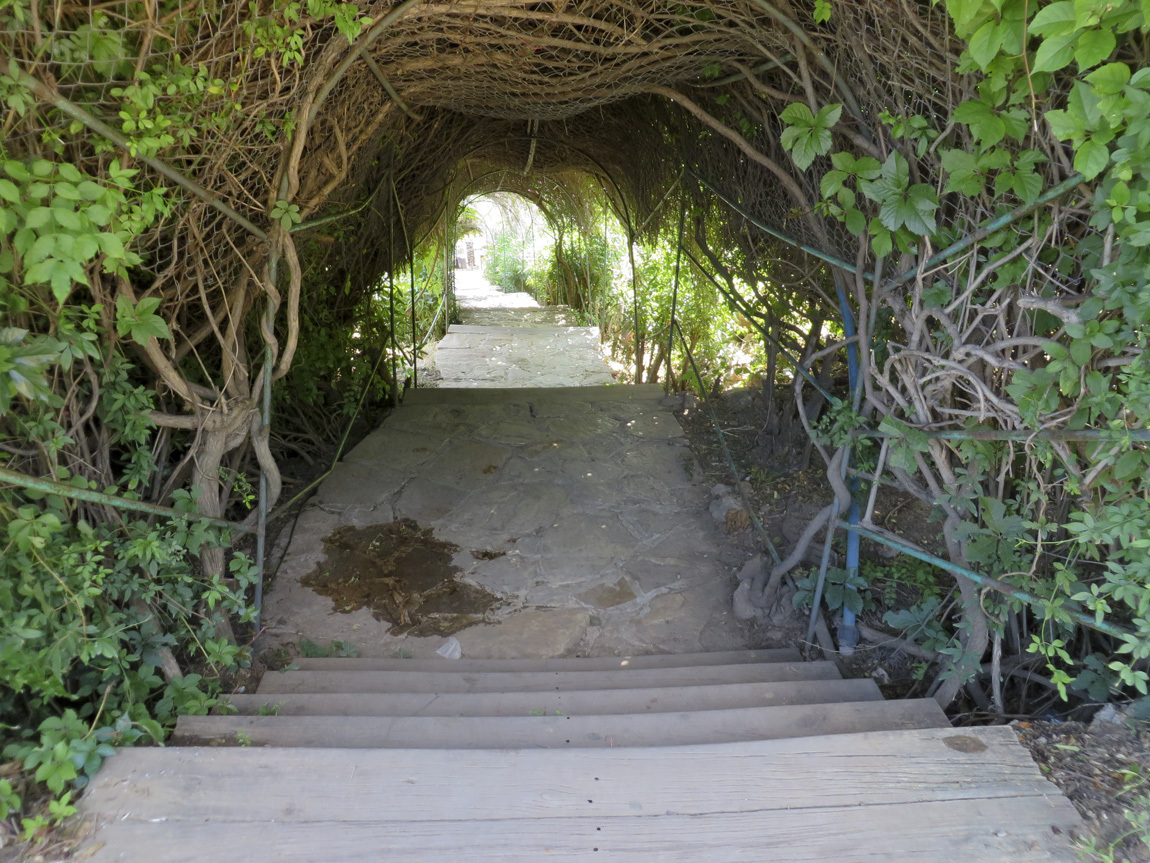
We were on a mission to get something other than kebabs and meze: like hamburgers! And we found them, great ones, fresh and perfect. And fries. And Efes beer.
We found a spot on the shore where chairs and umbrellas were for rent - 10 lira, a great deal. We put down our towels and - how wonderful! - a young man came to sell us cold beers! The beach was made of big hot pebbles instead of sand. The water was heavenly and warm and clear and the views spectacular. When we swam close to the beach, we felt cold water mixing with the warm sea water. Must be from undergound streams from the tall mountains. It was an amazing spot.
I could have stayed several more days enjoying that beach. But alas, this is our last day in this lovely spot.
We do have one more treat left in store, though. Our farewell dinner. We ready ourselves in our hotel room. Here is the view:
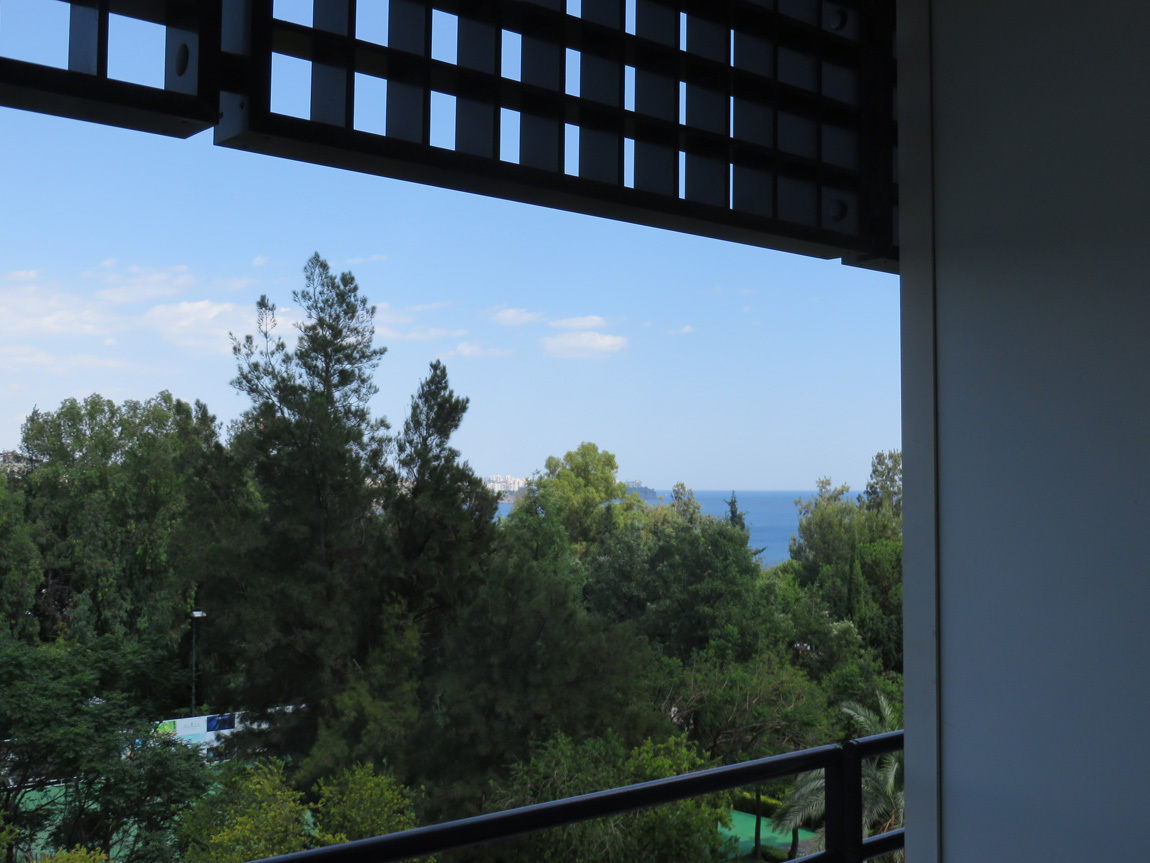
For the Oddysey Farewell Dinner, Ali took us to a restaurant high on the cliffs with a grand view of the resort area. The food was over-the-top great, from meze to dessert. We had entertainment from friends of Ali, who used to be a Turkish folk music performer himself. Then they projected "Go Colorado Buffalos" on the bank of cliffs behind us. Luckily, one of our tour members had a photo taken of all of us. What a time.
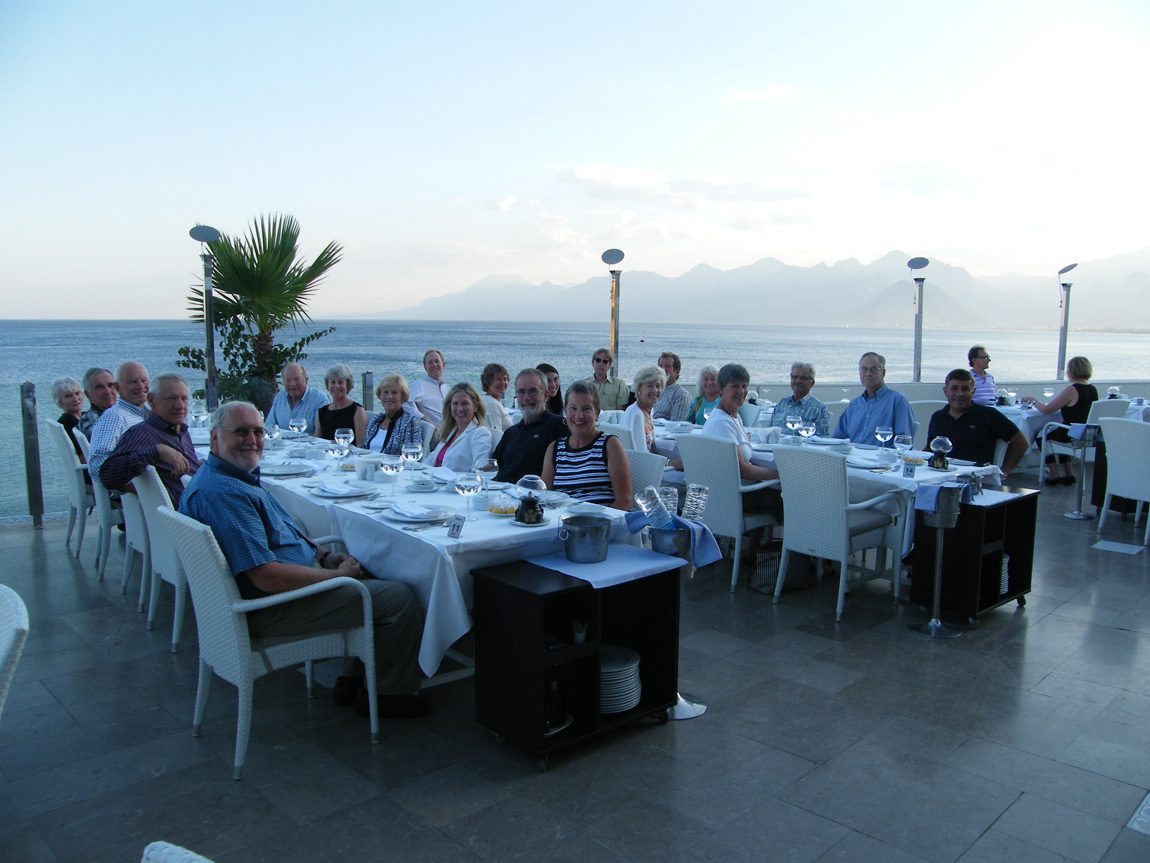
A perfect ending to a near-perfect tour. Thank you Oddysey, thank you Ali.
Navigation:
first Turkey post
At the top of the sea cliffs, a pathway runs along the top of the cliff. Lots of restaurants, some fancy, and tourist stops.

Here is the view to the left, of the buildings on the cliffs above the Mediterranean Sea.

The view to the right, of the steep mountains that take off right at the shore.



Zoom in on the people on the beaches.


This is the cool entryway to the foliage-covered steps. The first time we came up to it, we had no idea it was the way down to the beaches, until we saw some Turkish people pop out of it.

It was like entering a secret forest.

After a couple flights of stairs there would be a landing with a couple shops, like for henna tatoos and street food. Then you descend another couple flights, and more shops.

We were on a mission to get something other than kebabs and meze: like hamburgers! And we found them, great ones, fresh and perfect. And fries. And Efes beer.
We found a spot on the shore where chairs and umbrellas were for rent - 10 lira, a great deal. We put down our towels and - how wonderful! - a young man came to sell us cold beers! The beach was made of big hot pebbles instead of sand. The water was heavenly and warm and clear and the views spectacular. When we swam close to the beach, we felt cold water mixing with the warm sea water. Must be from undergound streams from the tall mountains. It was an amazing spot.
I could have stayed several more days enjoying that beach. But alas, this is our last day in this lovely spot.
We do have one more treat left in store, though. Our farewell dinner. We ready ourselves in our hotel room. Here is the view:

For the Oddysey Farewell Dinner, Ali took us to a restaurant high on the cliffs with a grand view of the resort area. The food was over-the-top great, from meze to dessert. We had entertainment from friends of Ali, who used to be a Turkish folk music performer himself. Then they projected "Go Colorado Buffalos" on the bank of cliffs behind us. Luckily, one of our tour members had a photo taken of all of us. What a time.

A perfect ending to a near-perfect tour. Thank you Oddysey, thank you Ali.
Navigation:
first Turkey post
